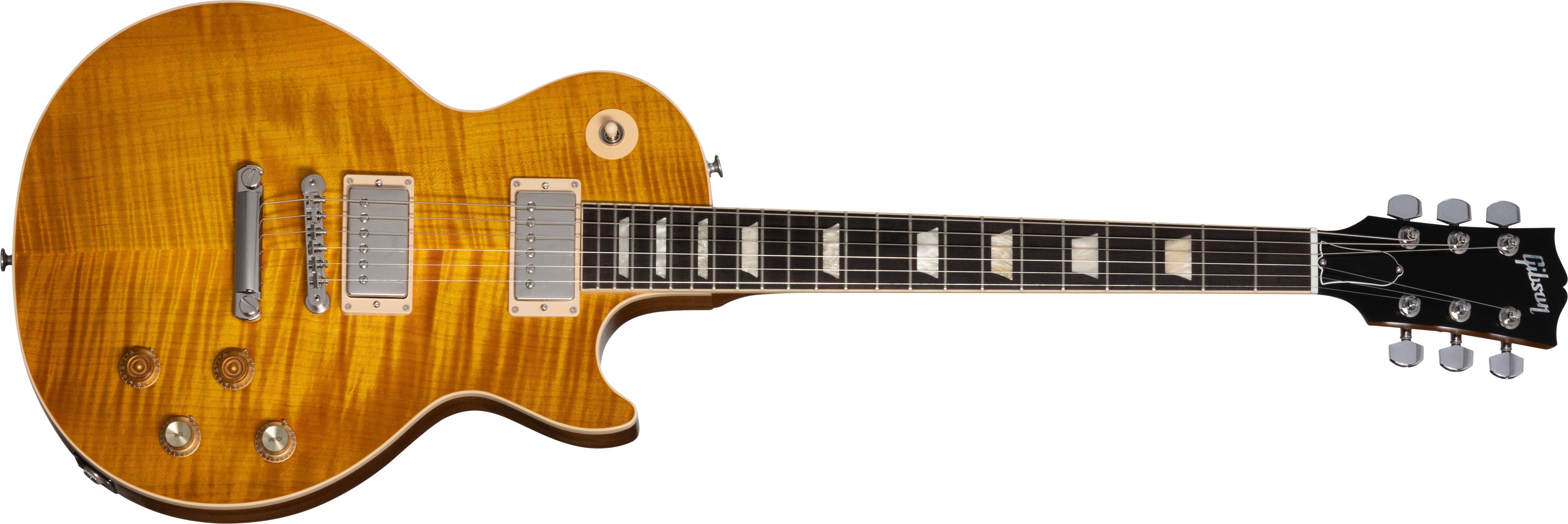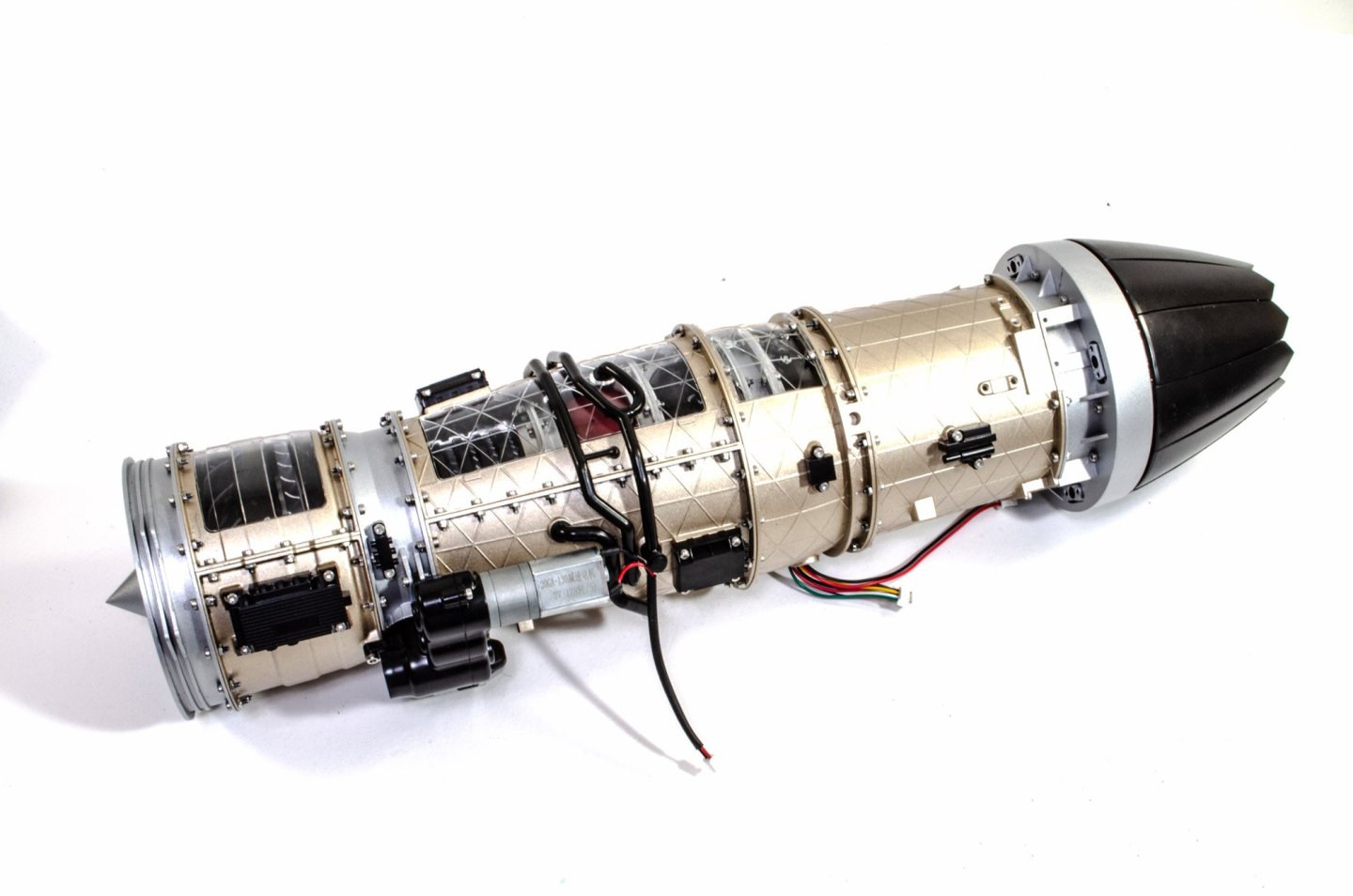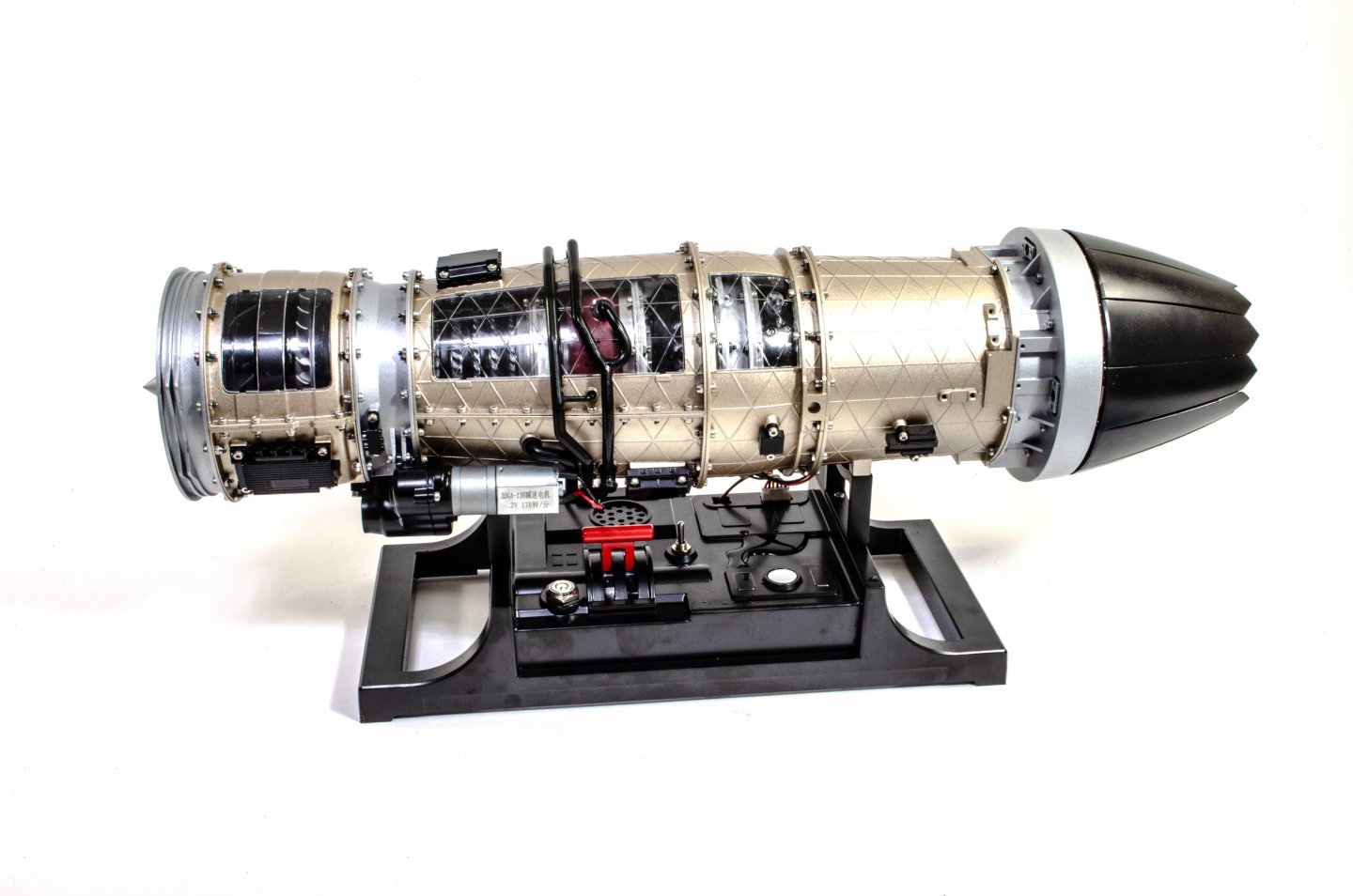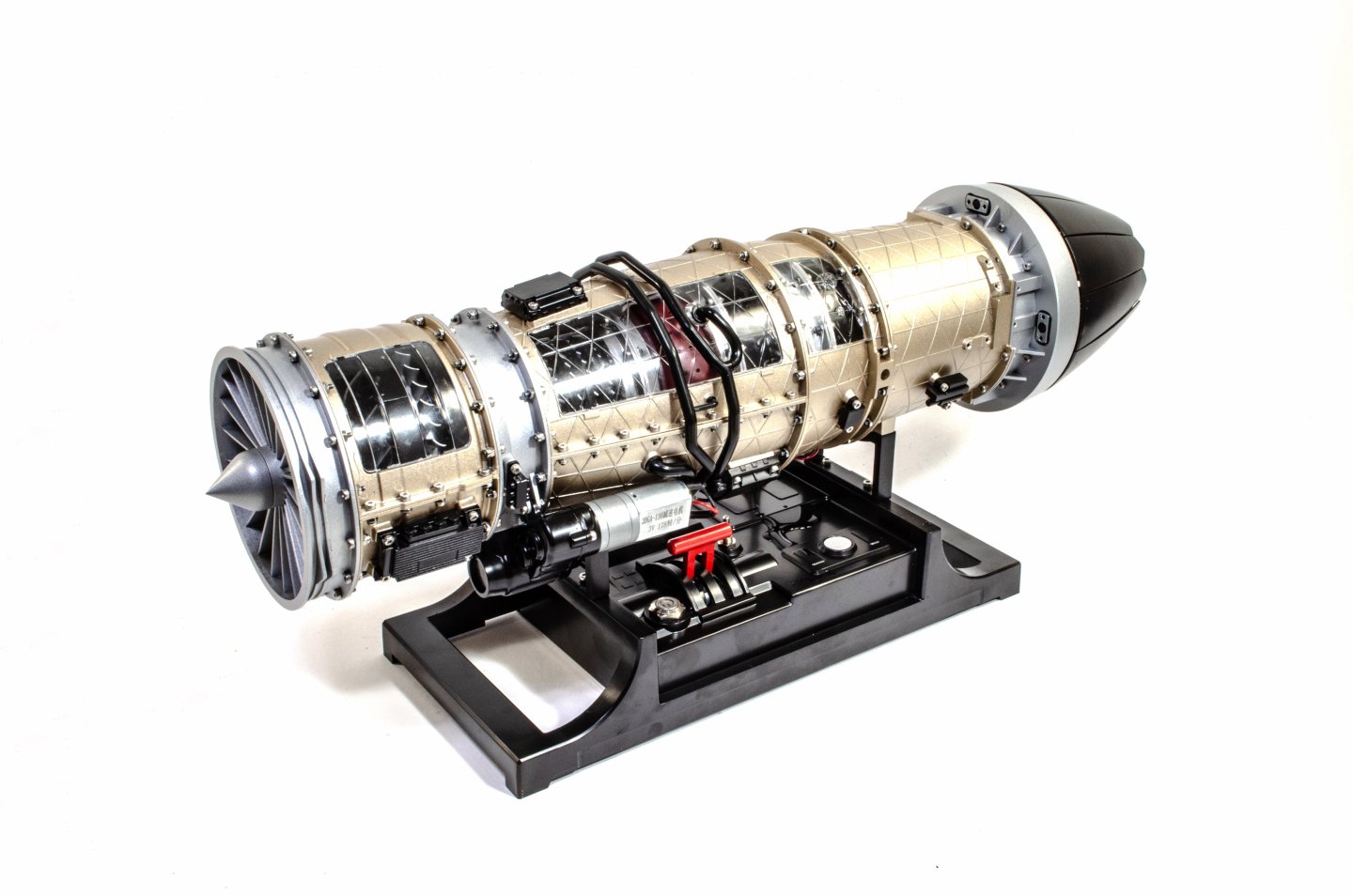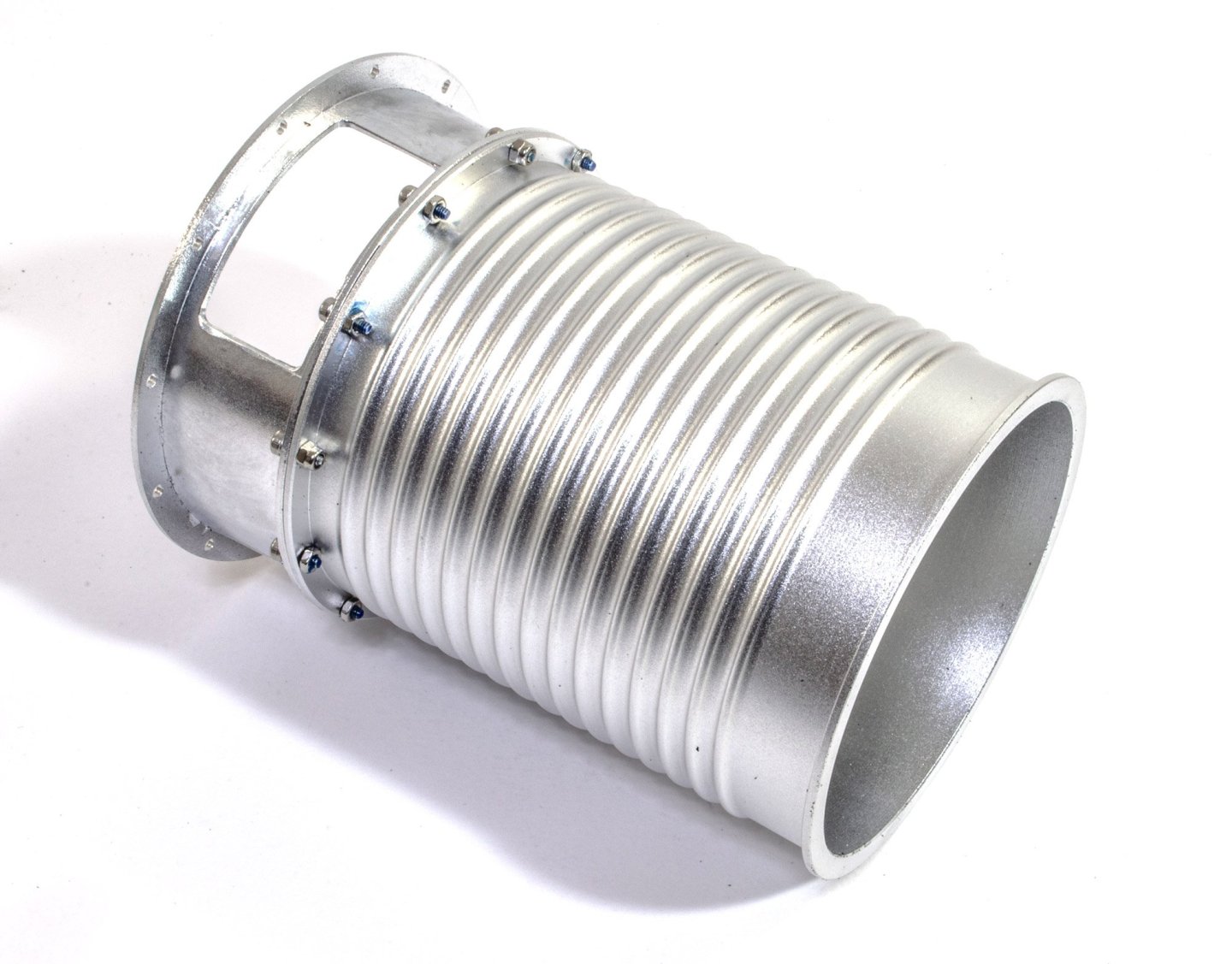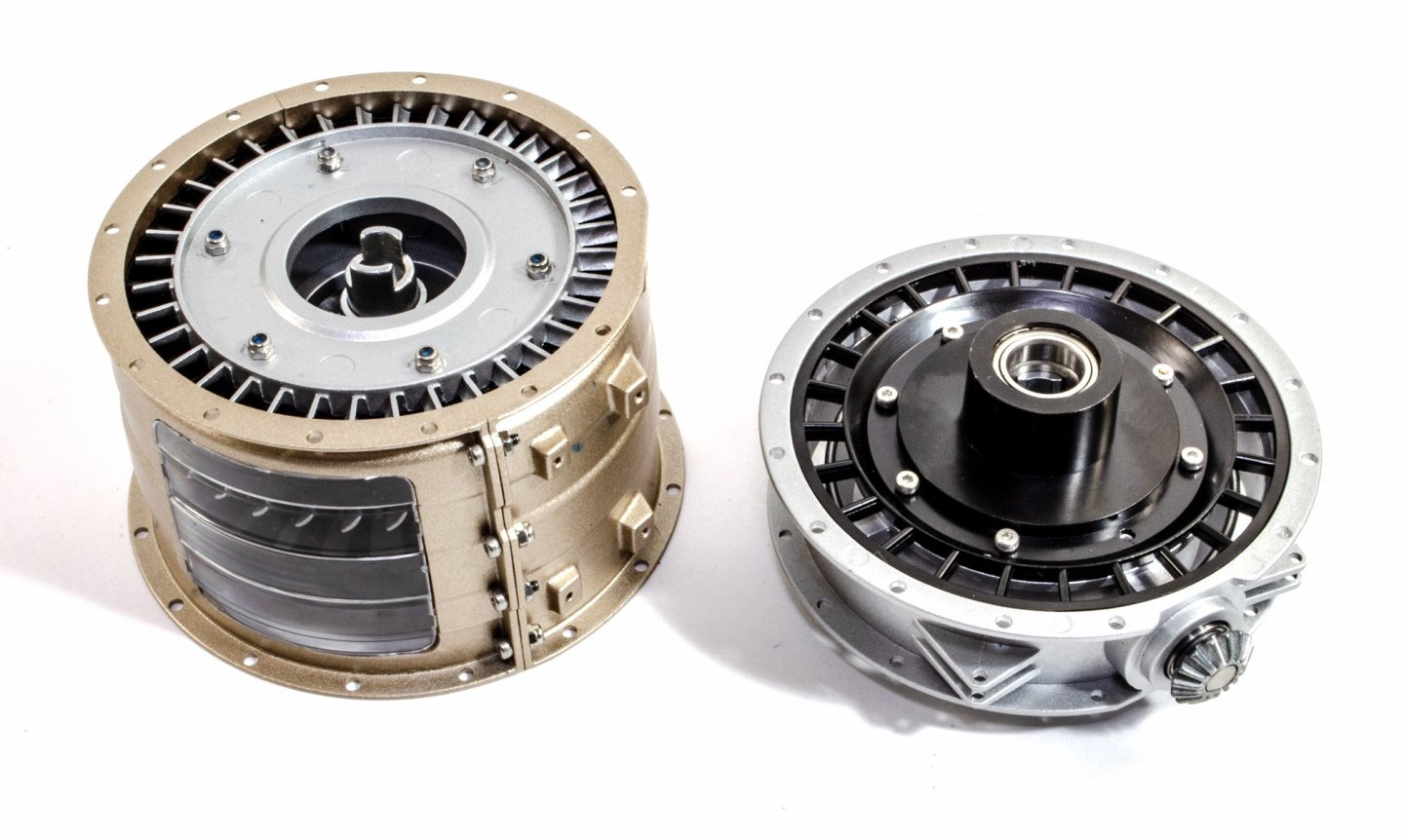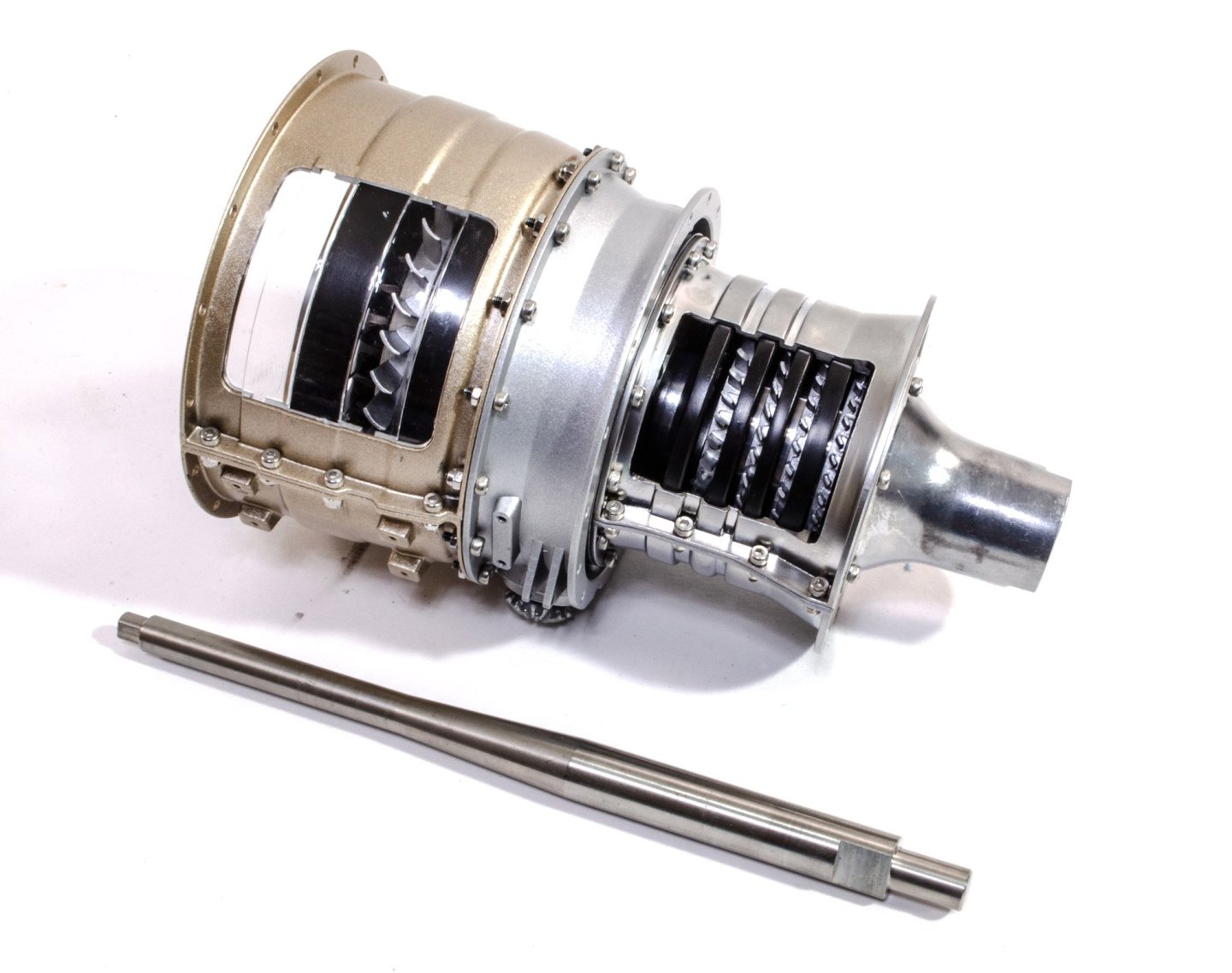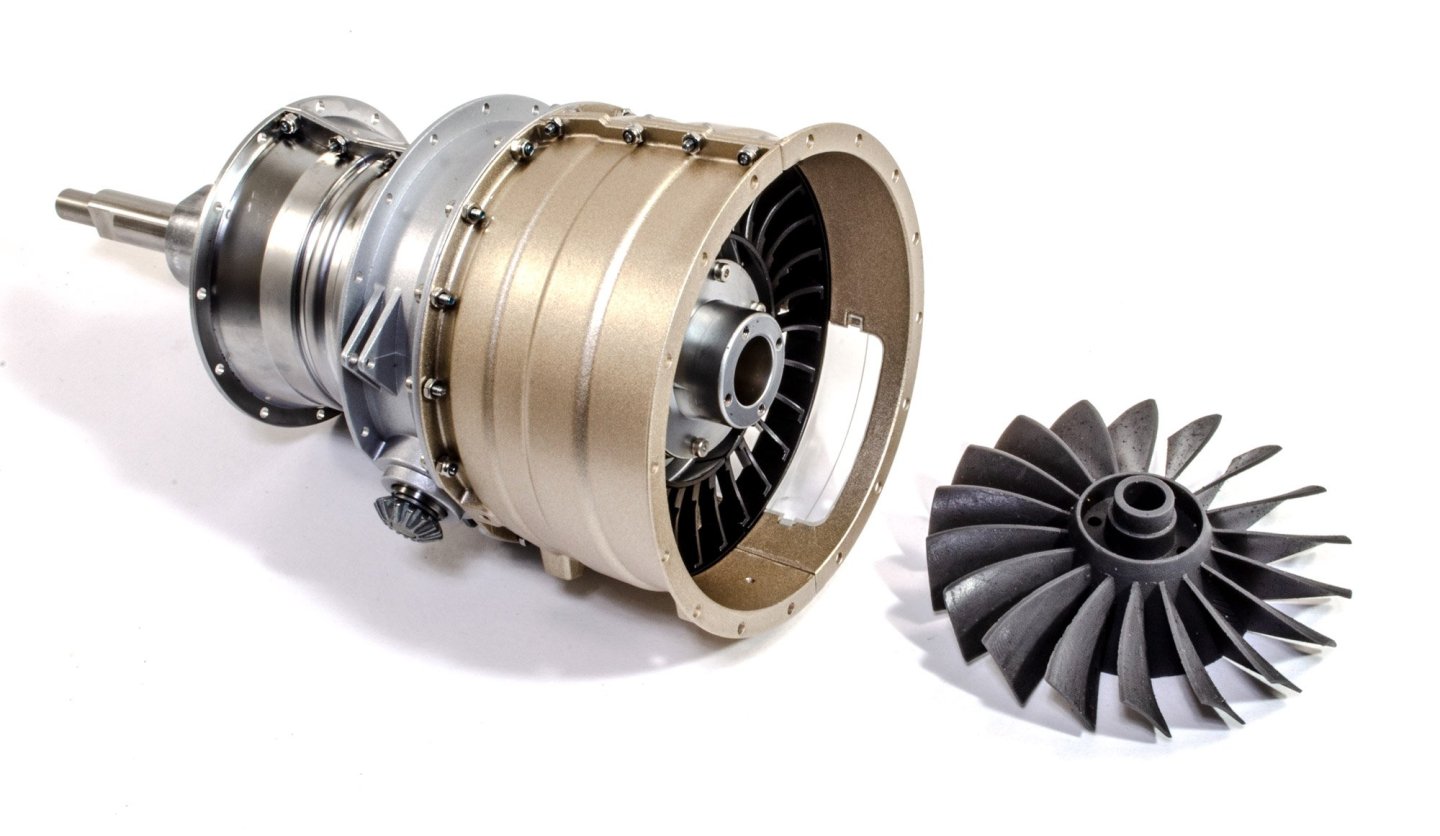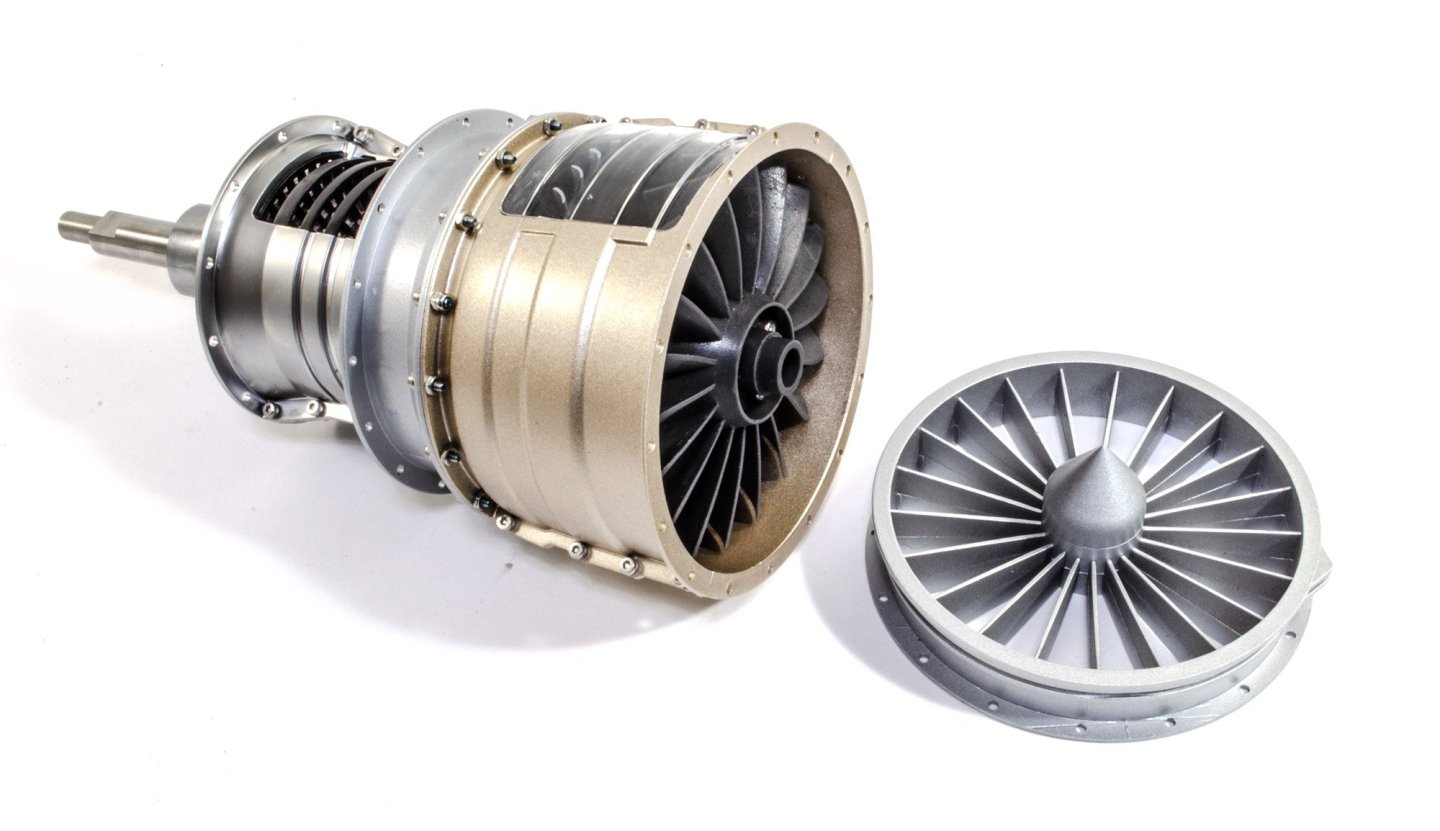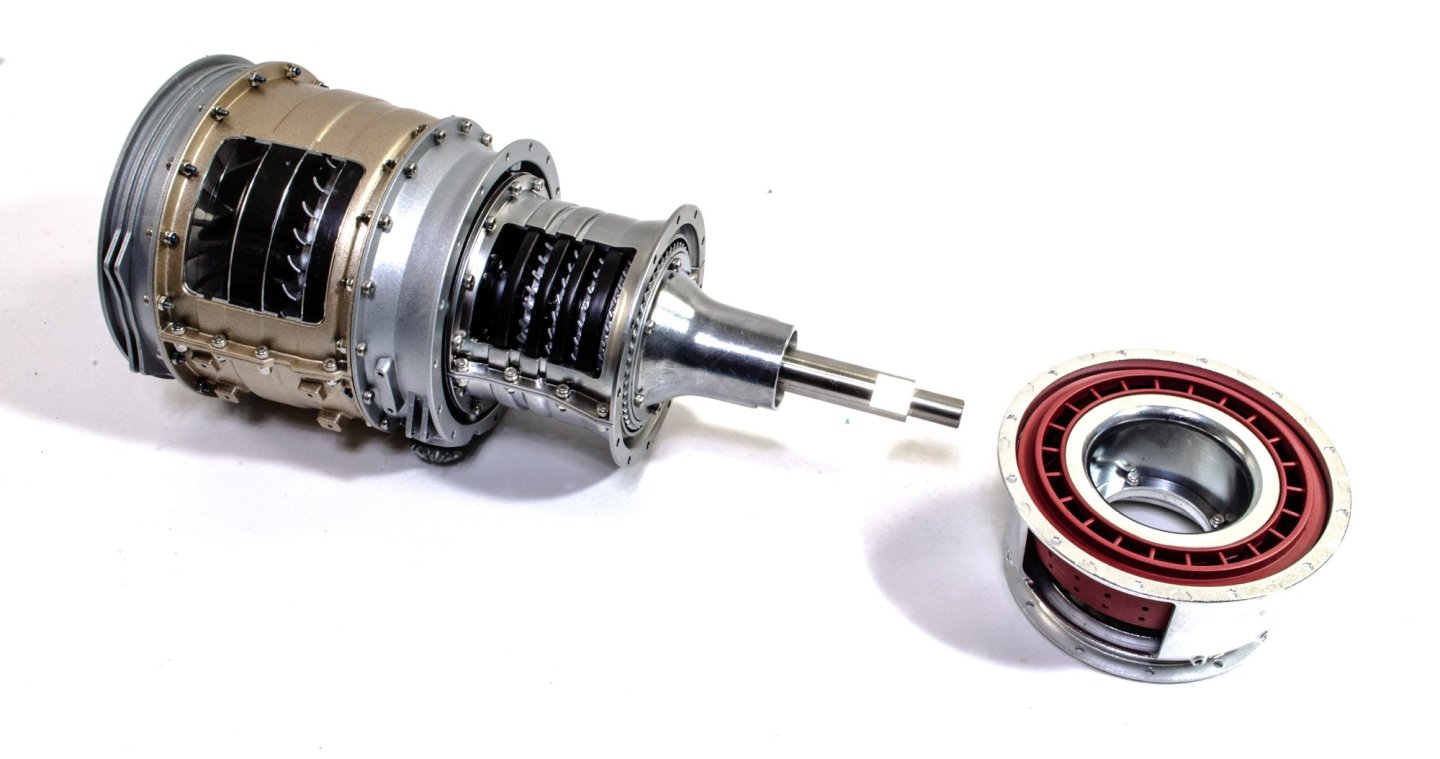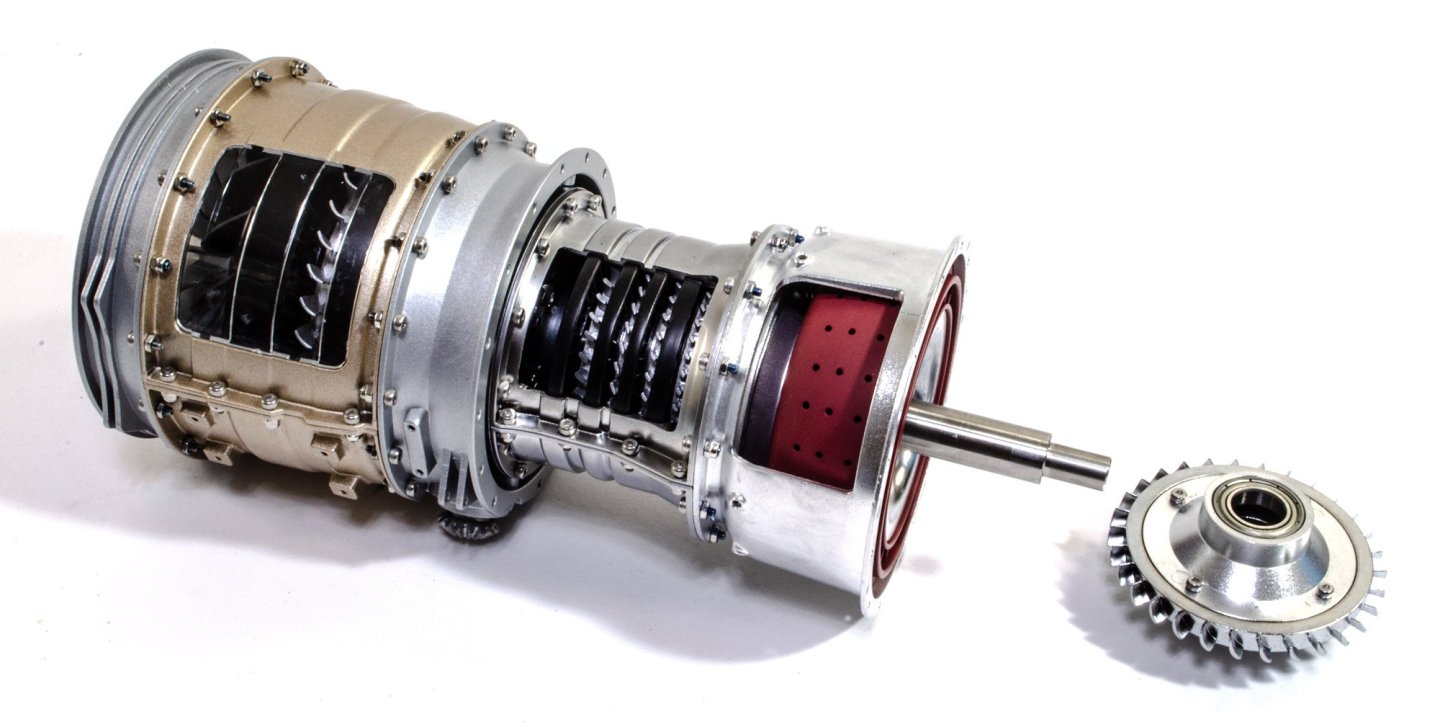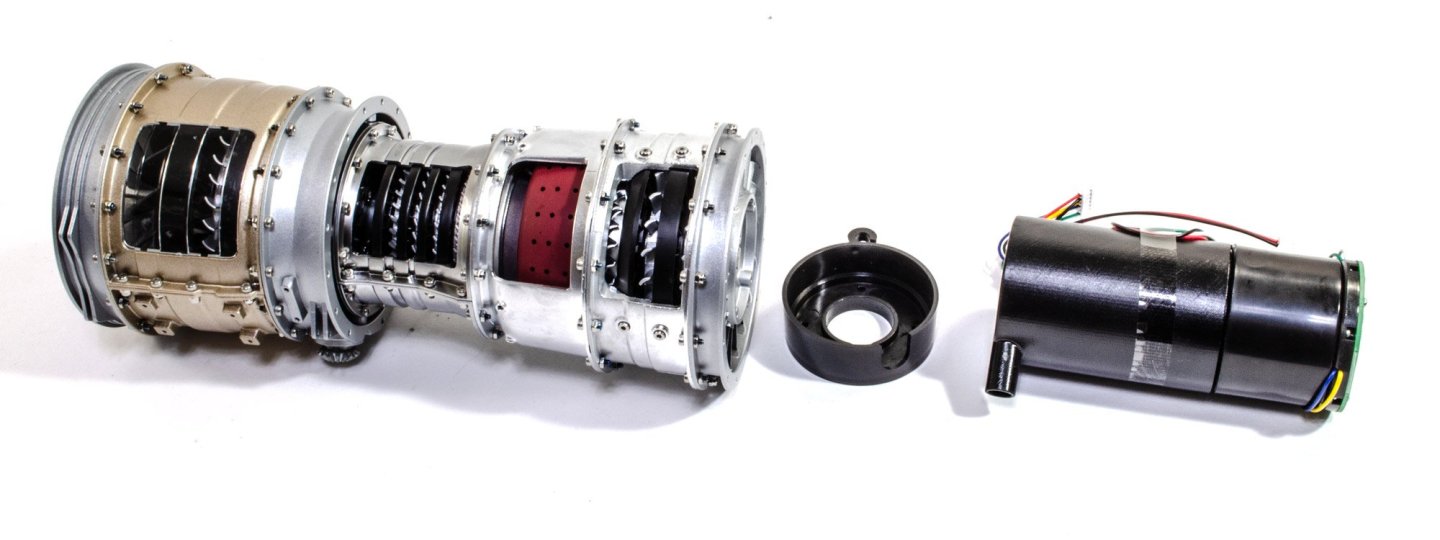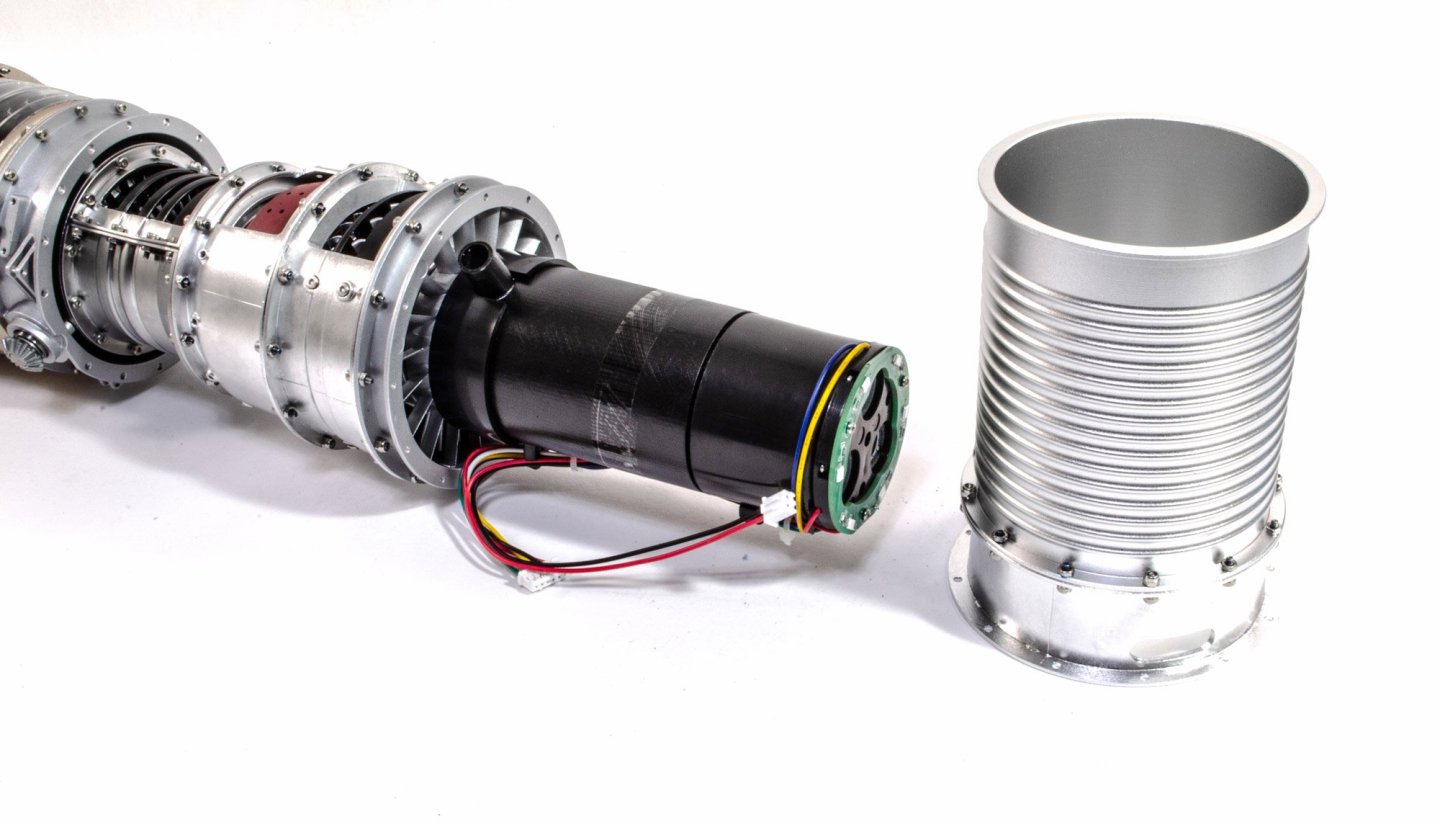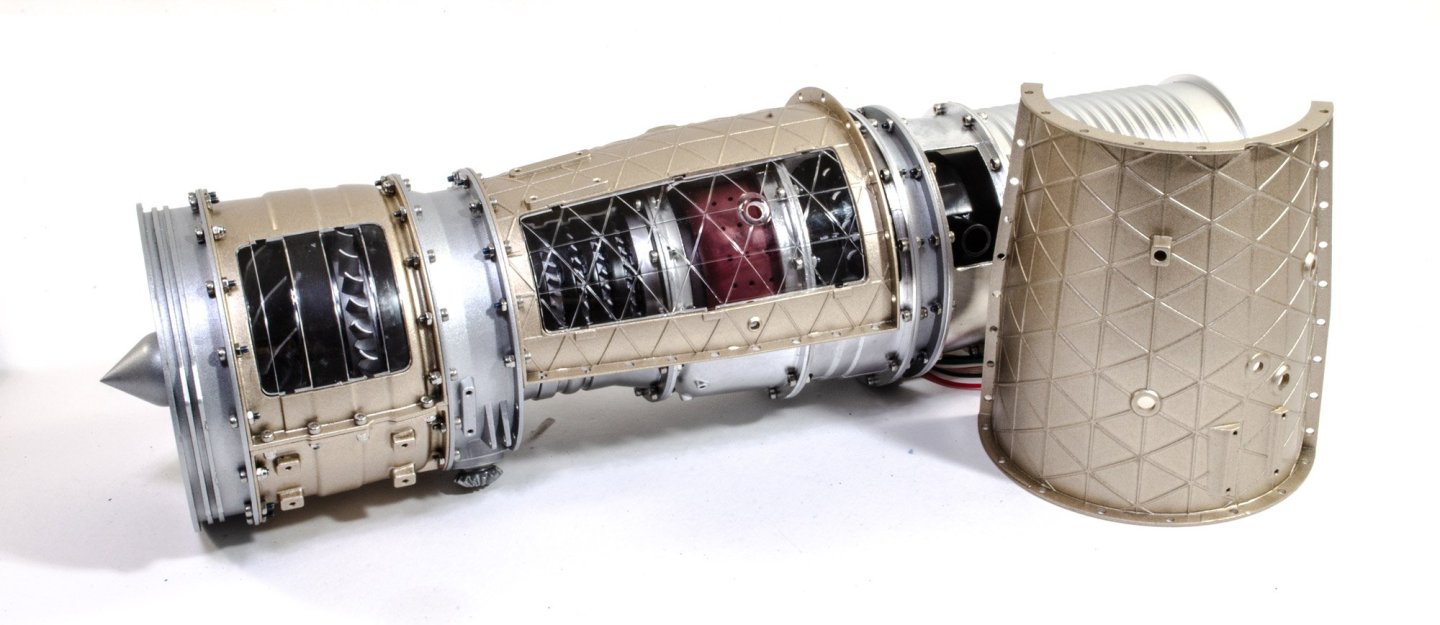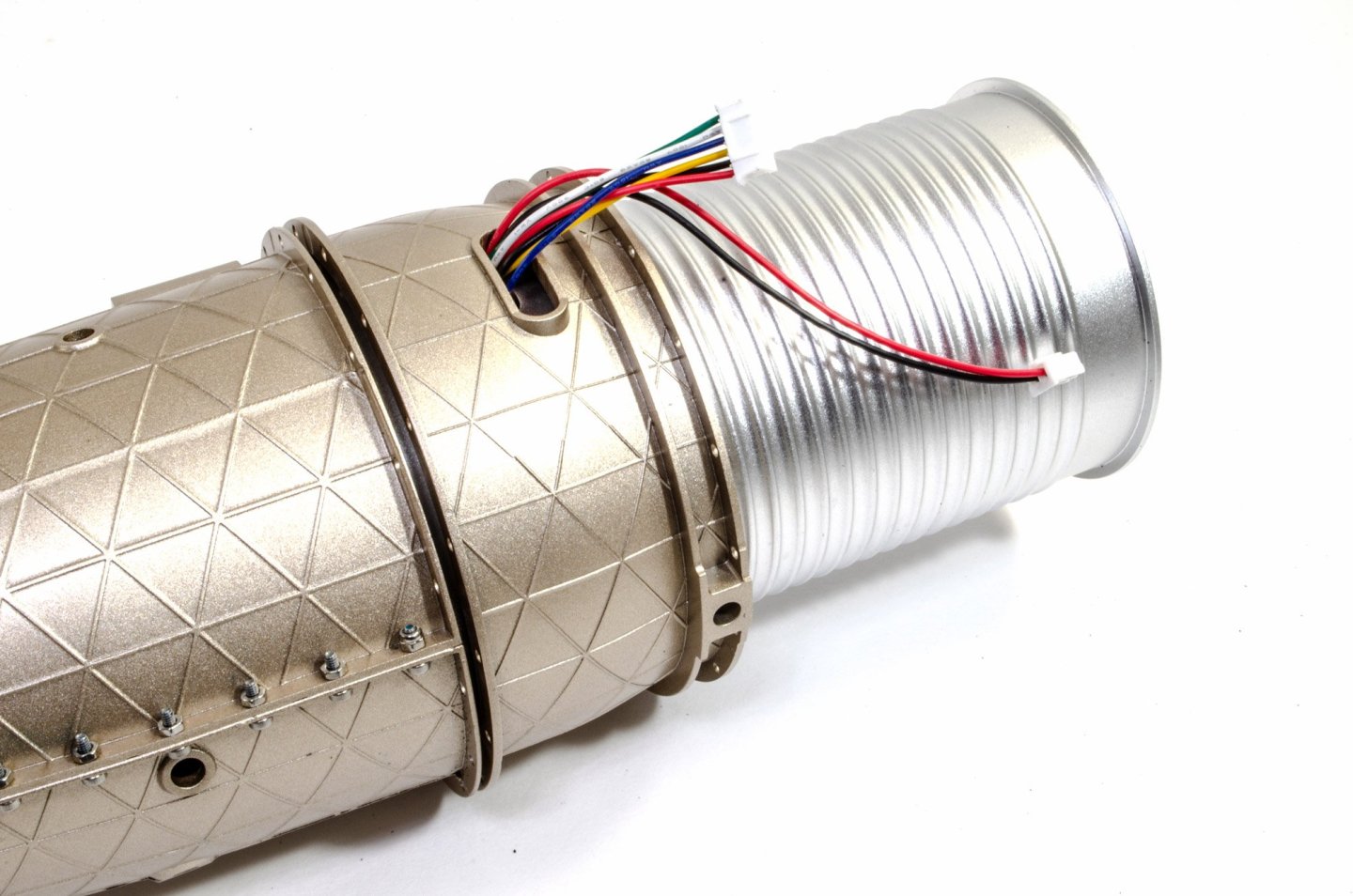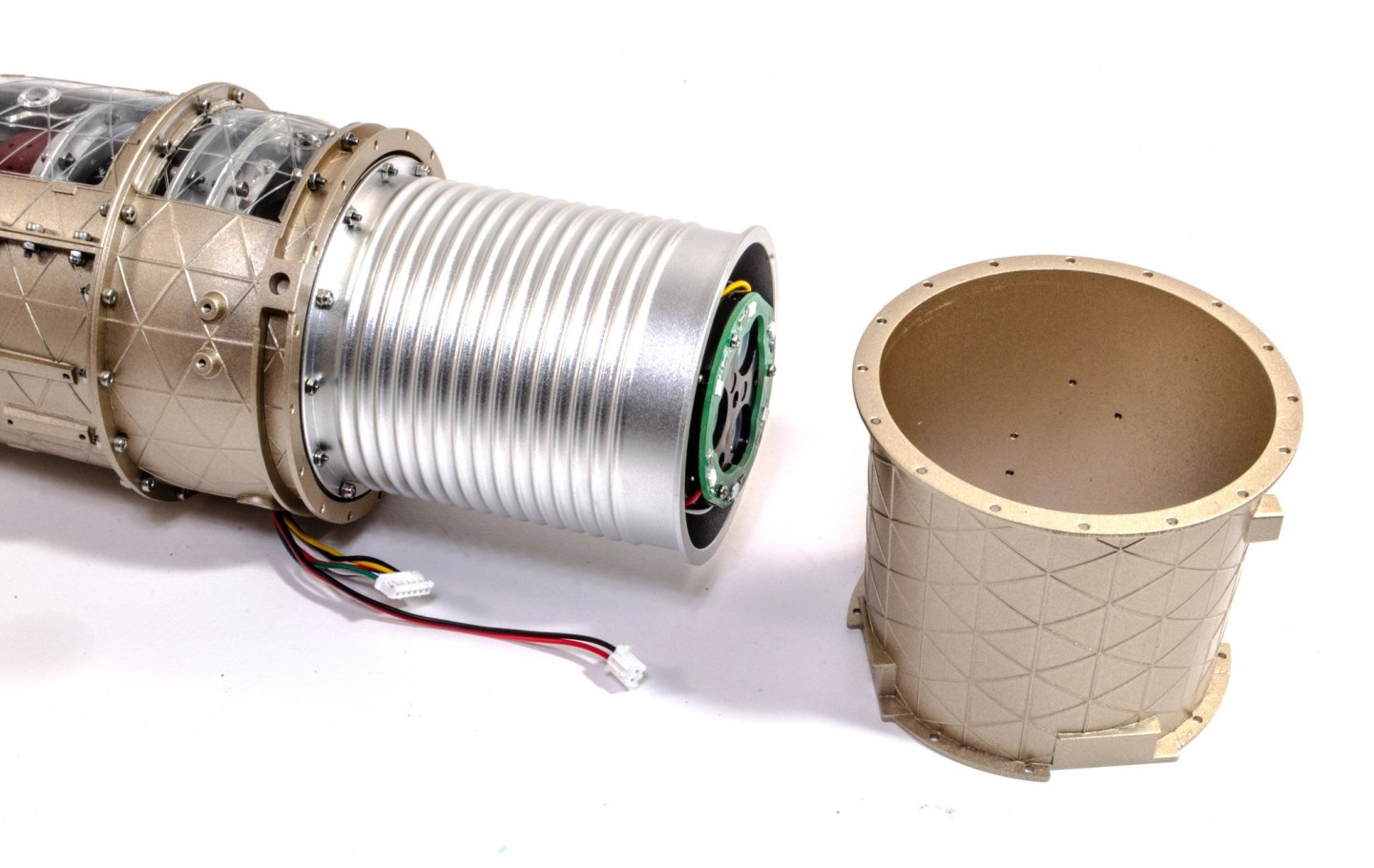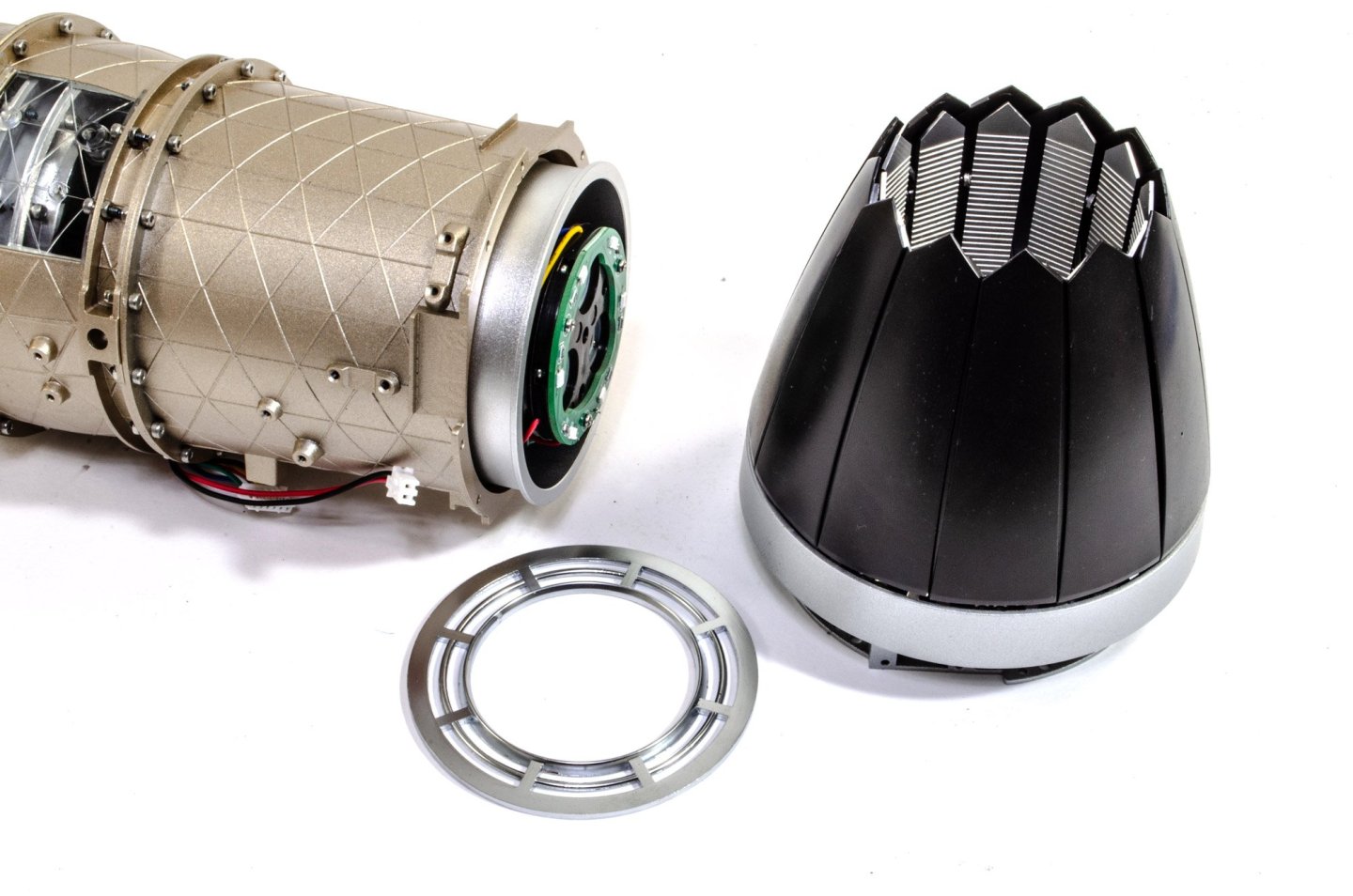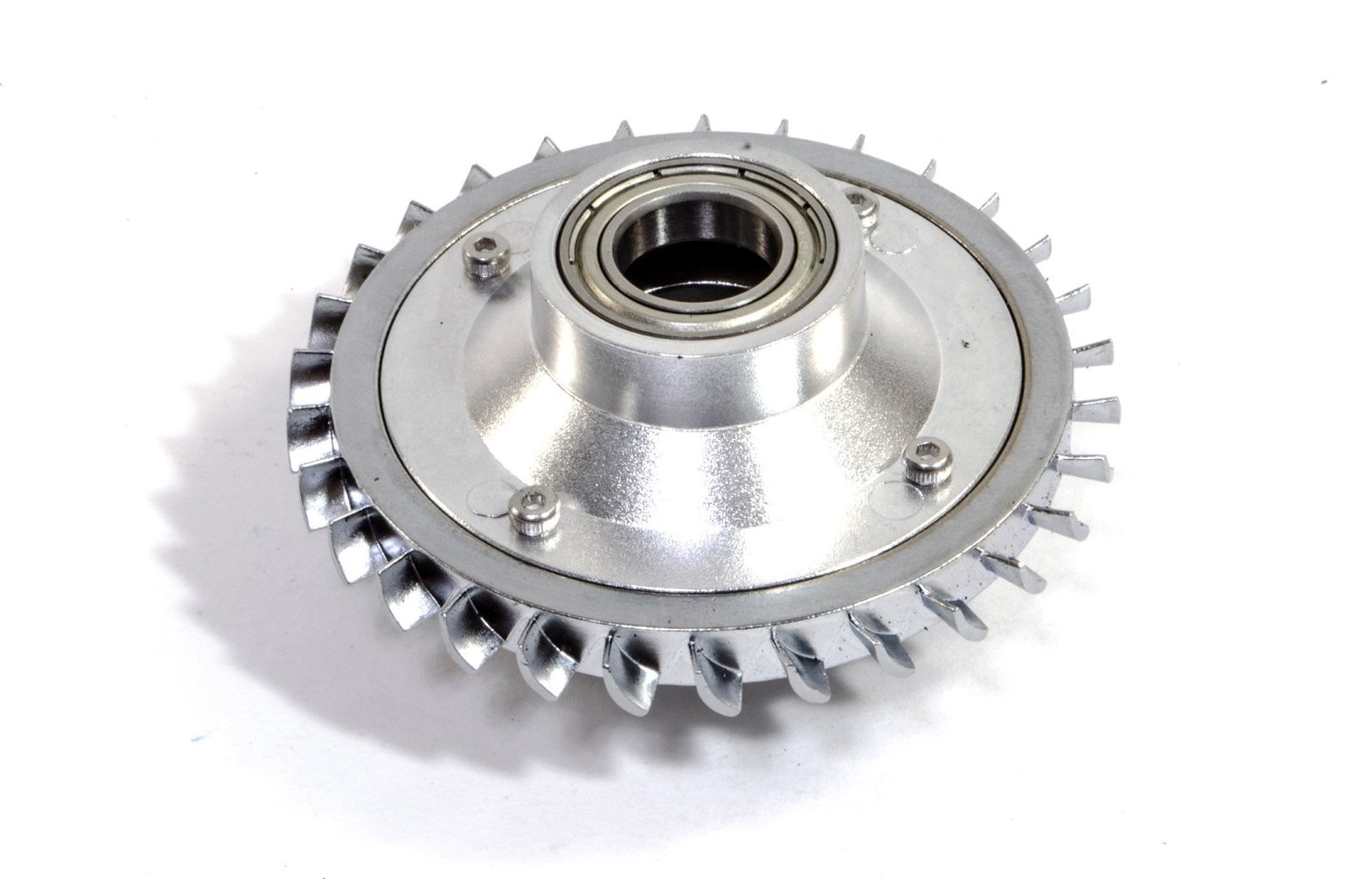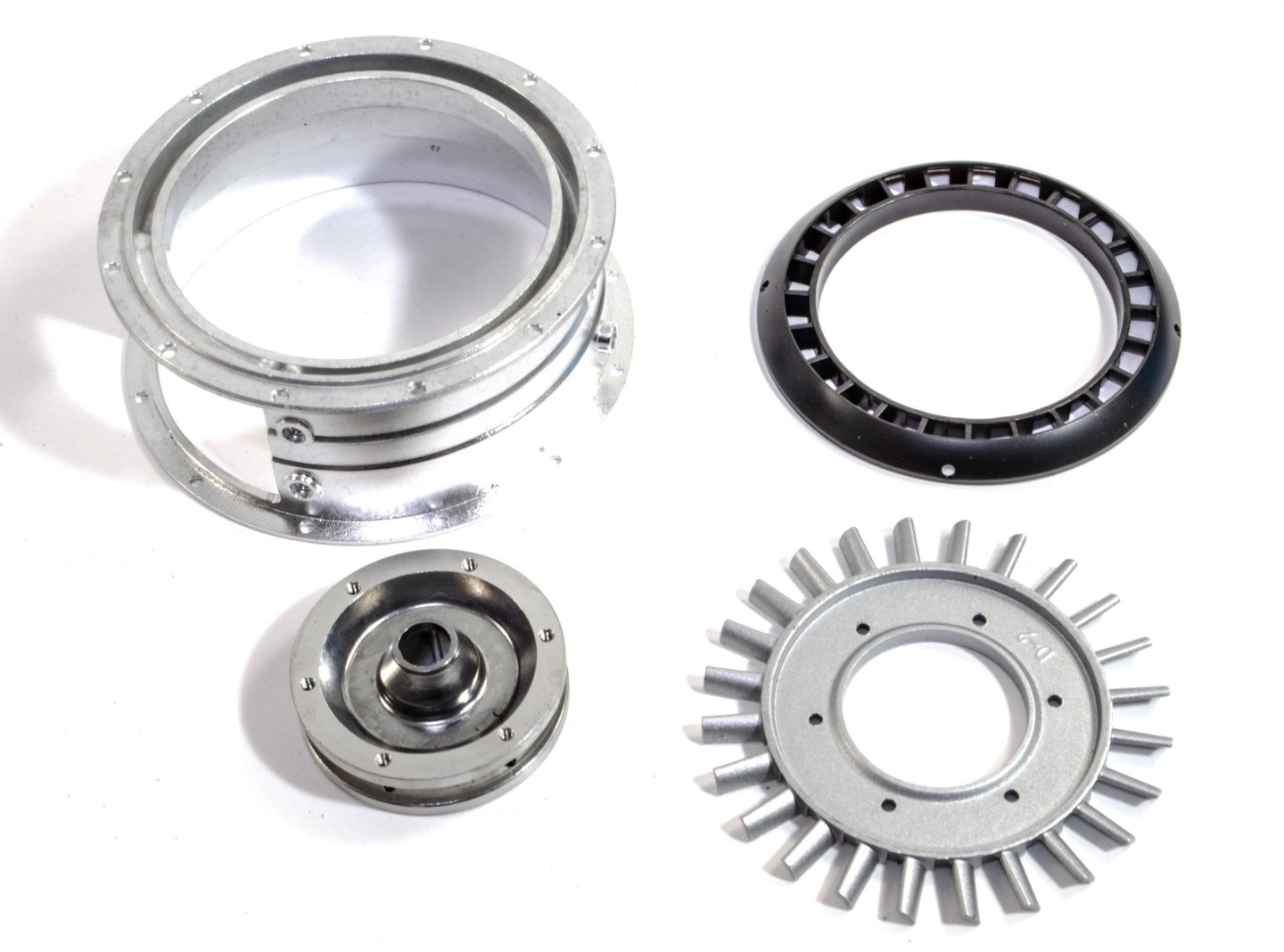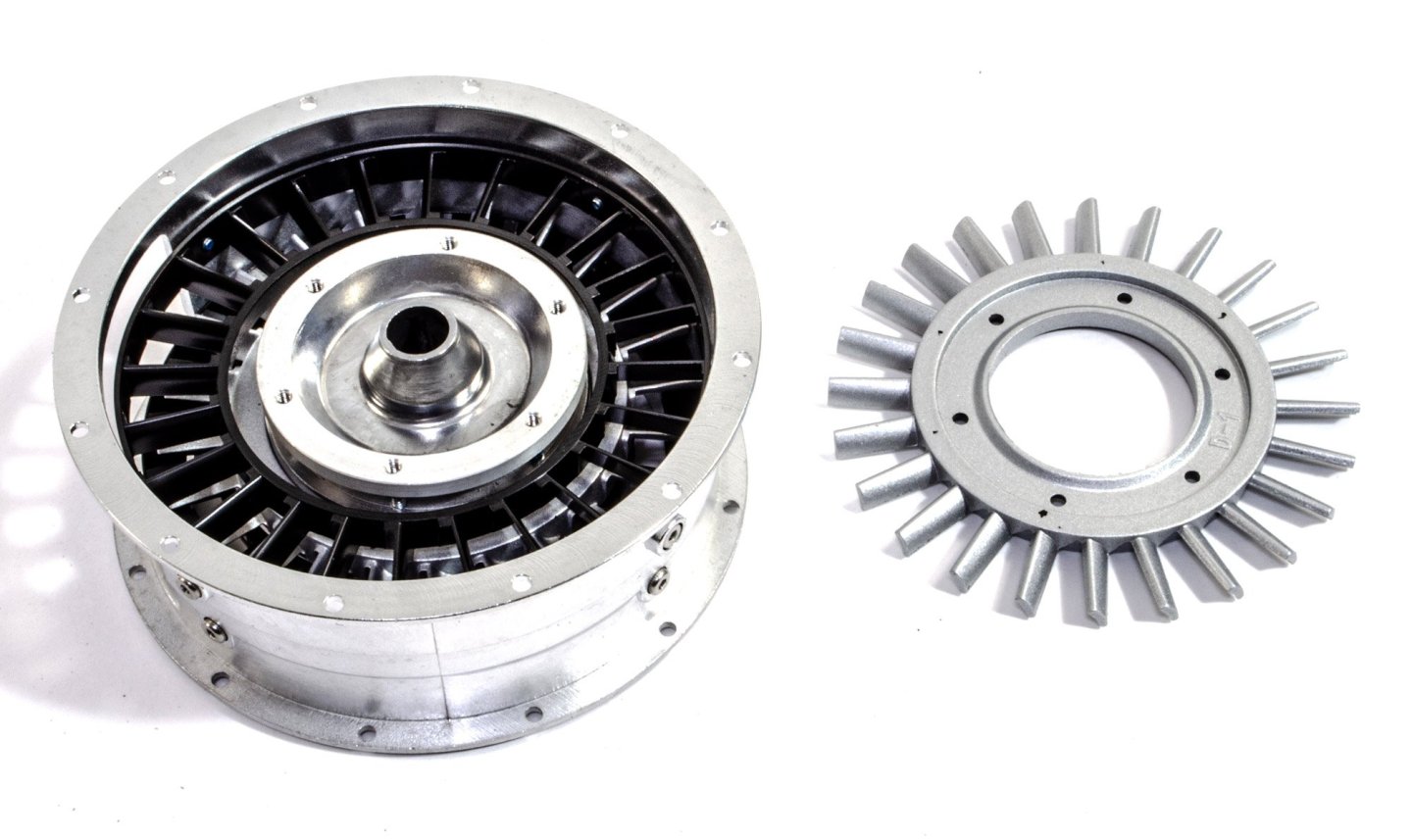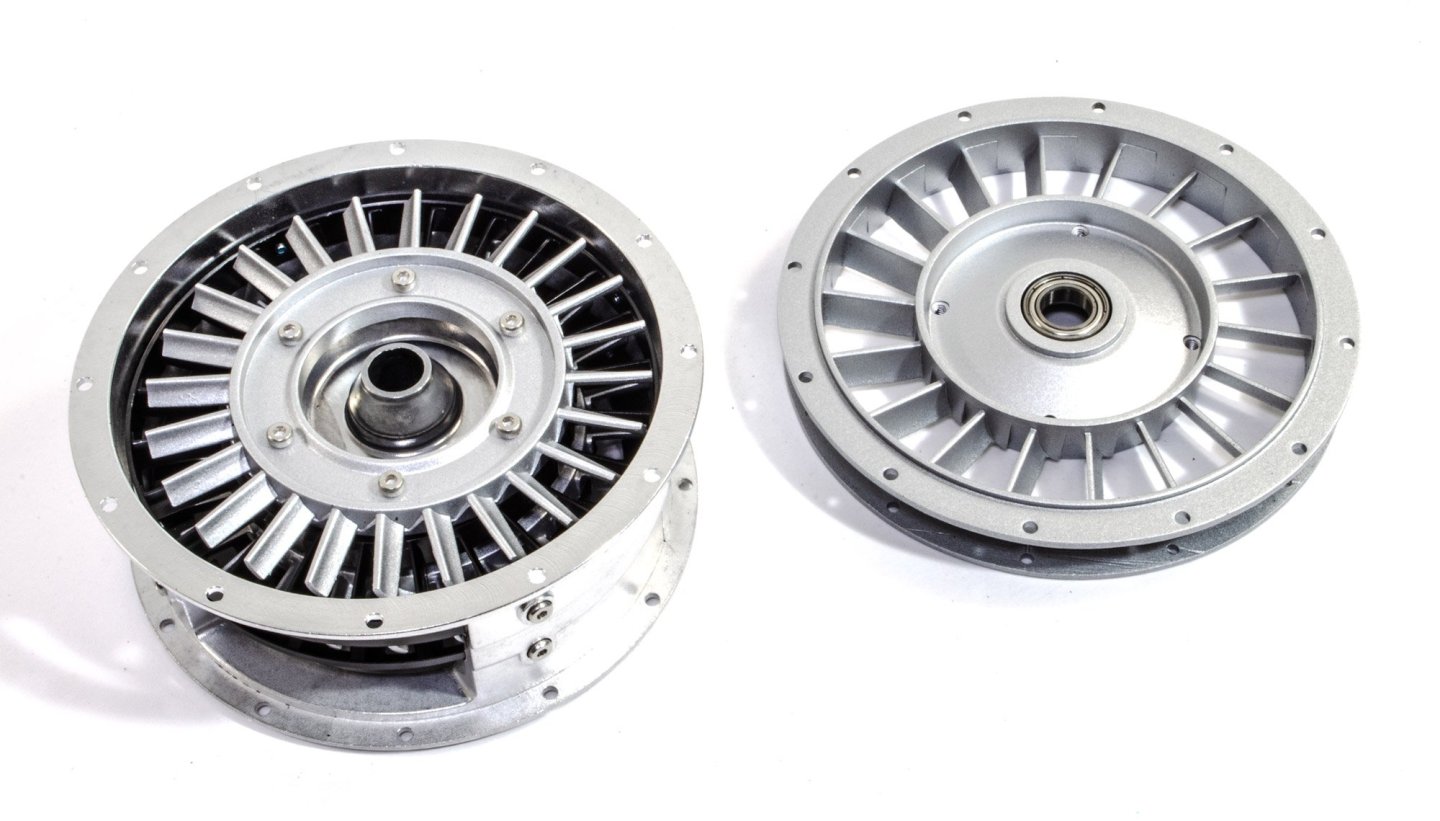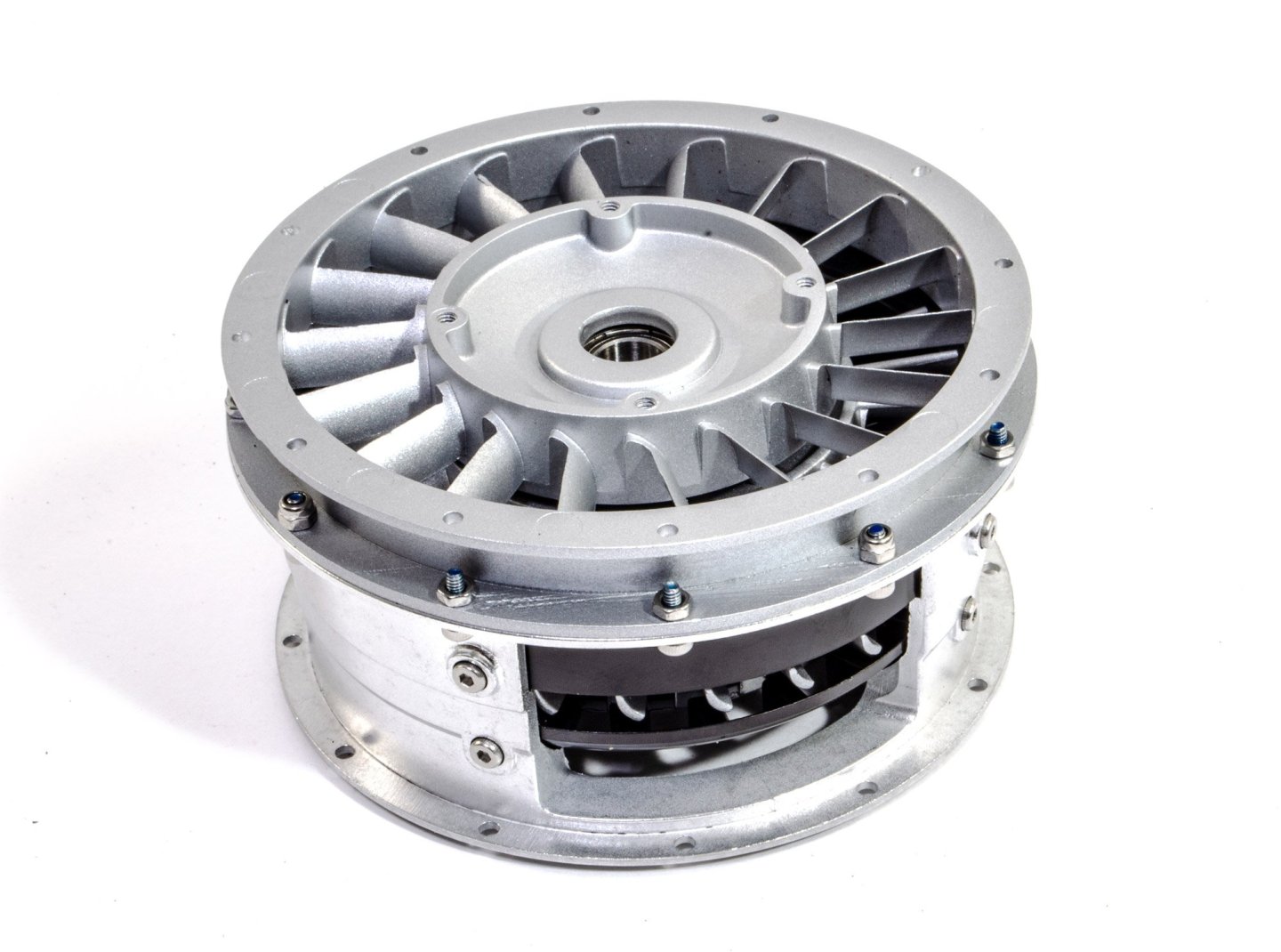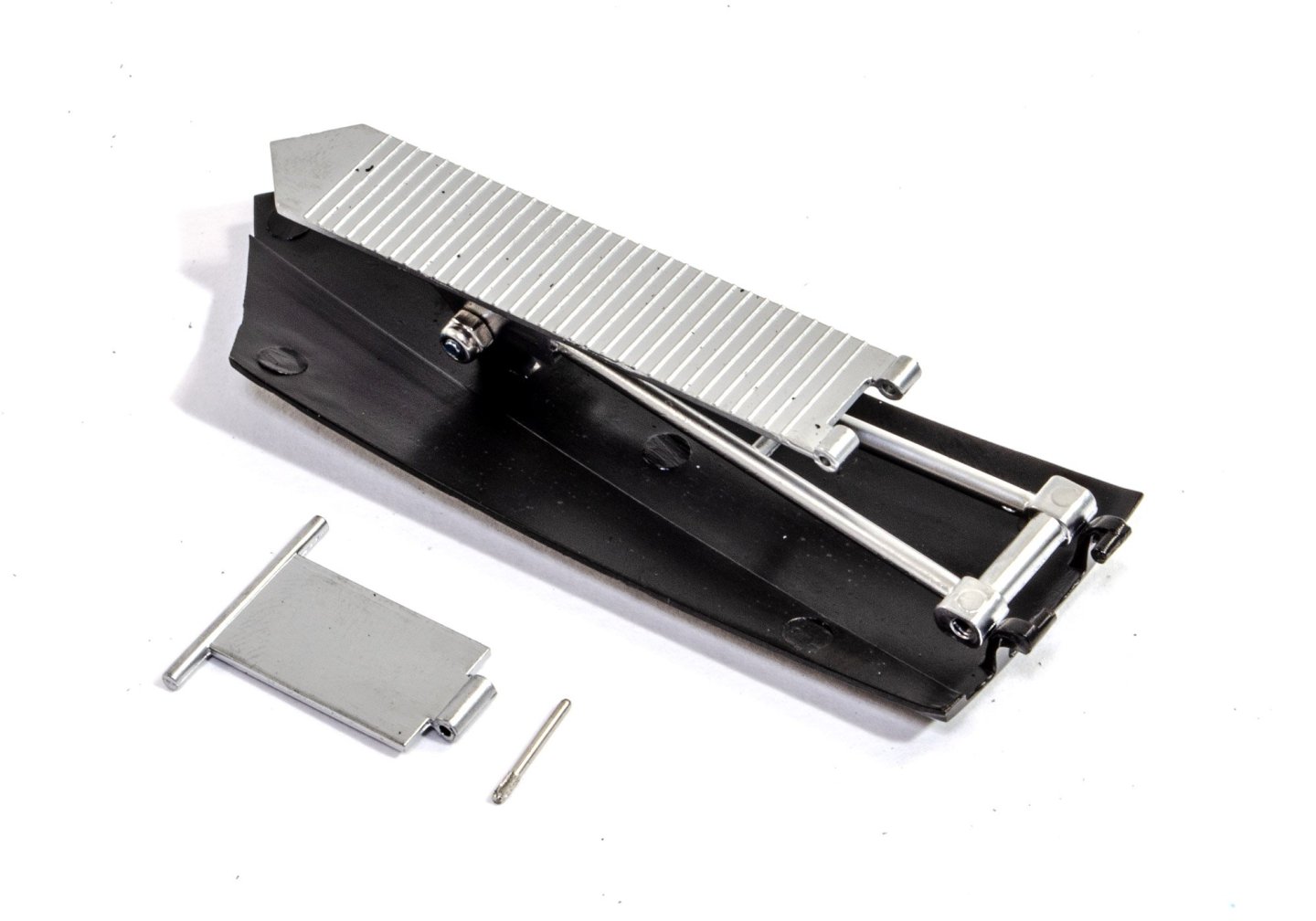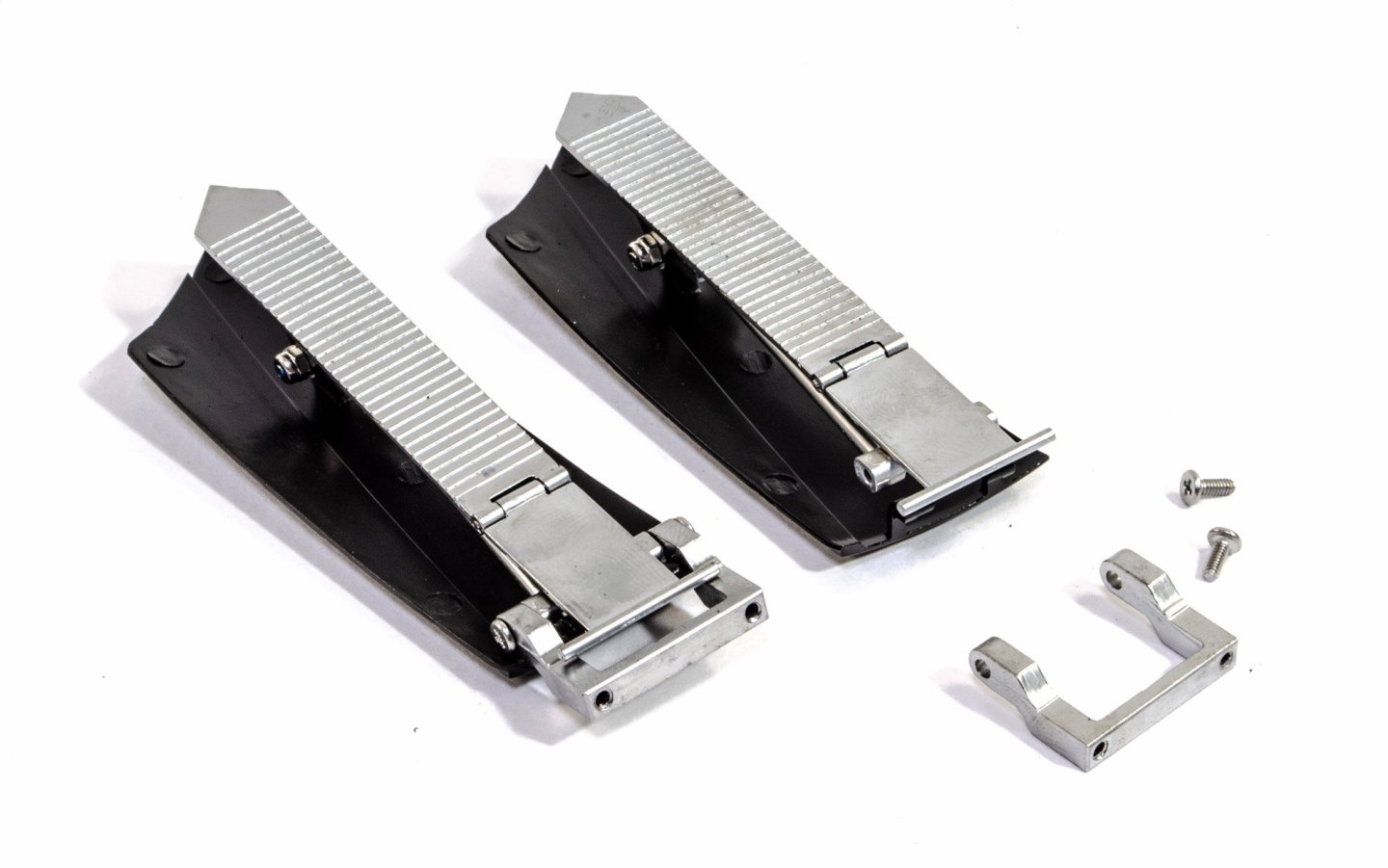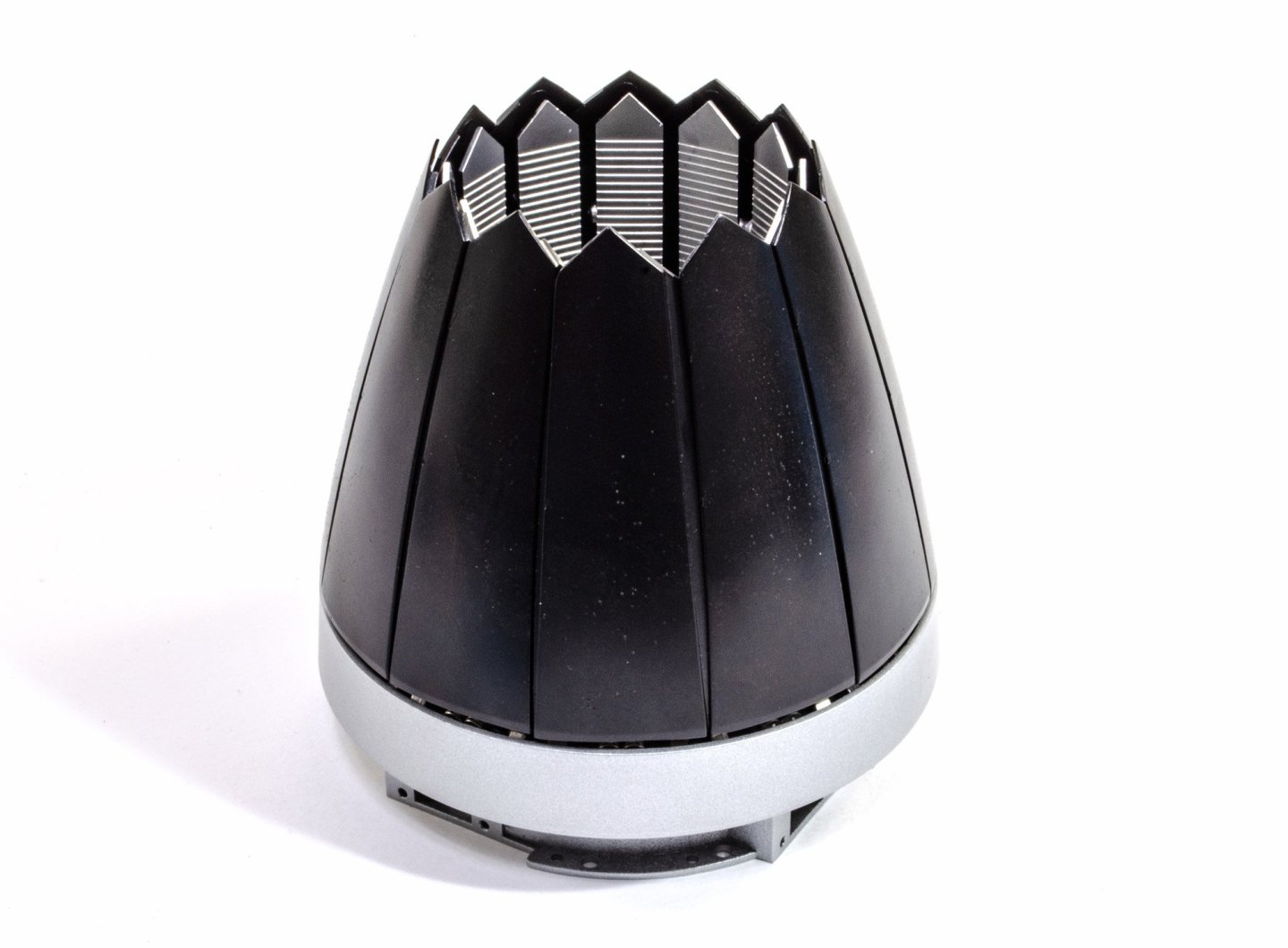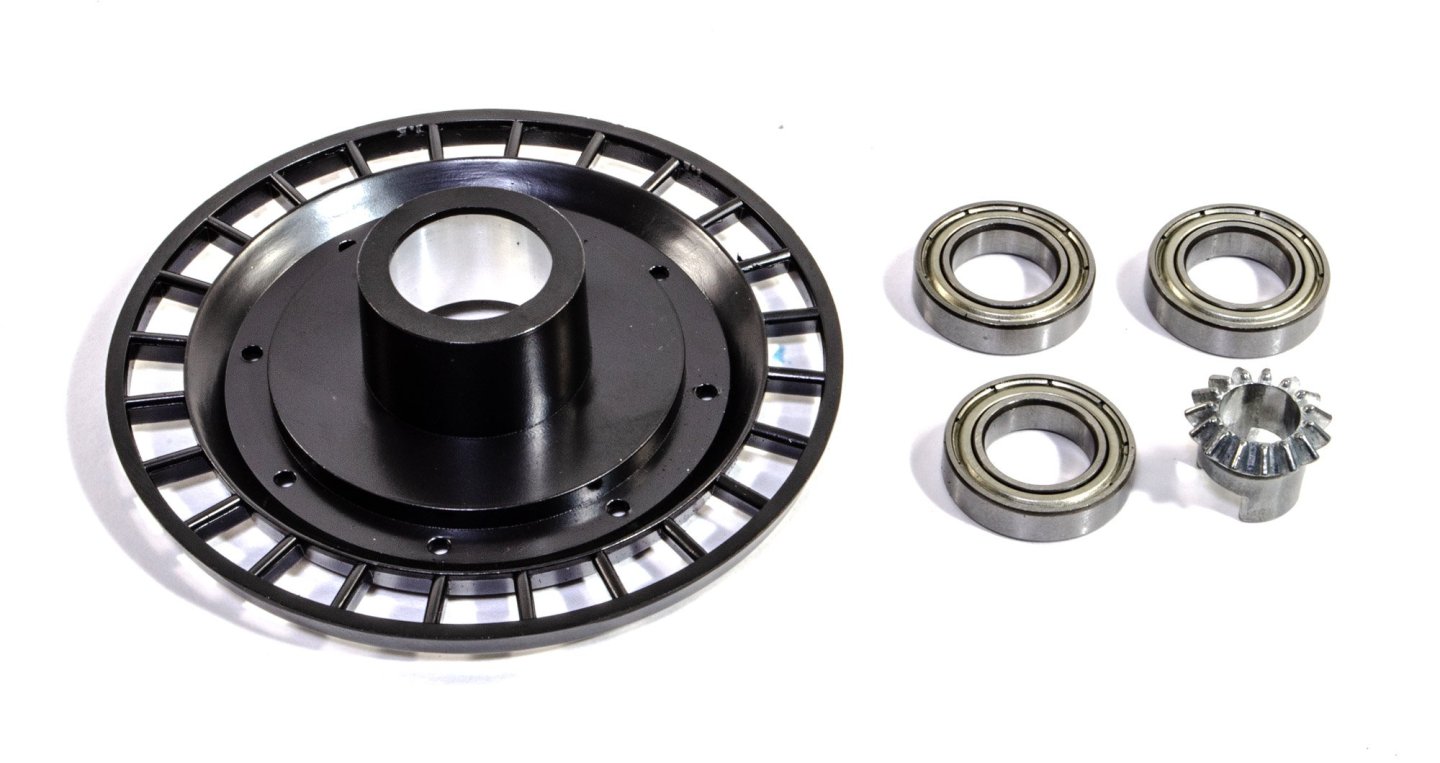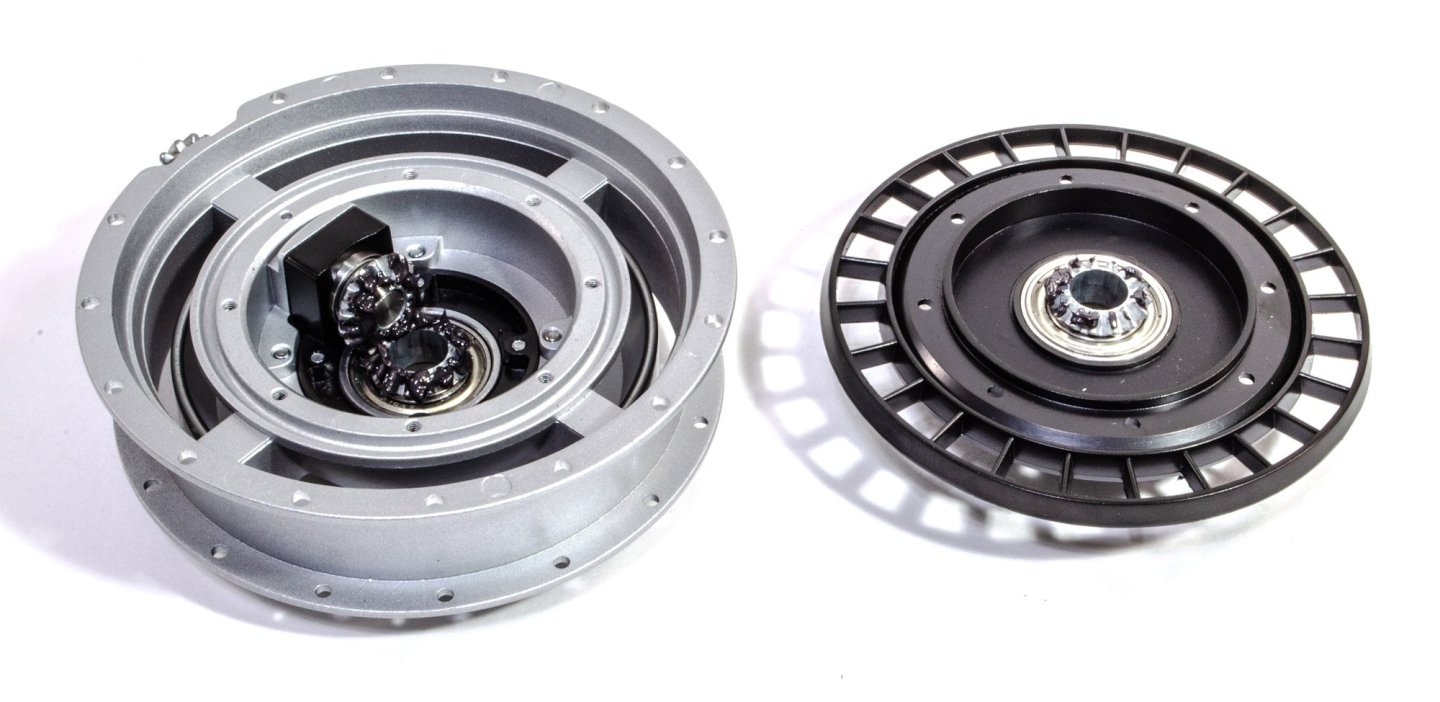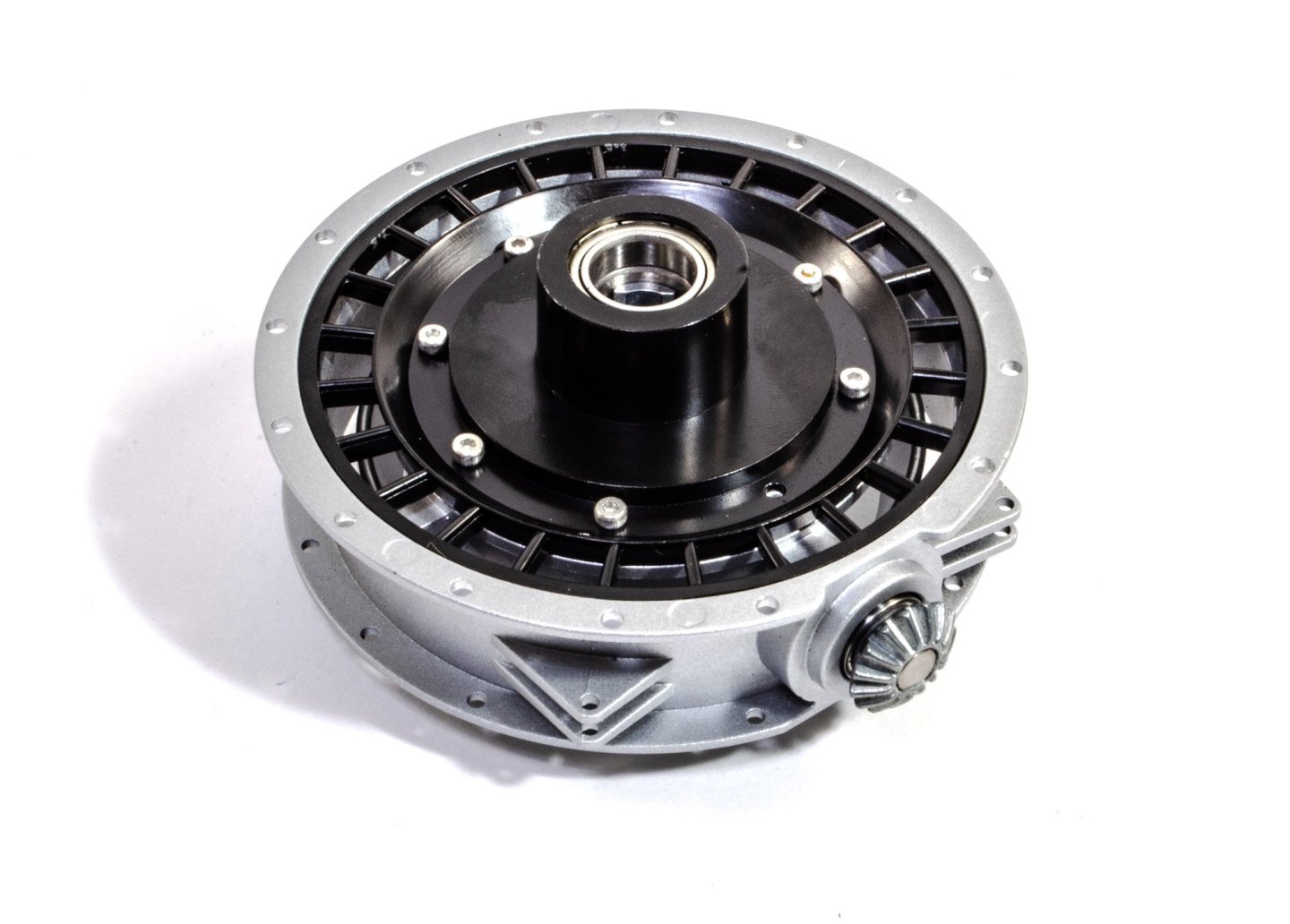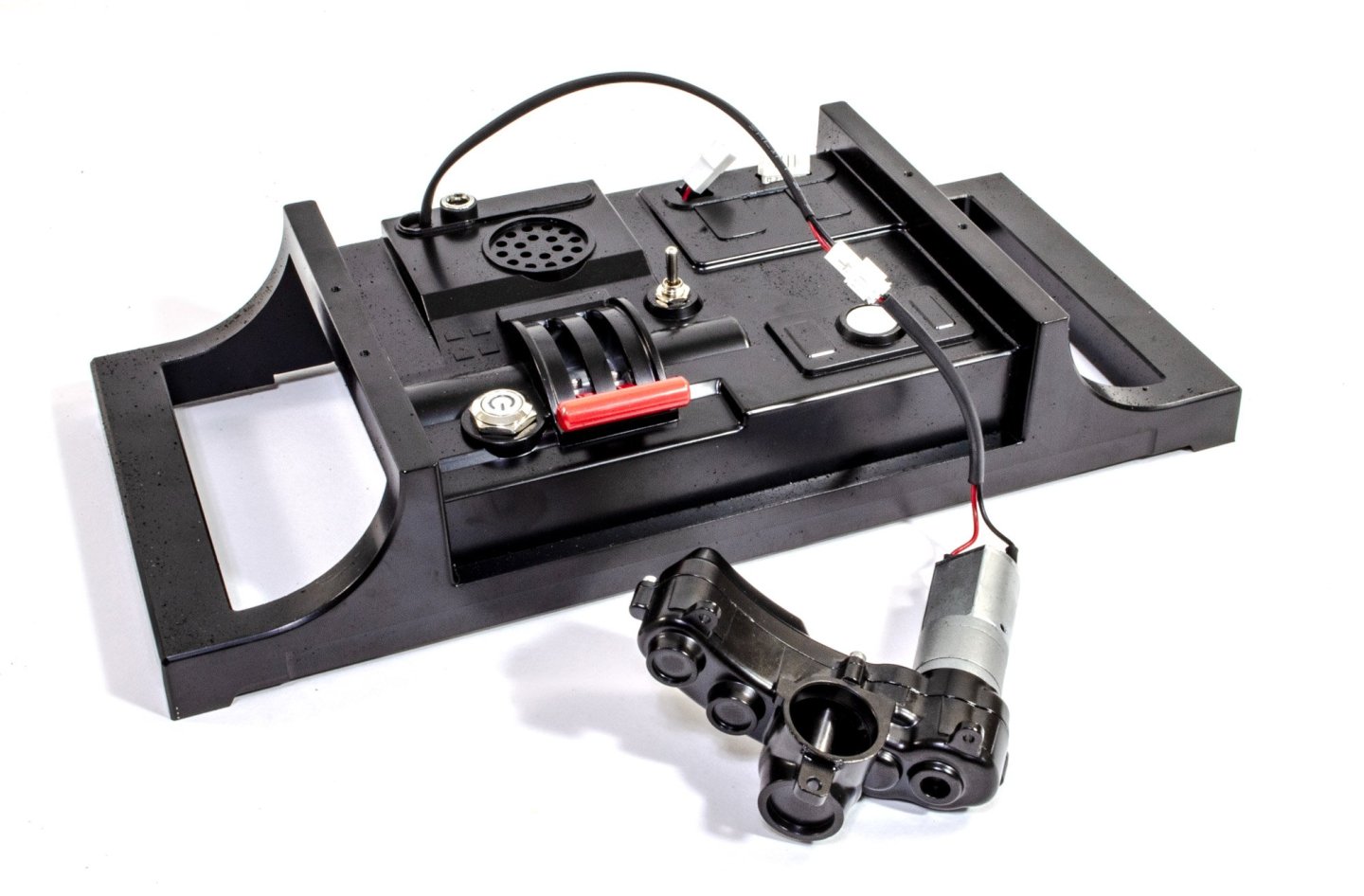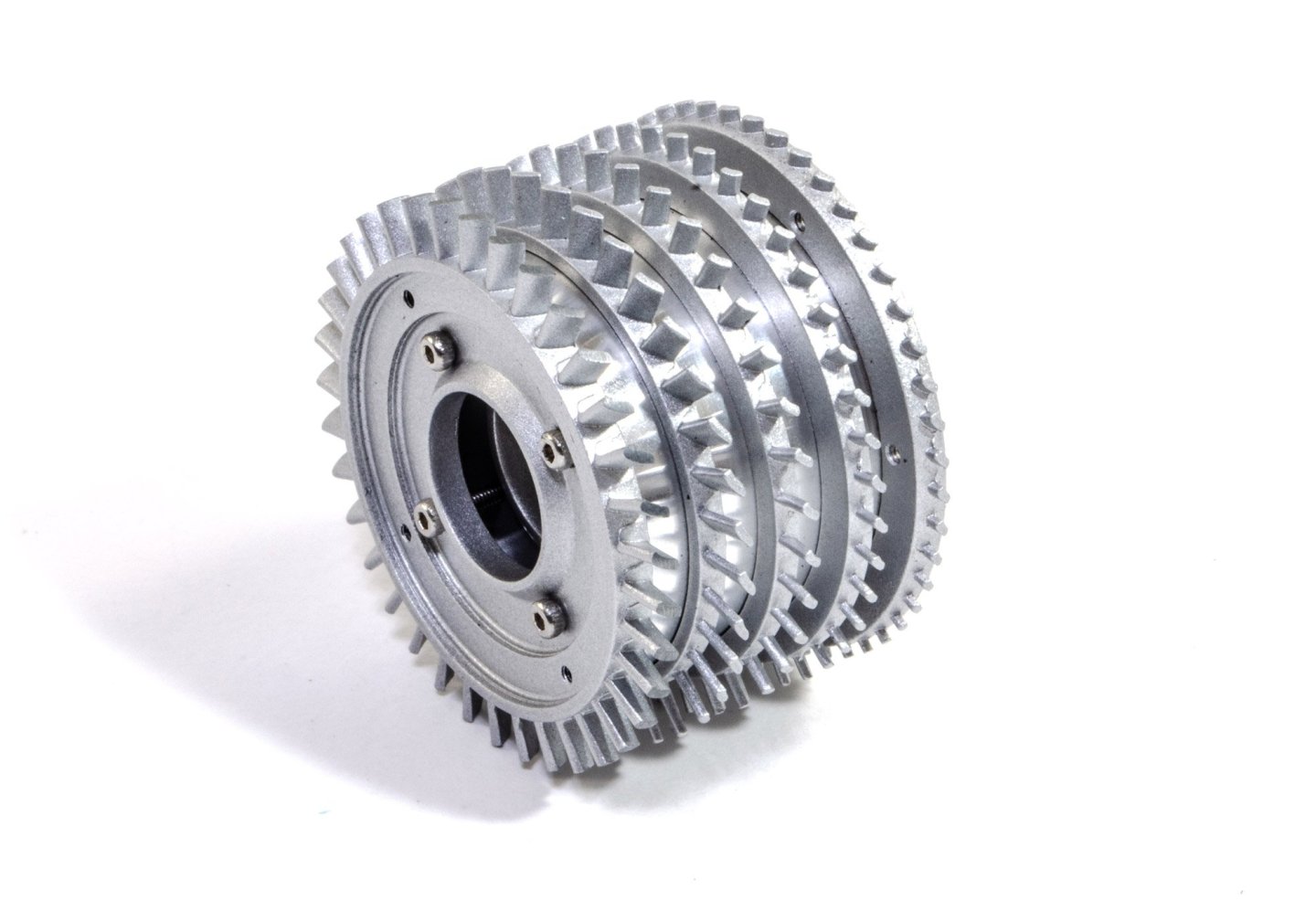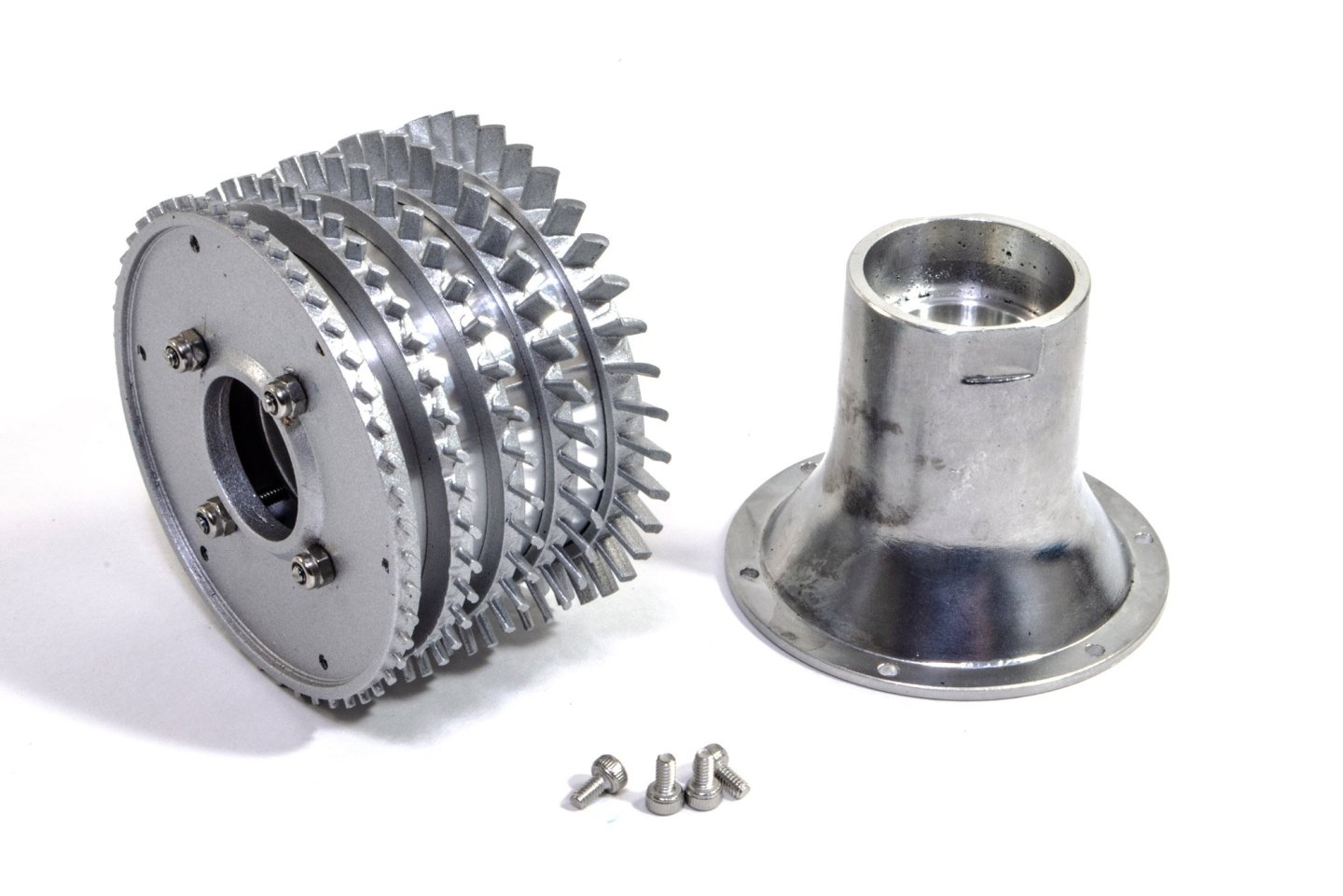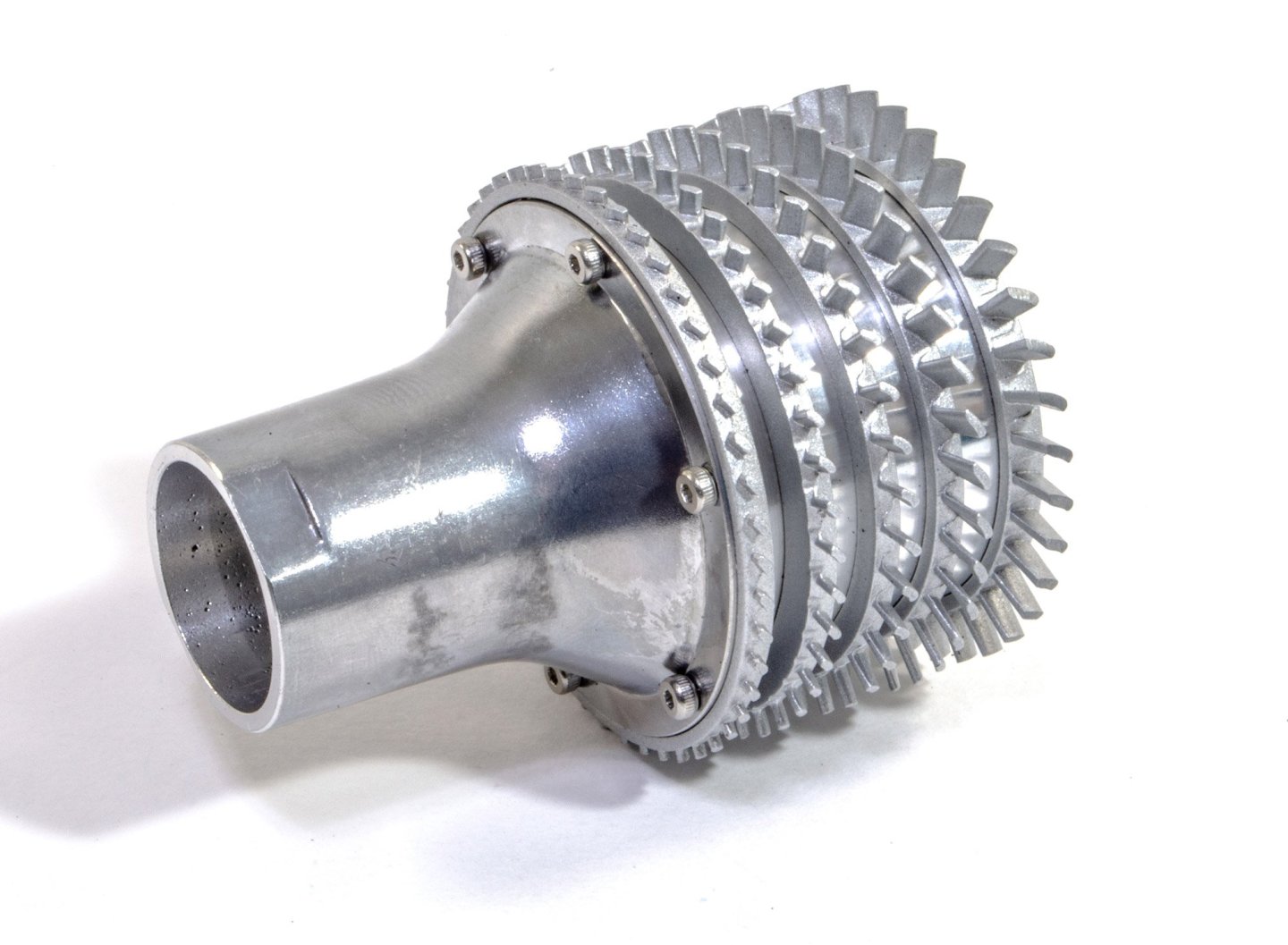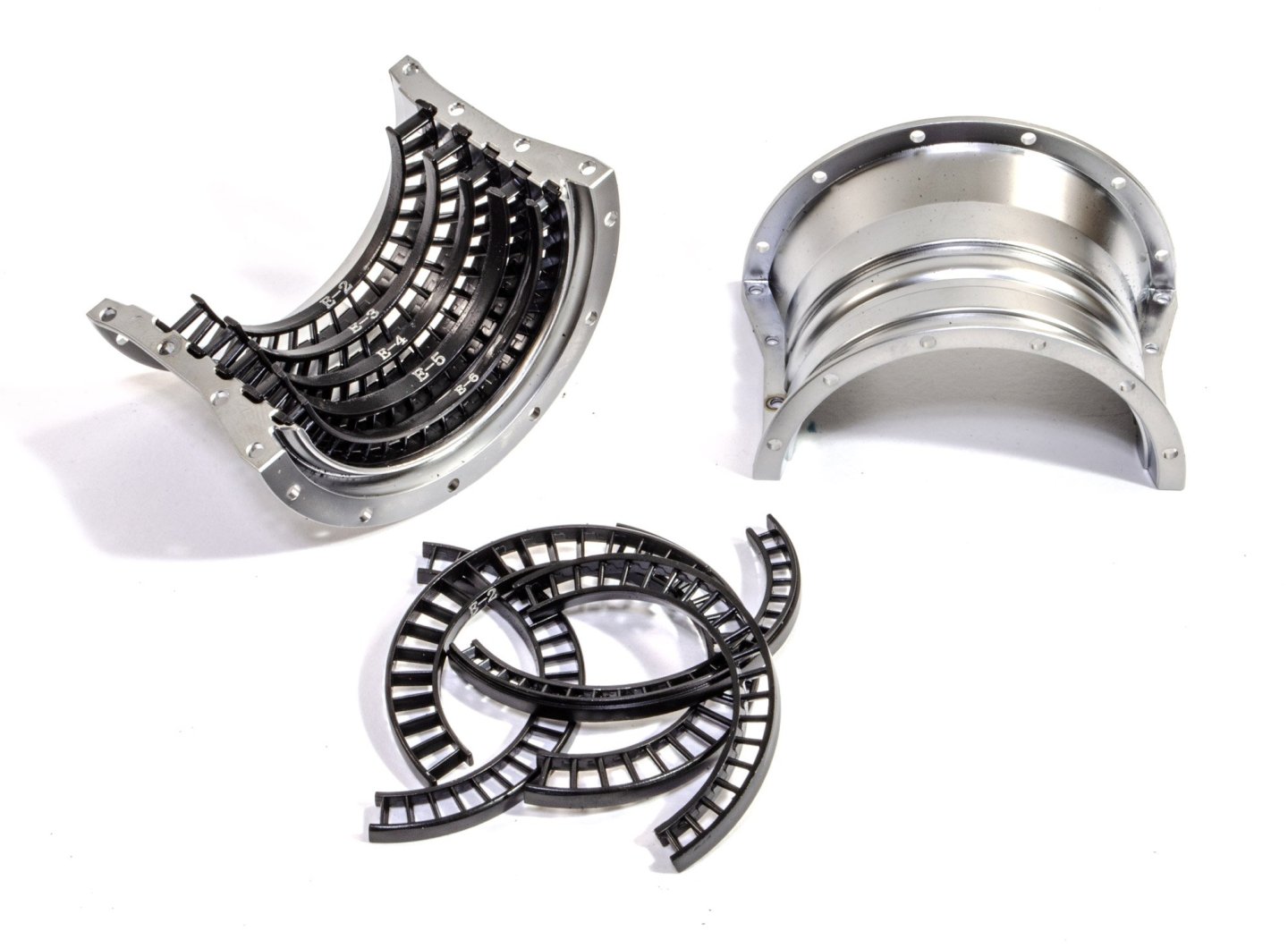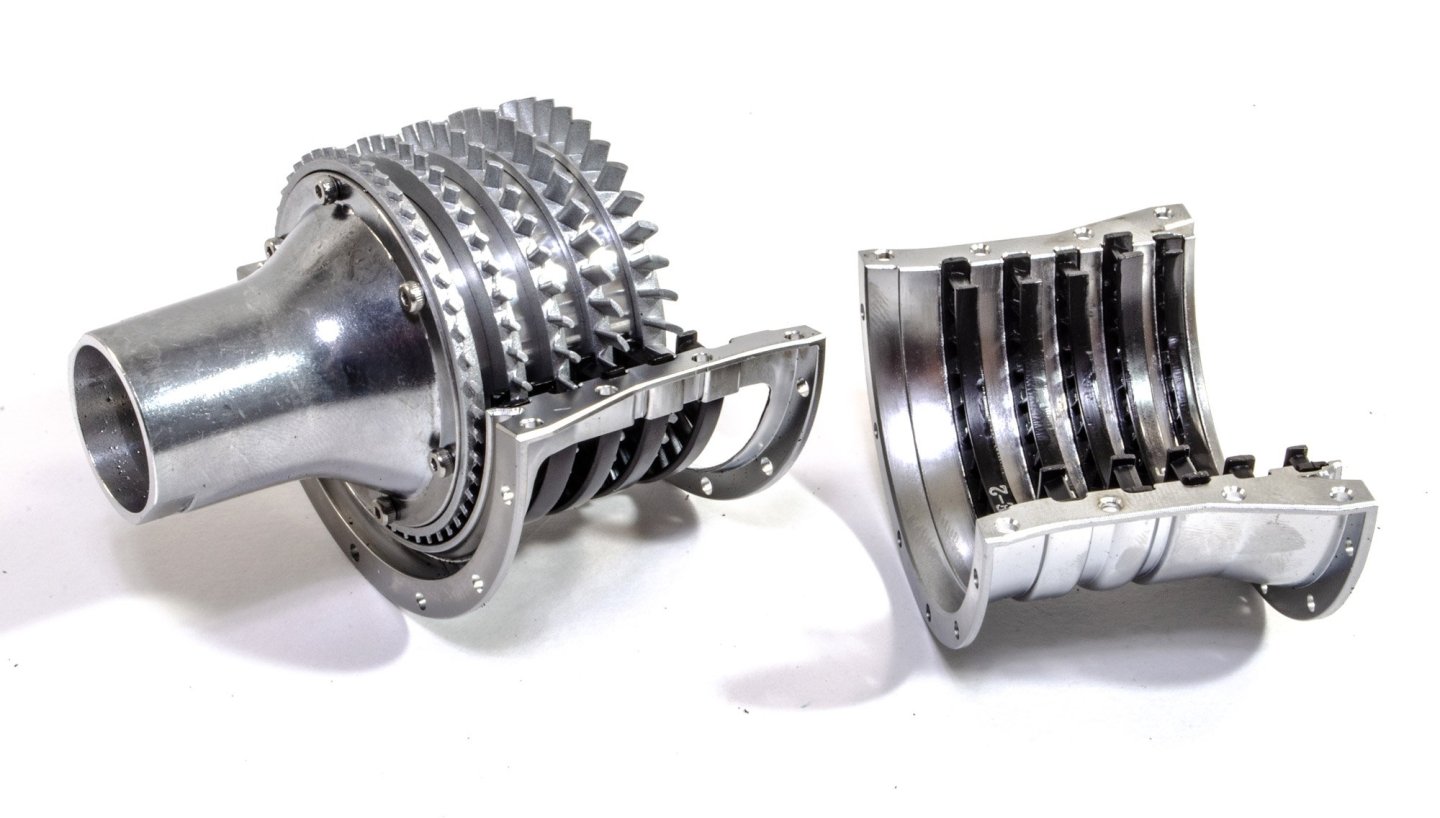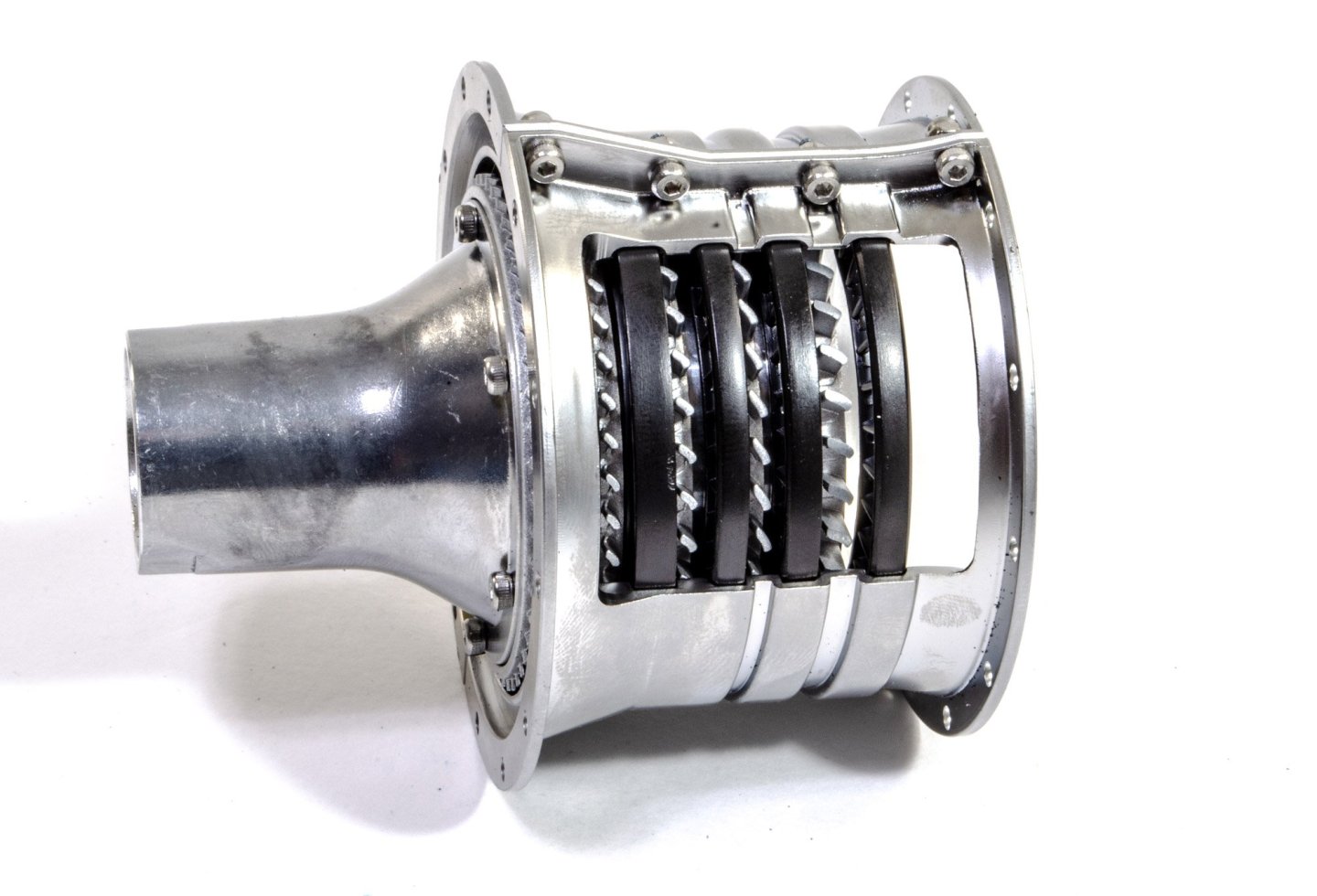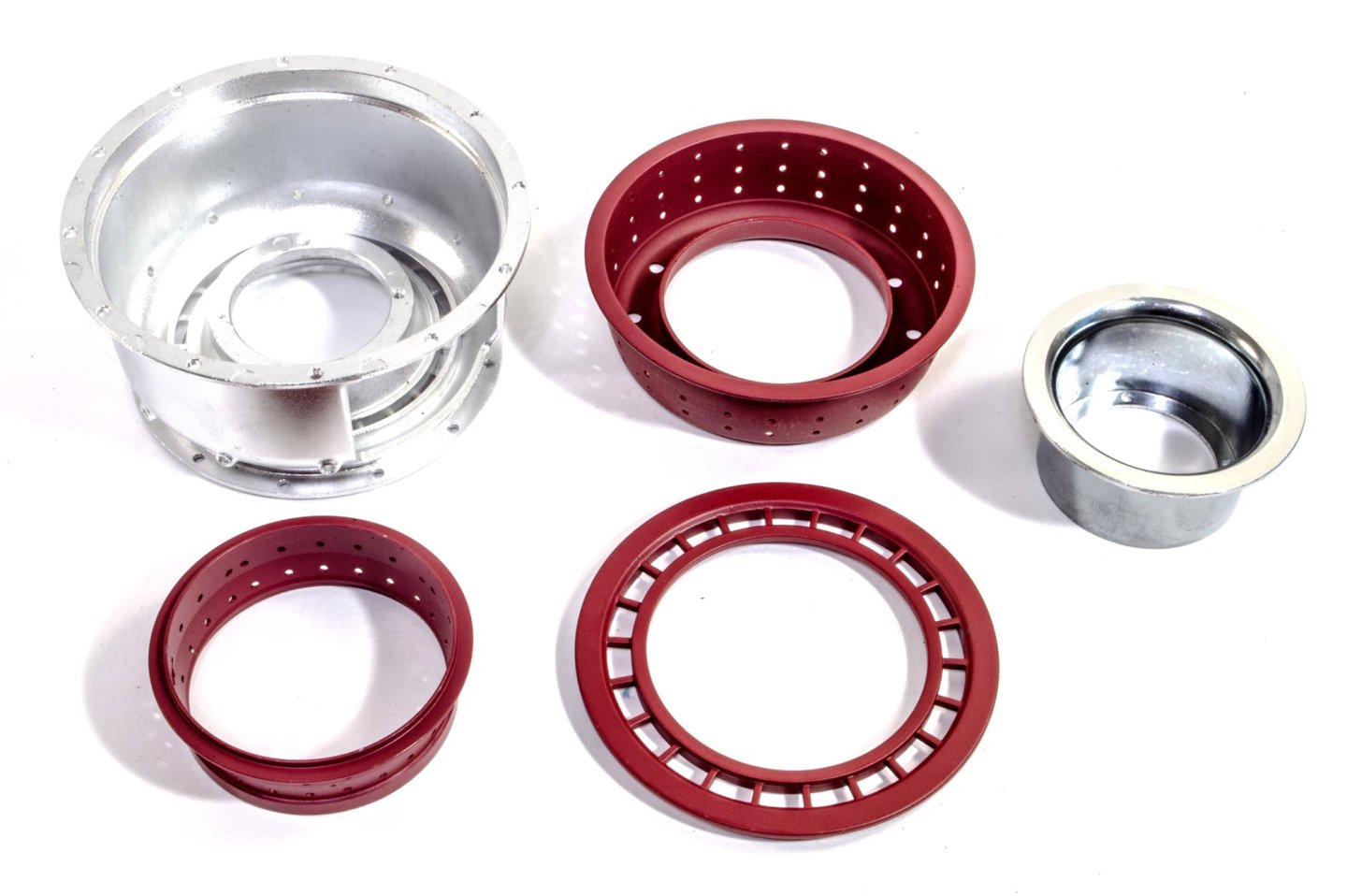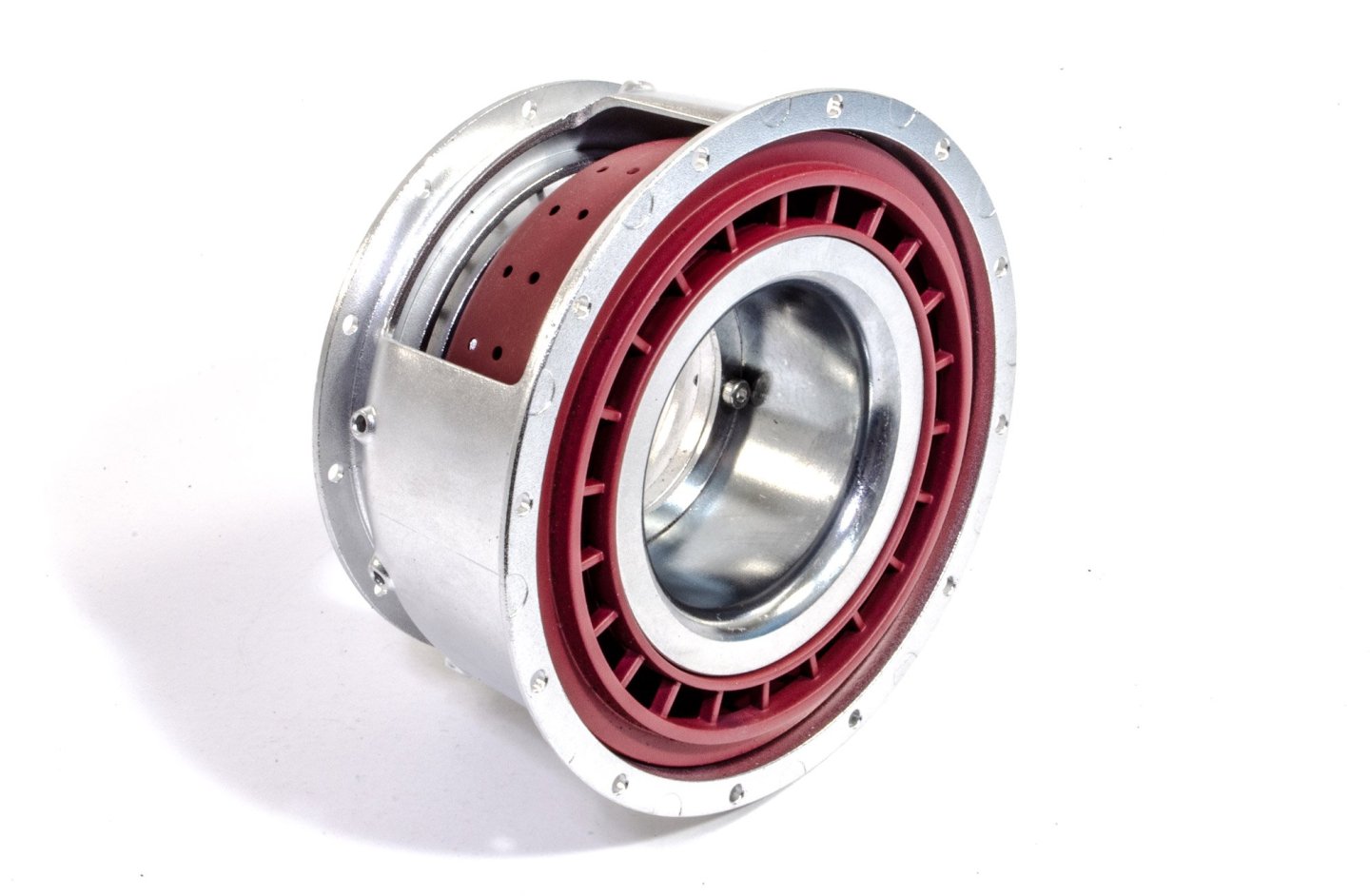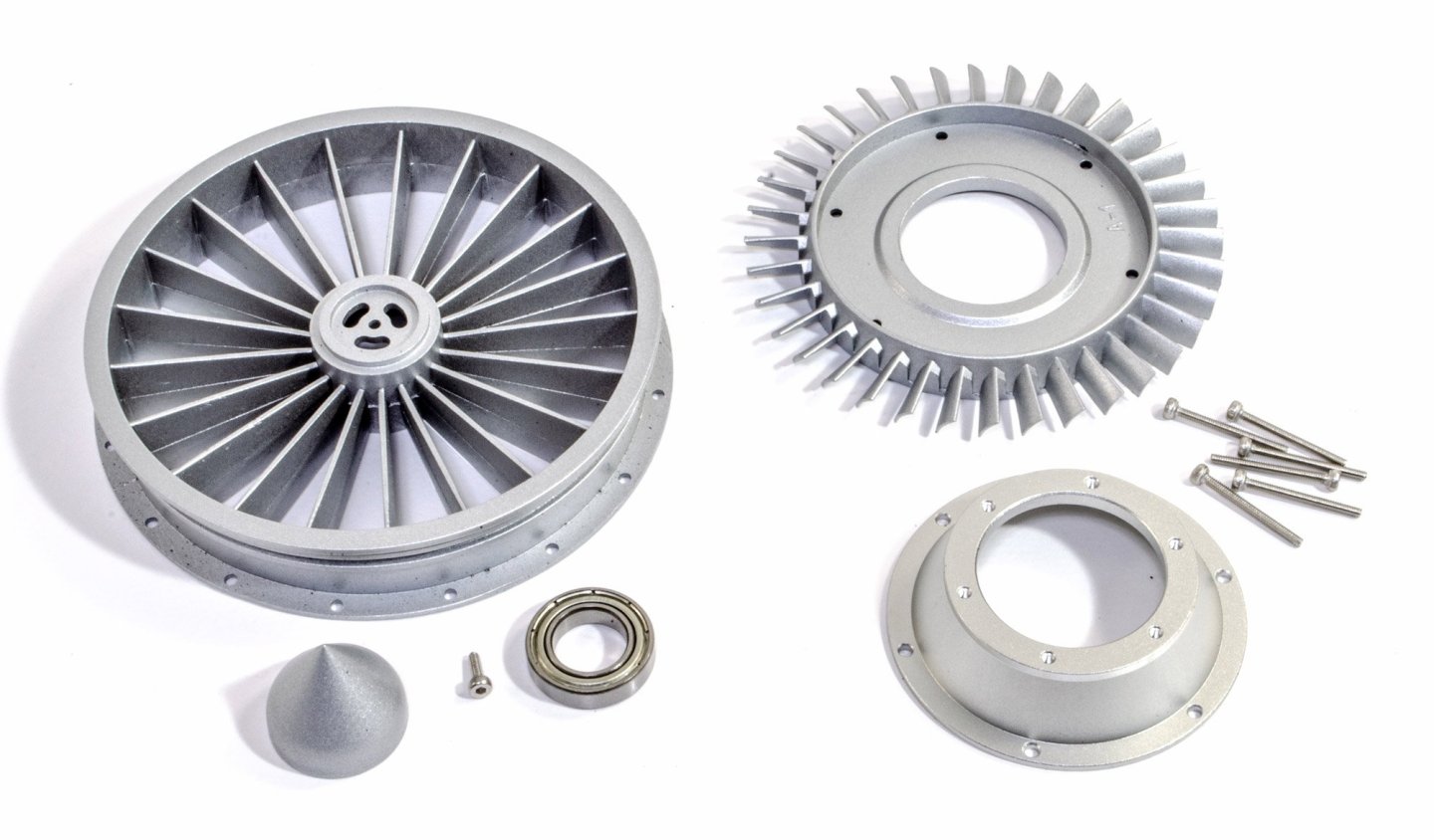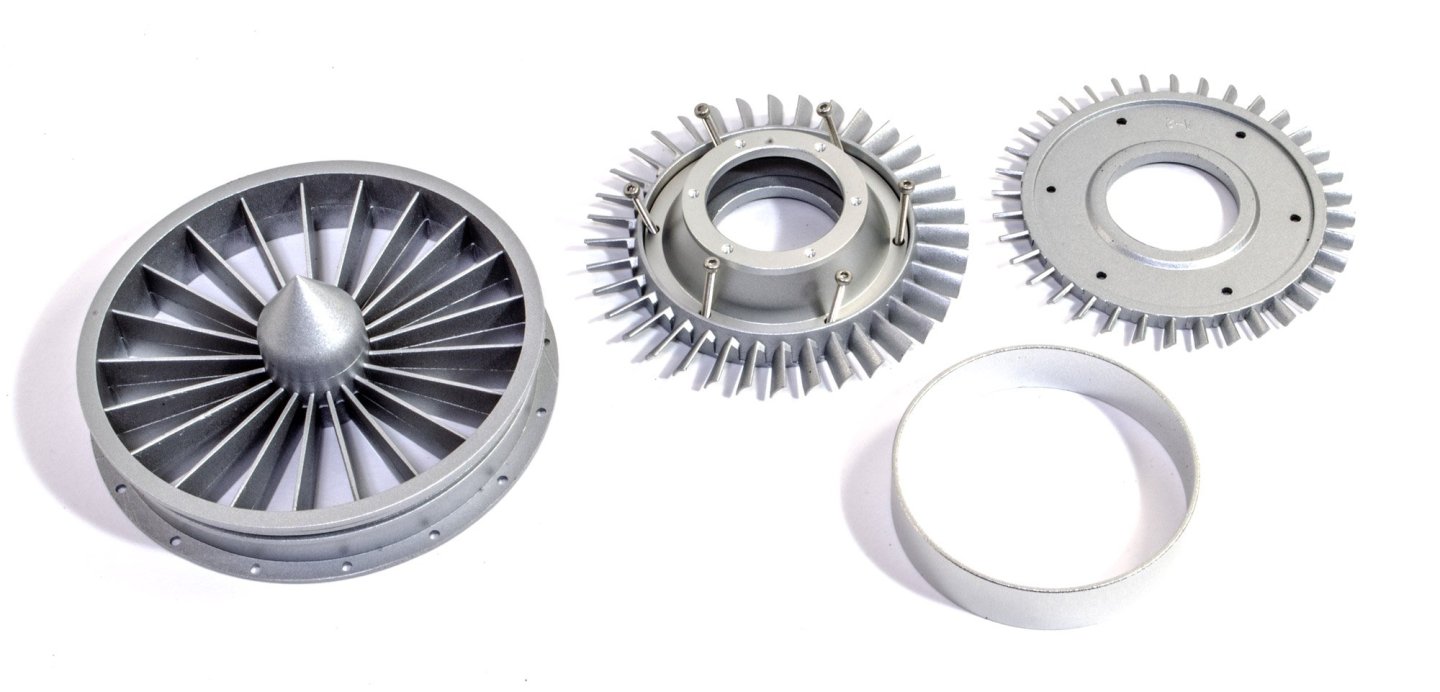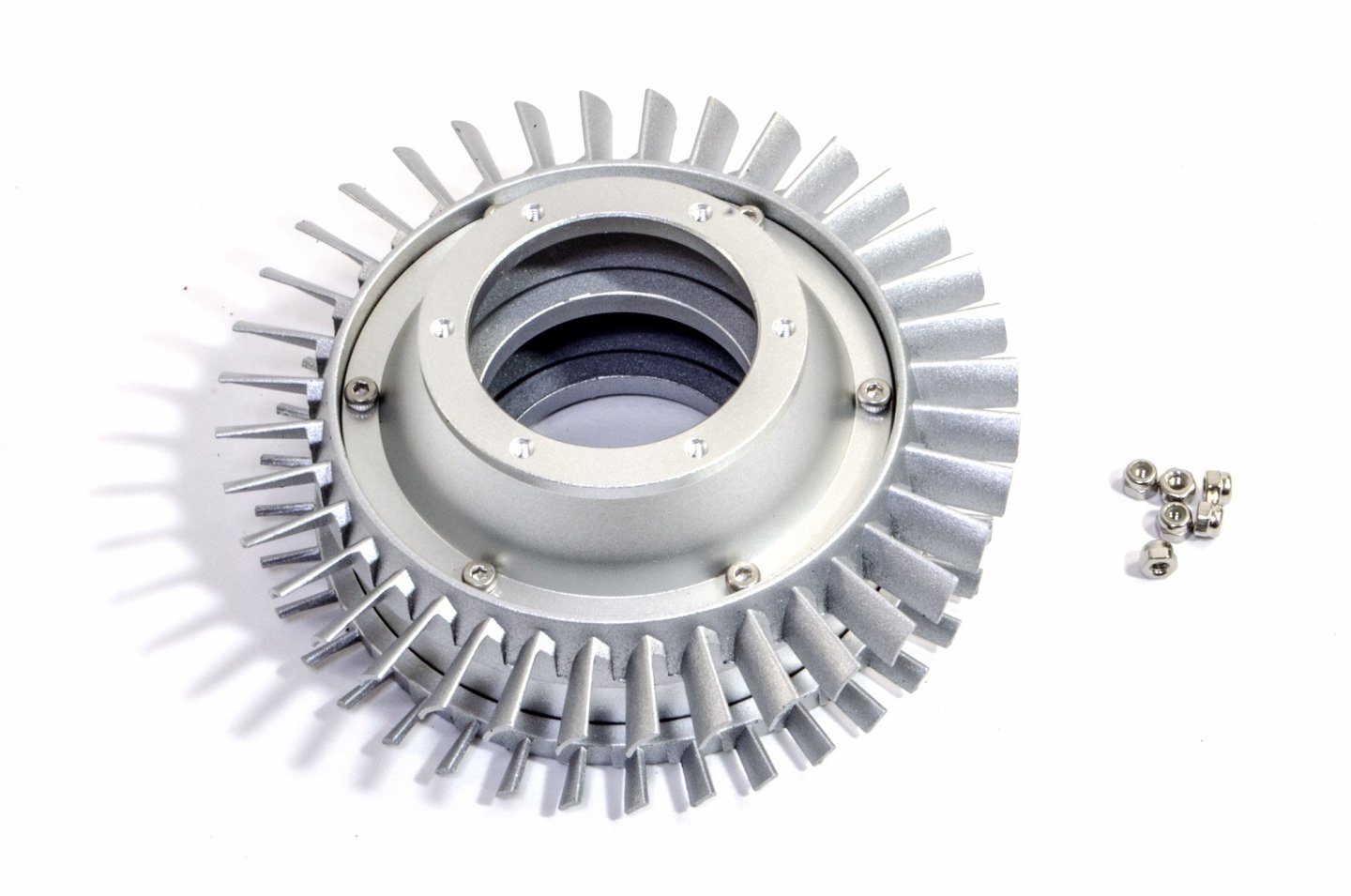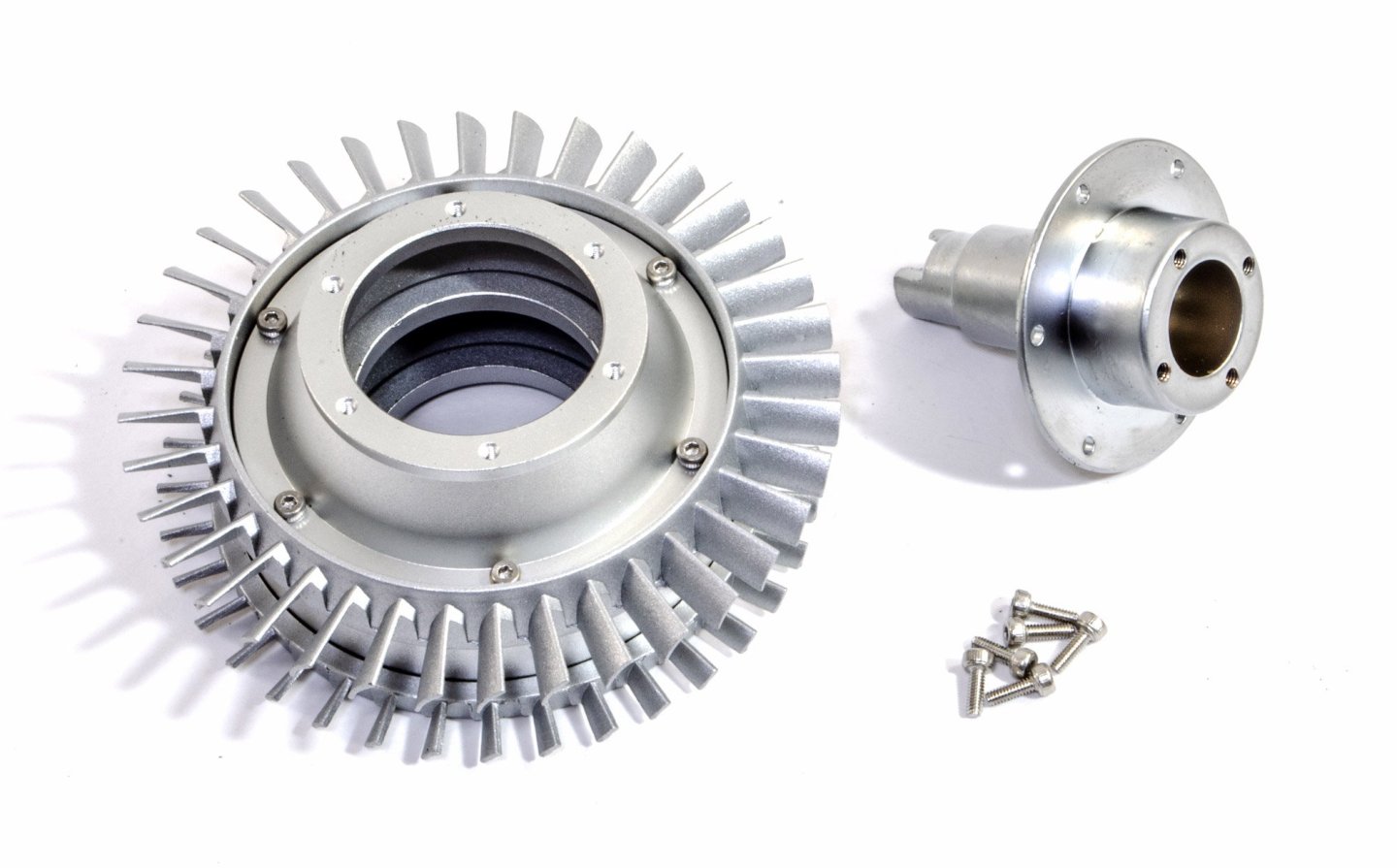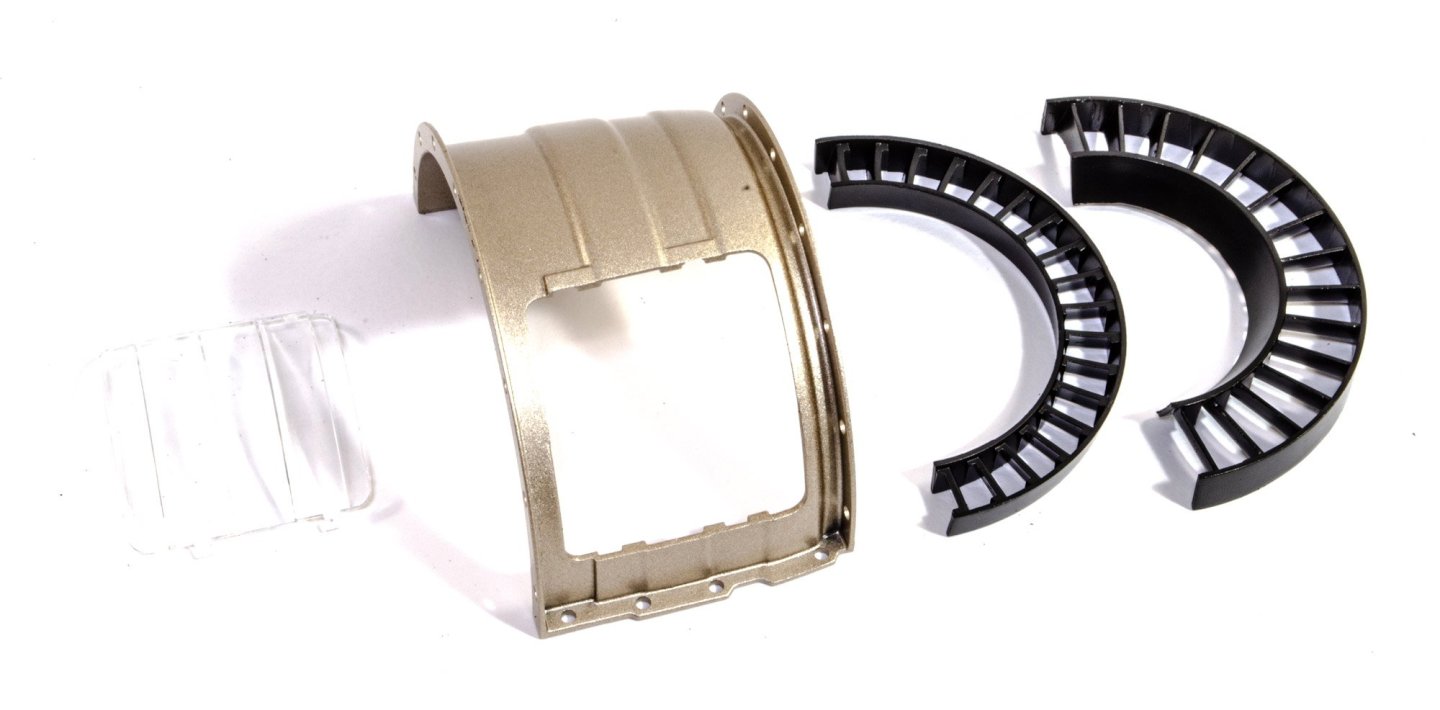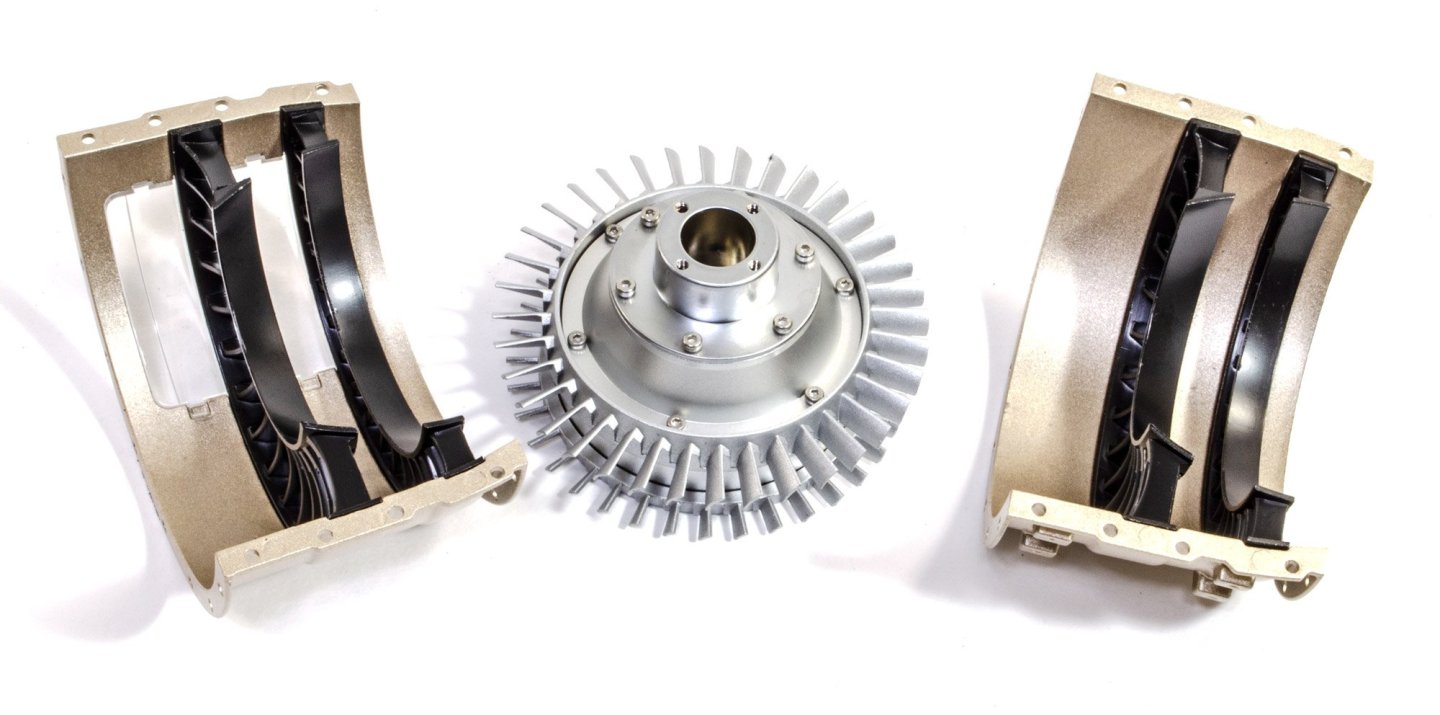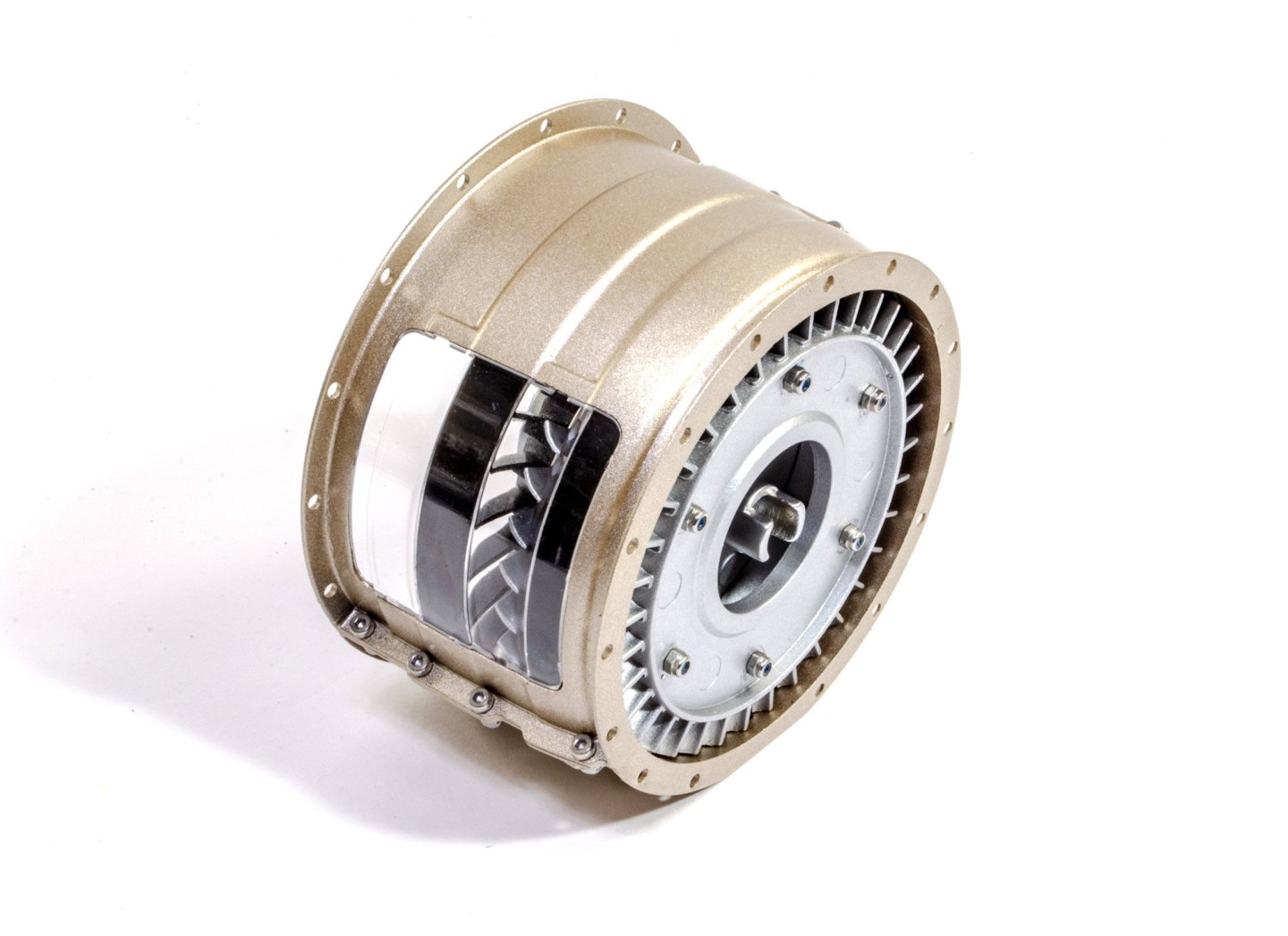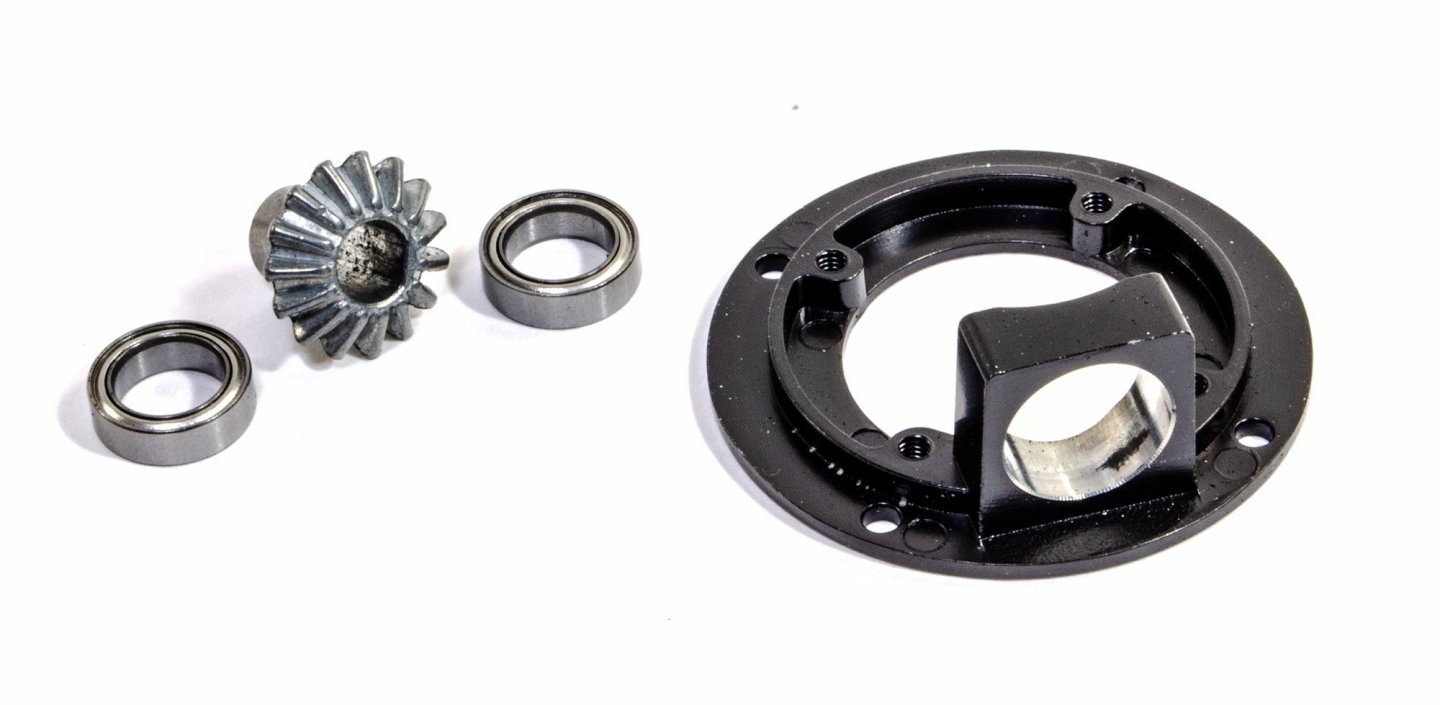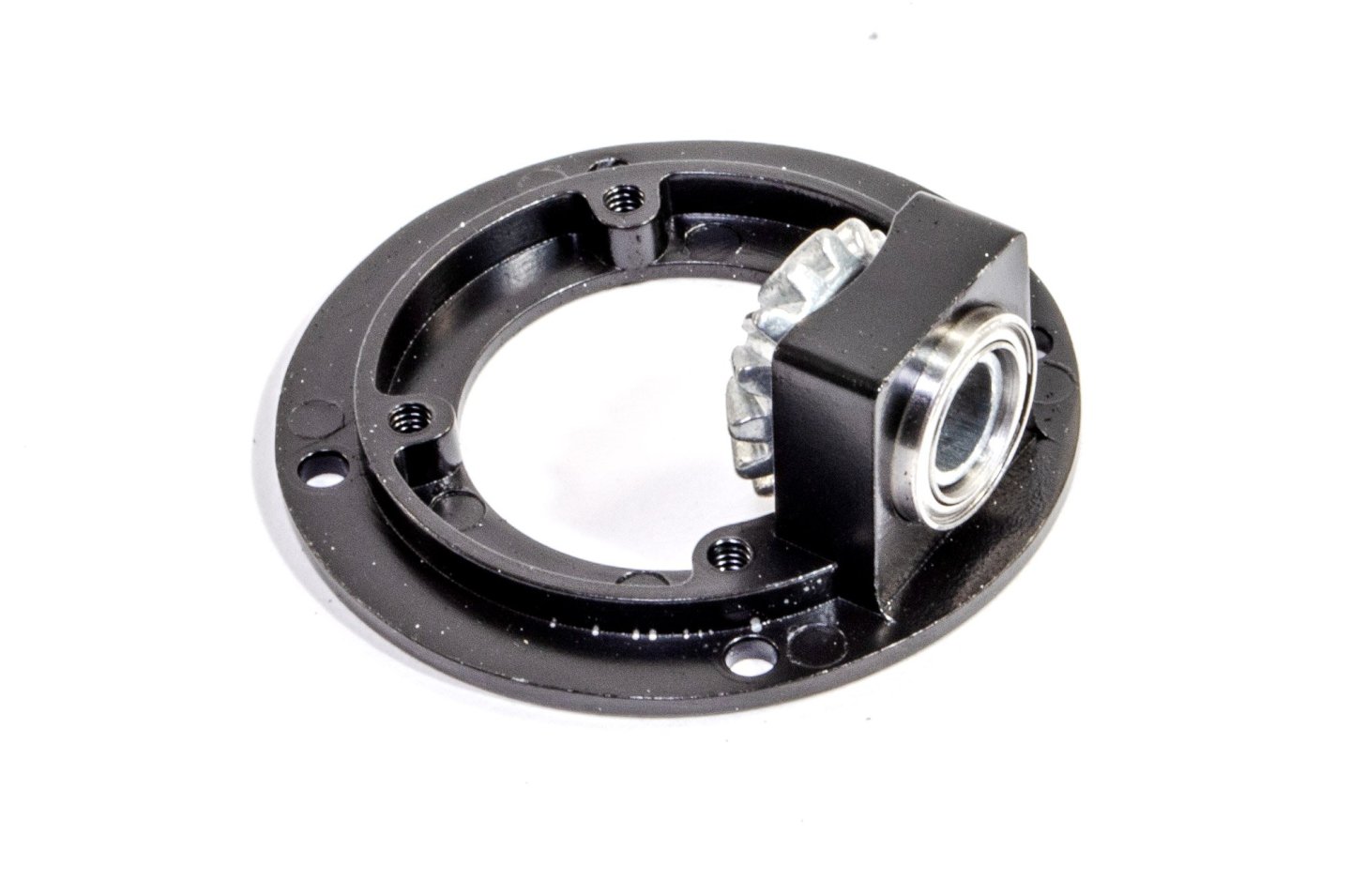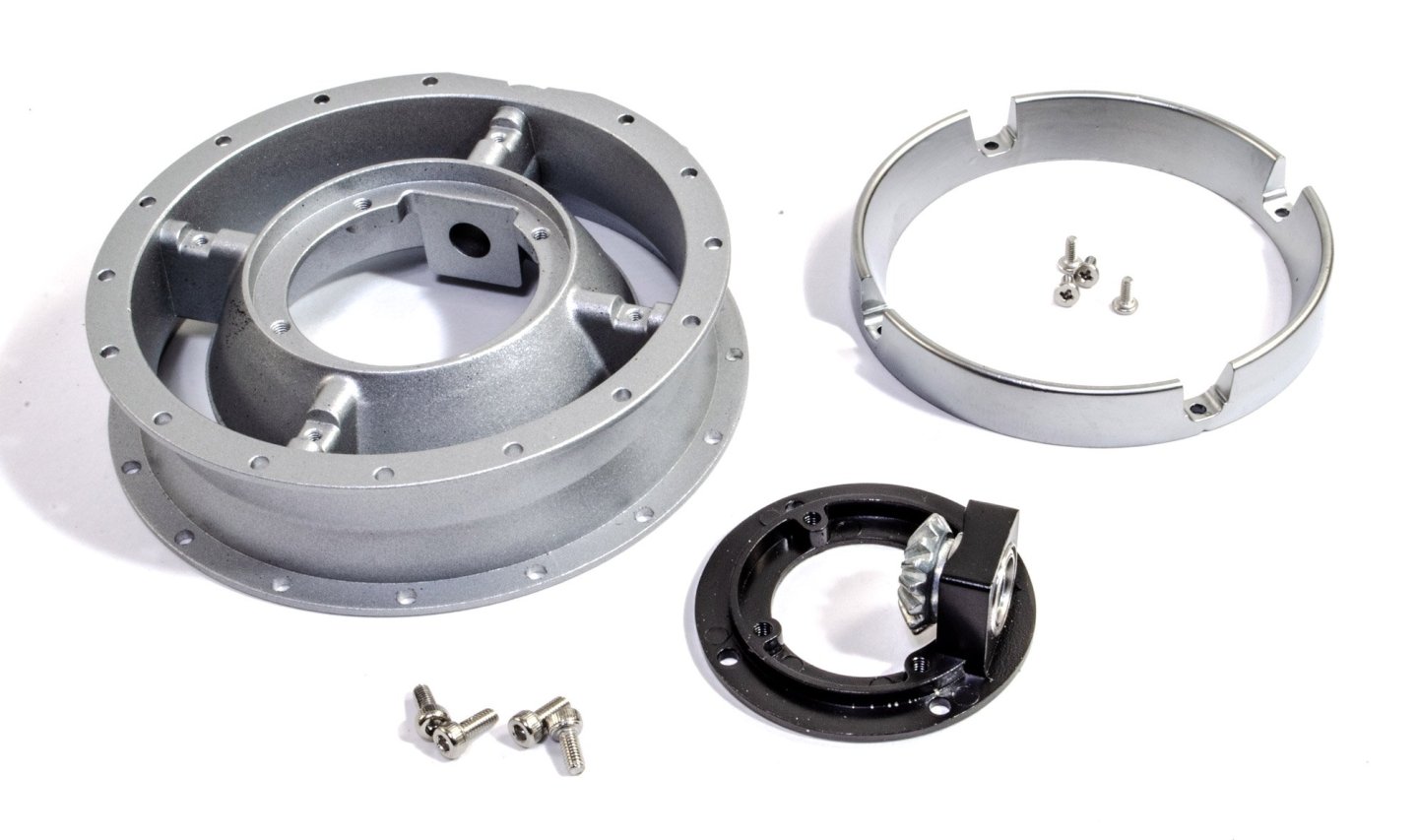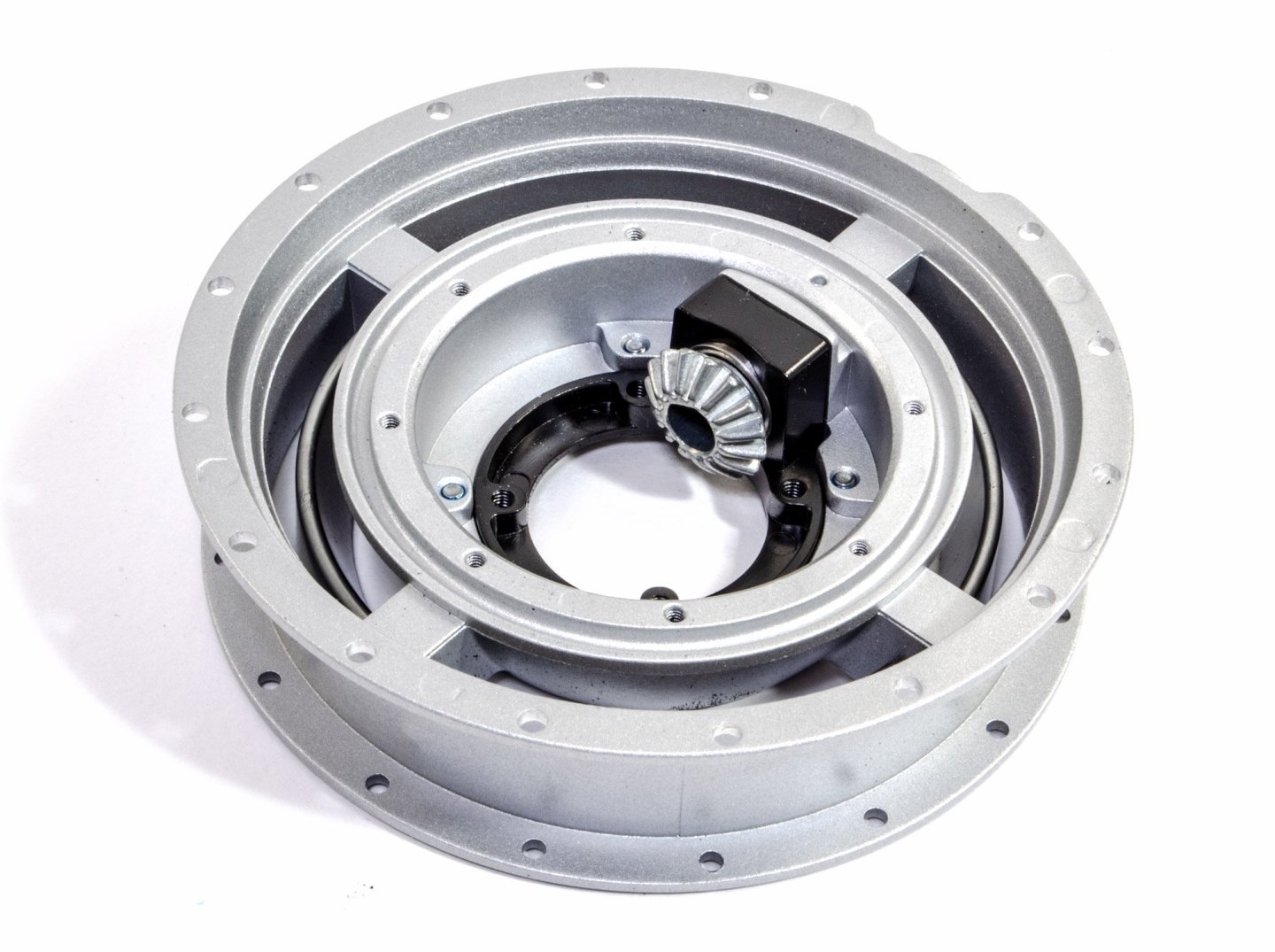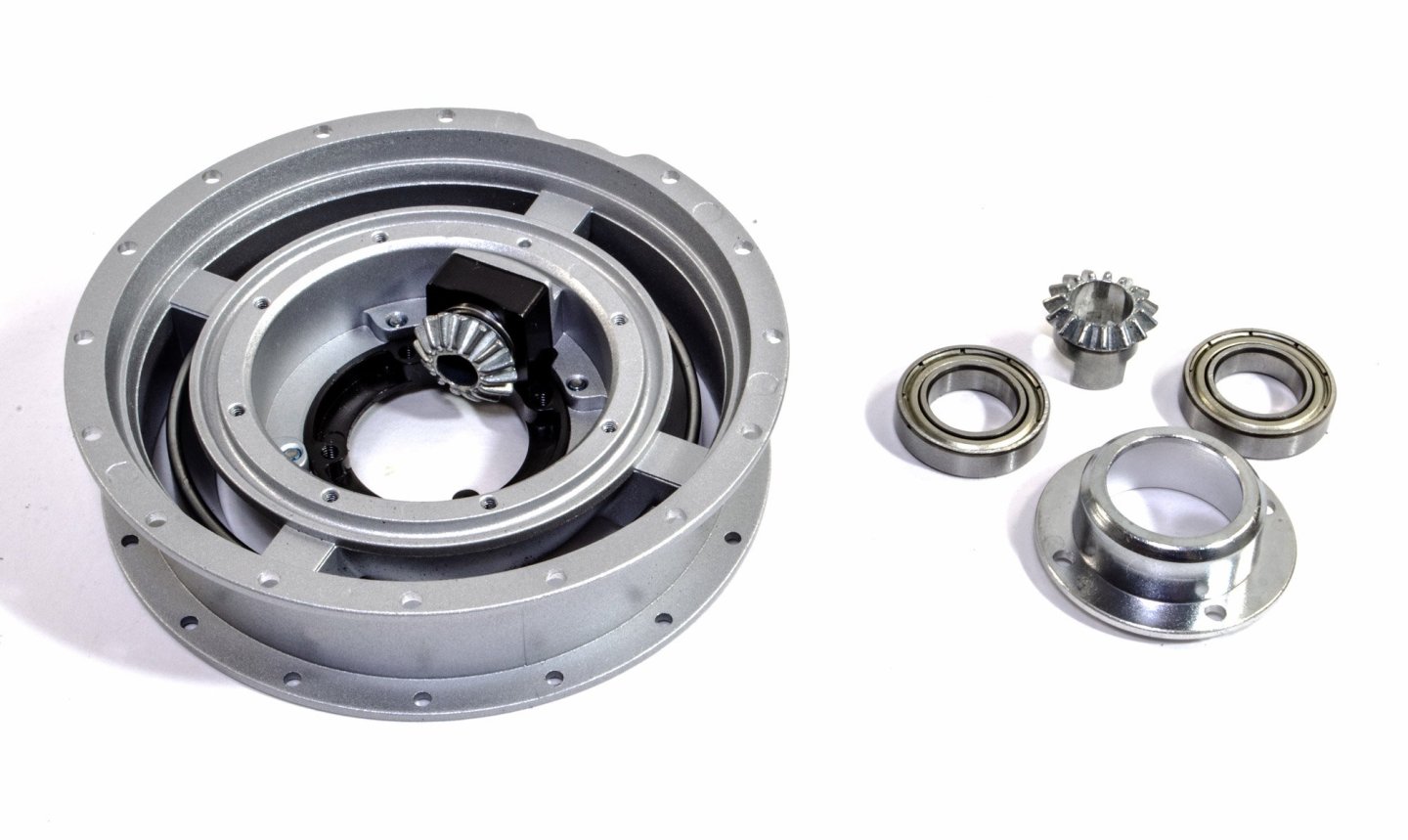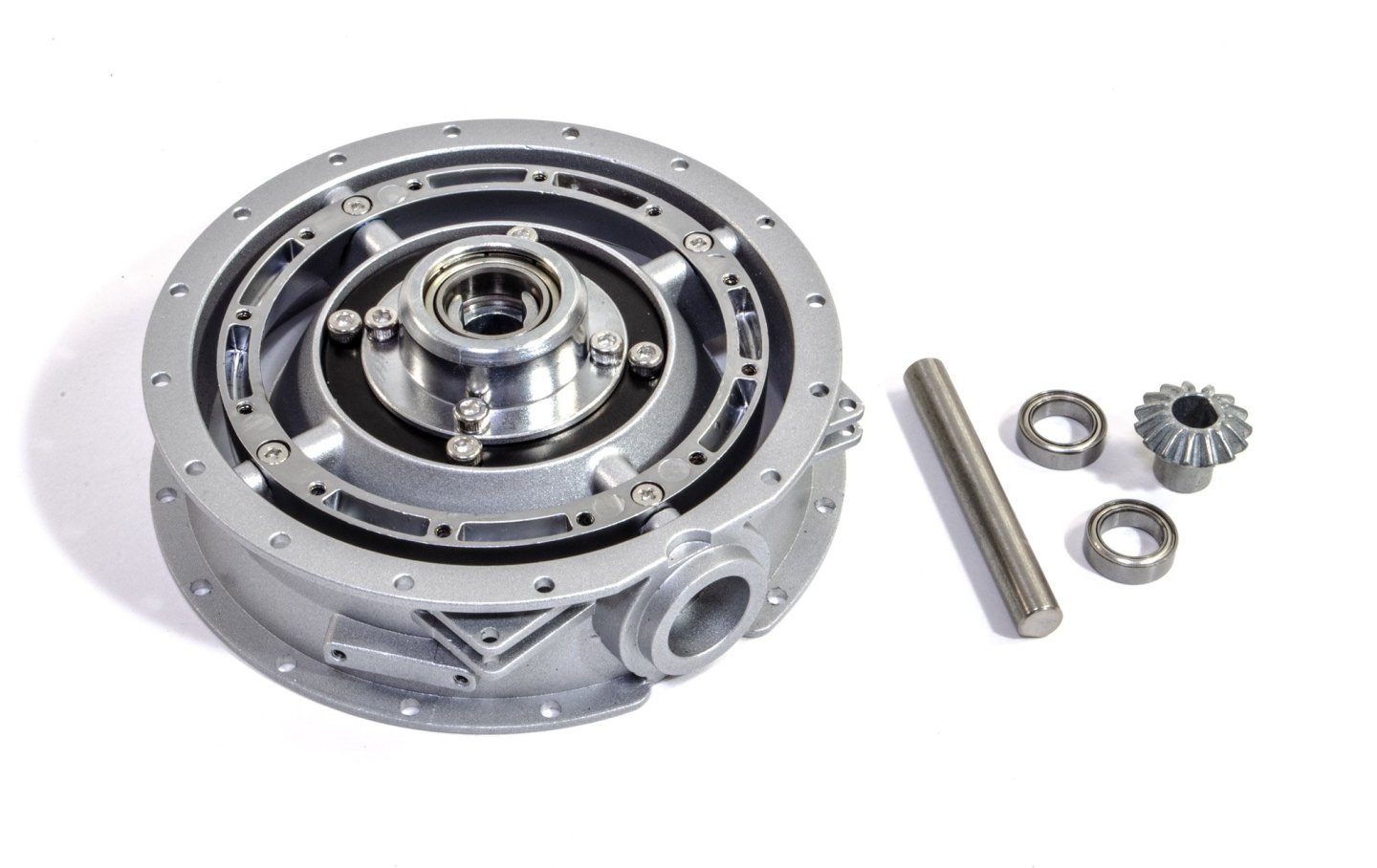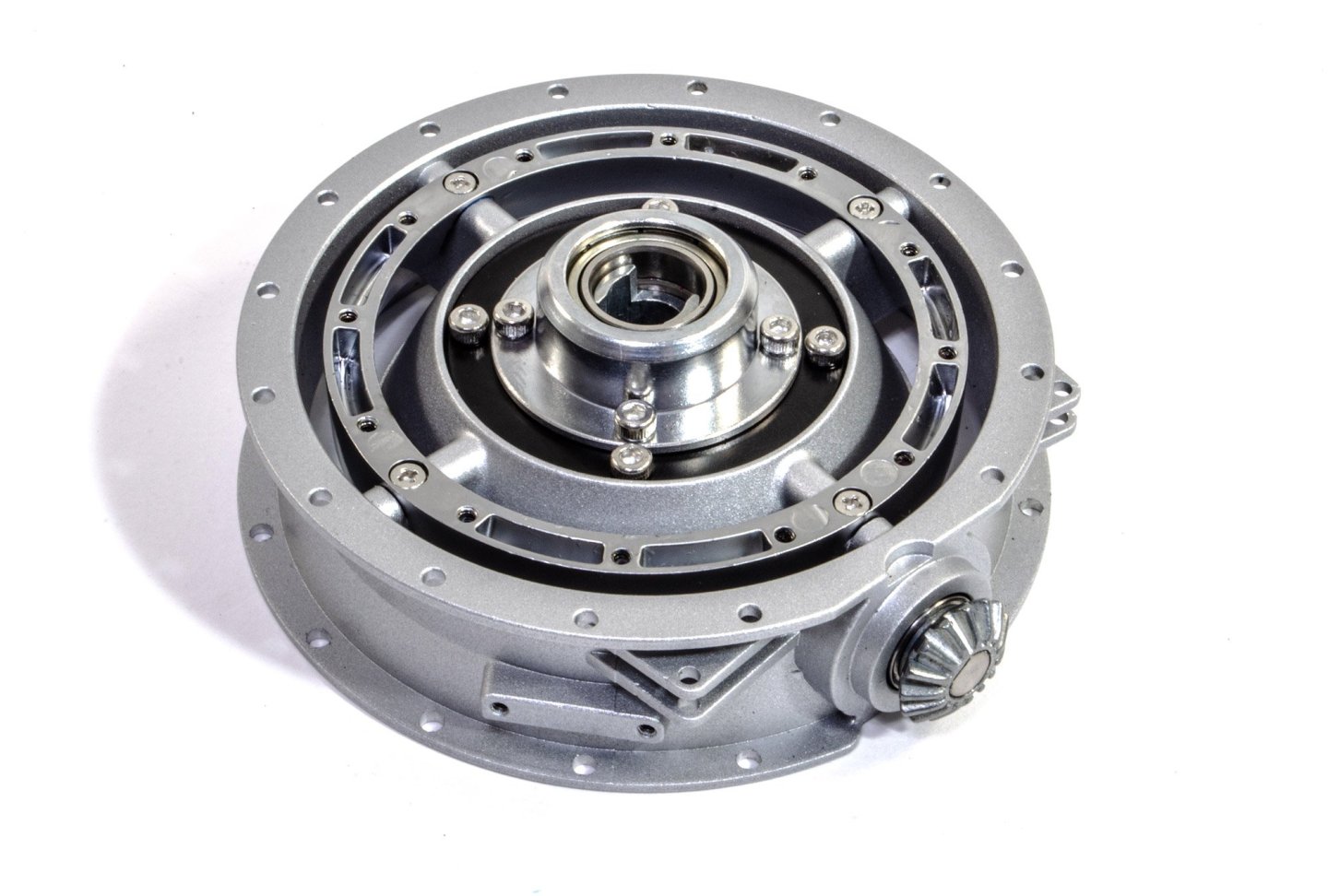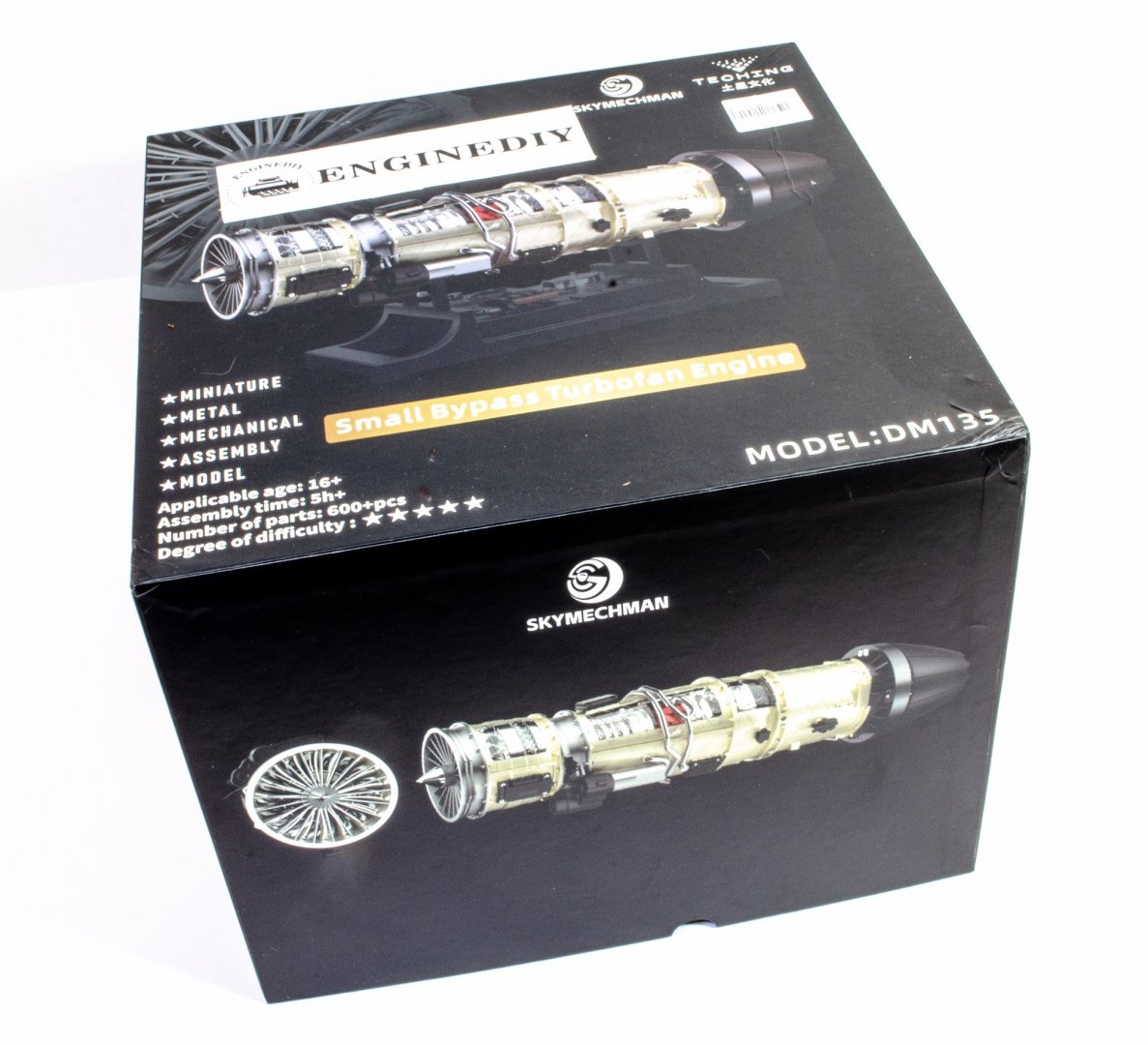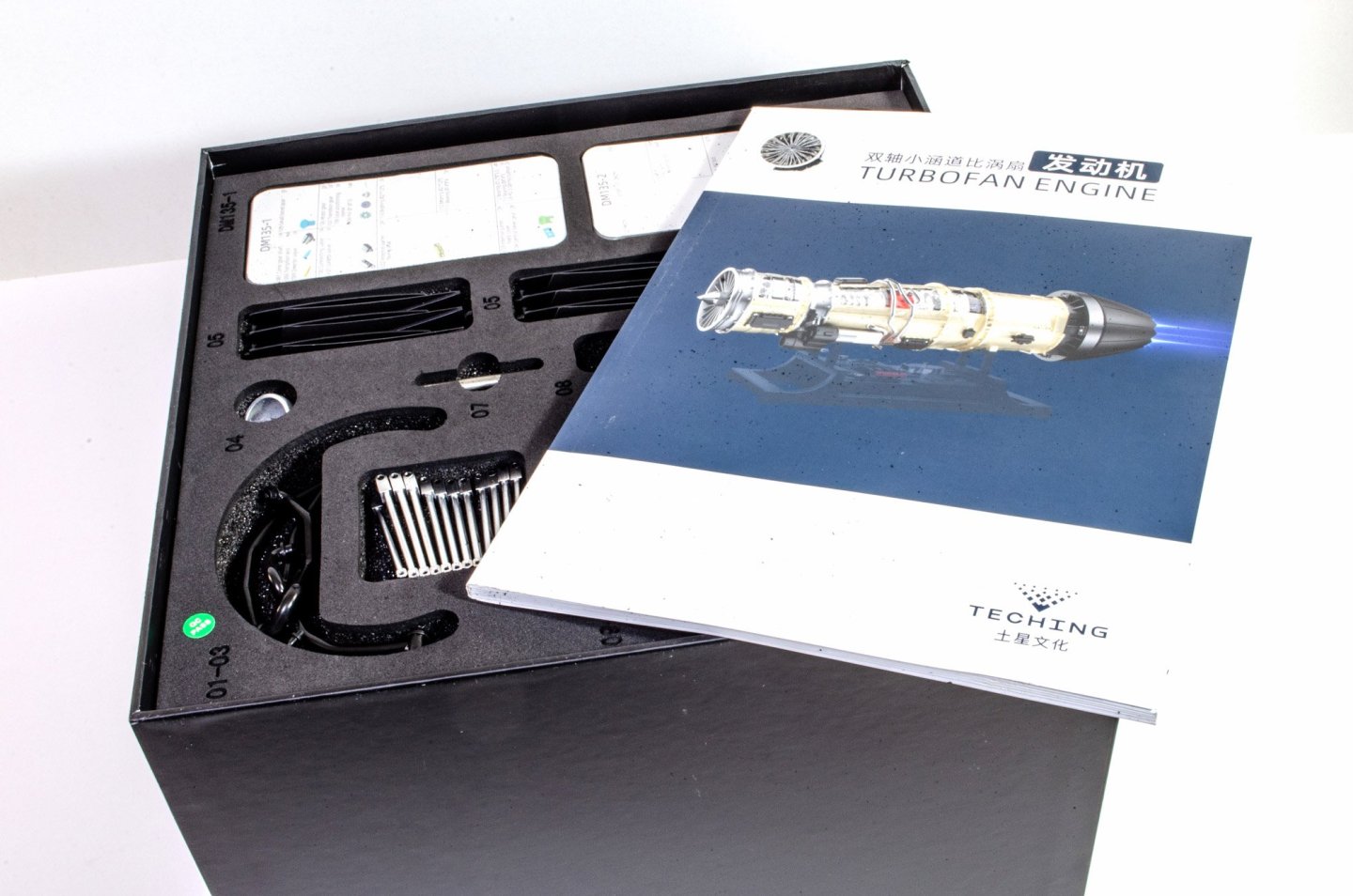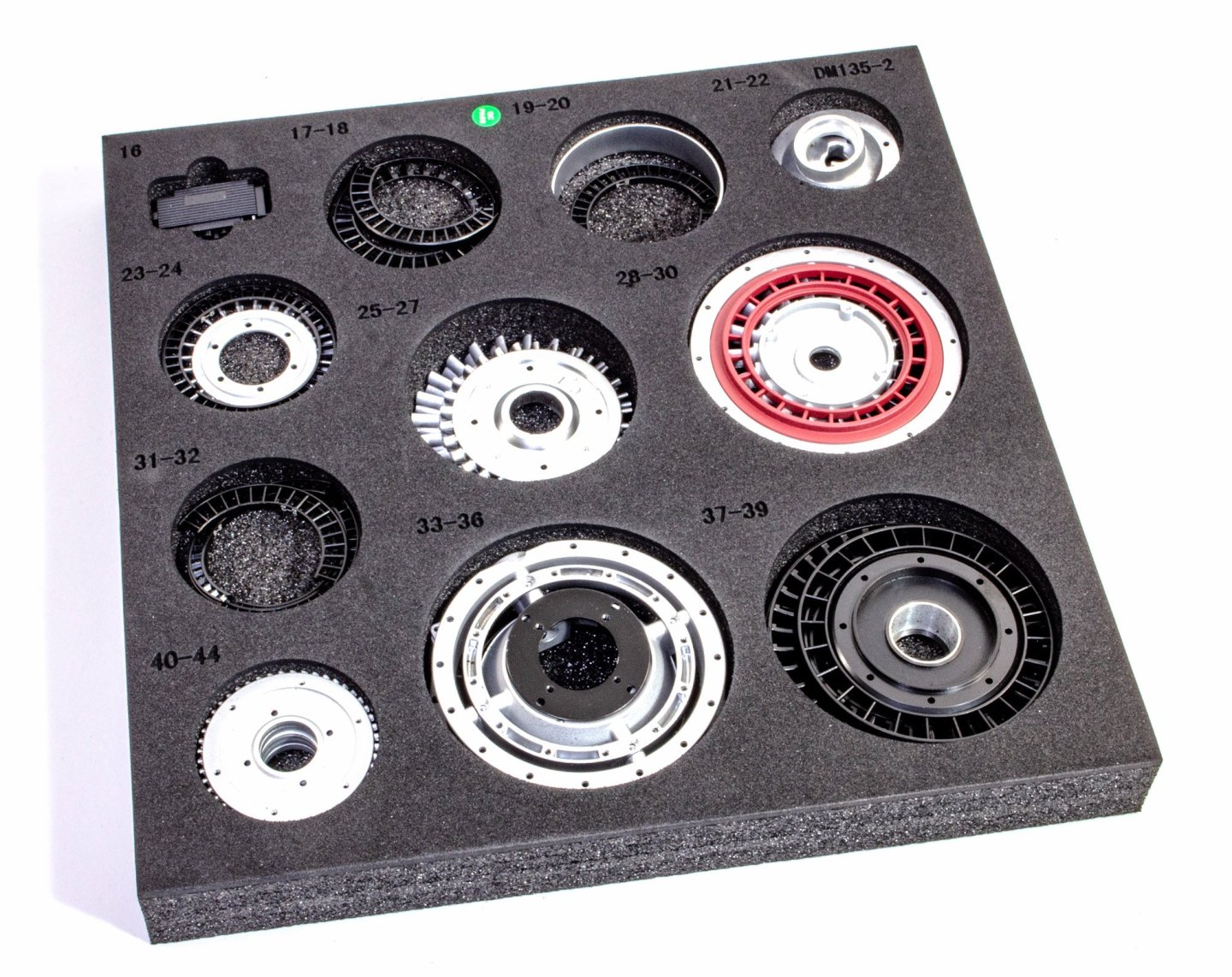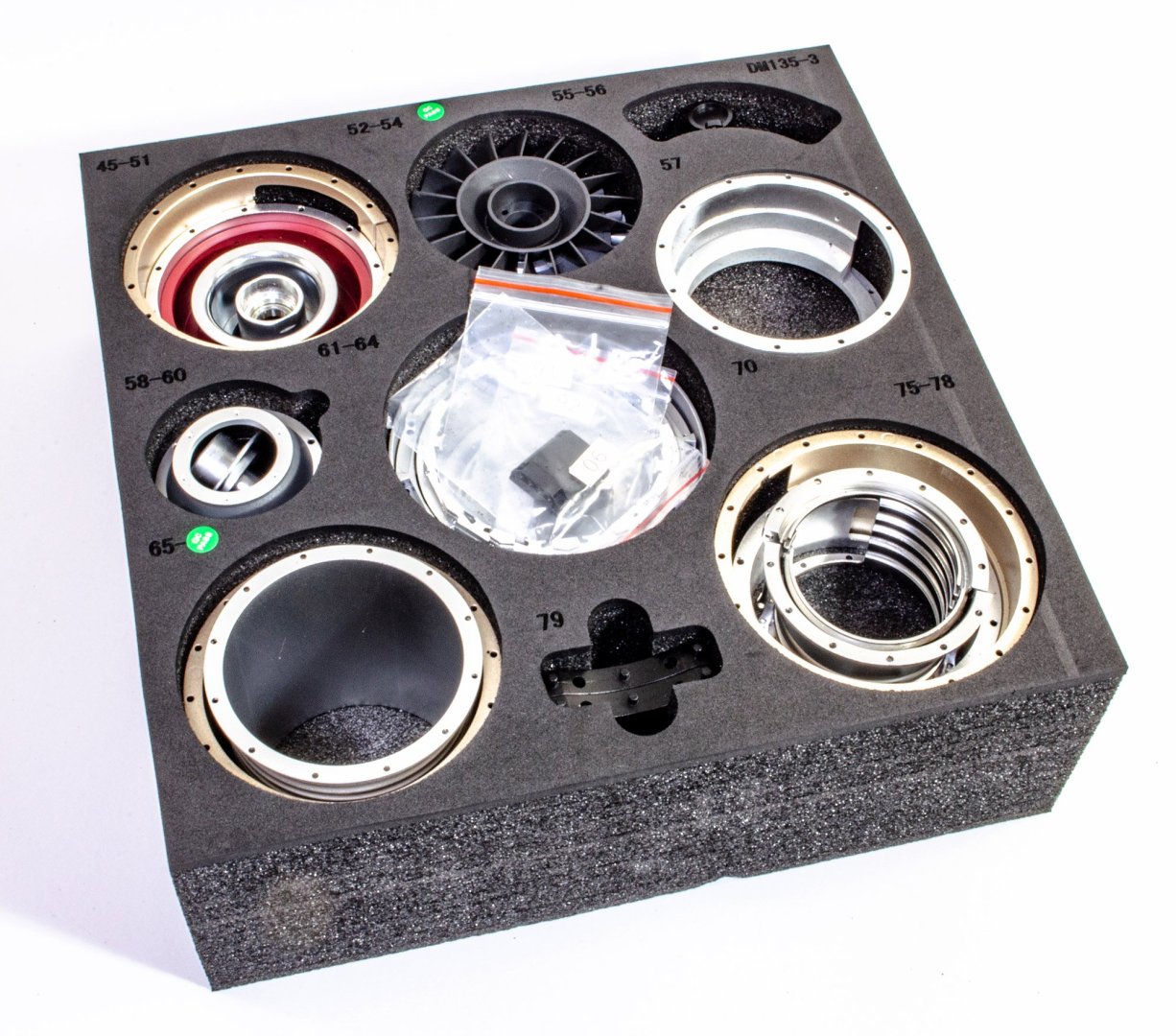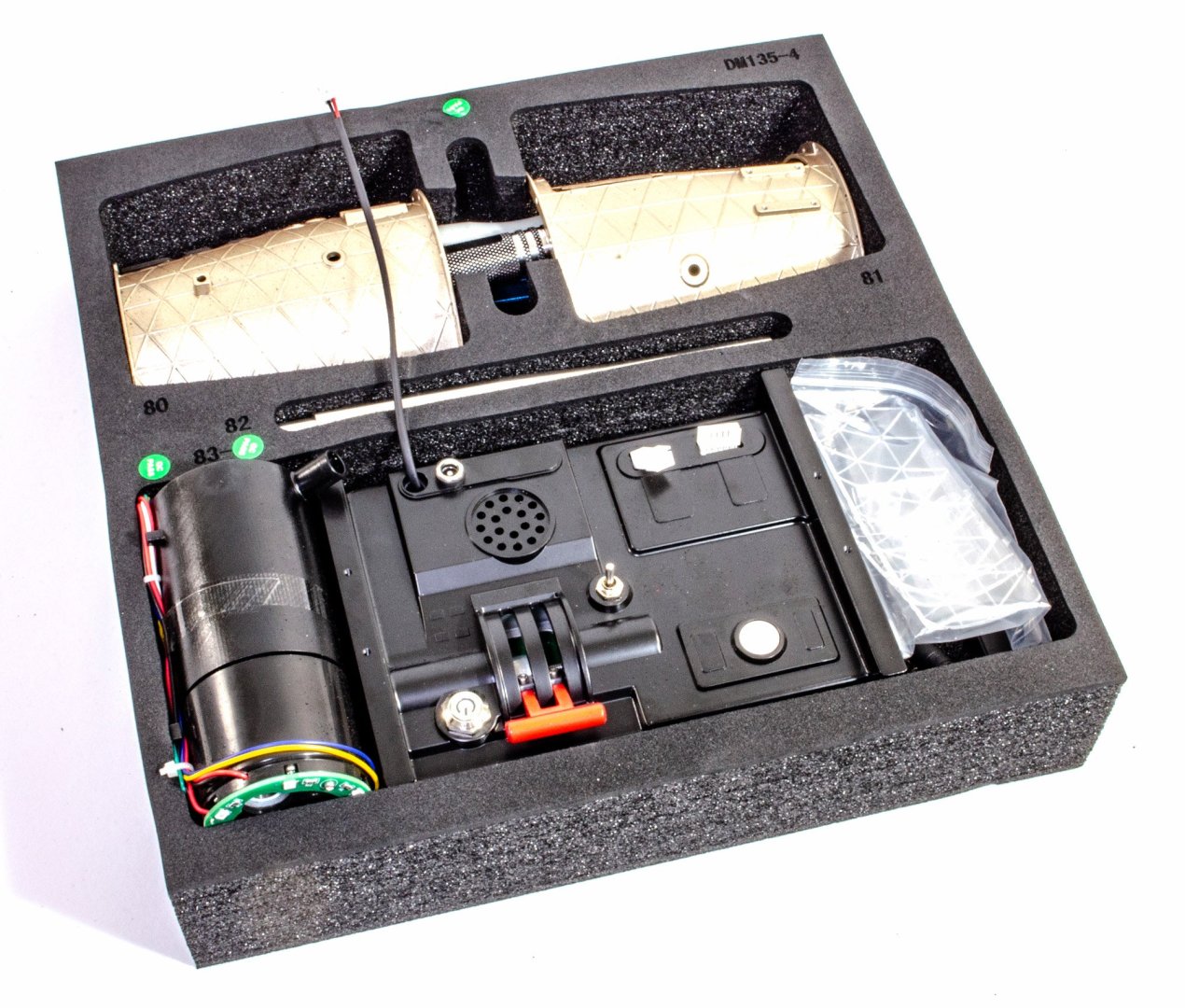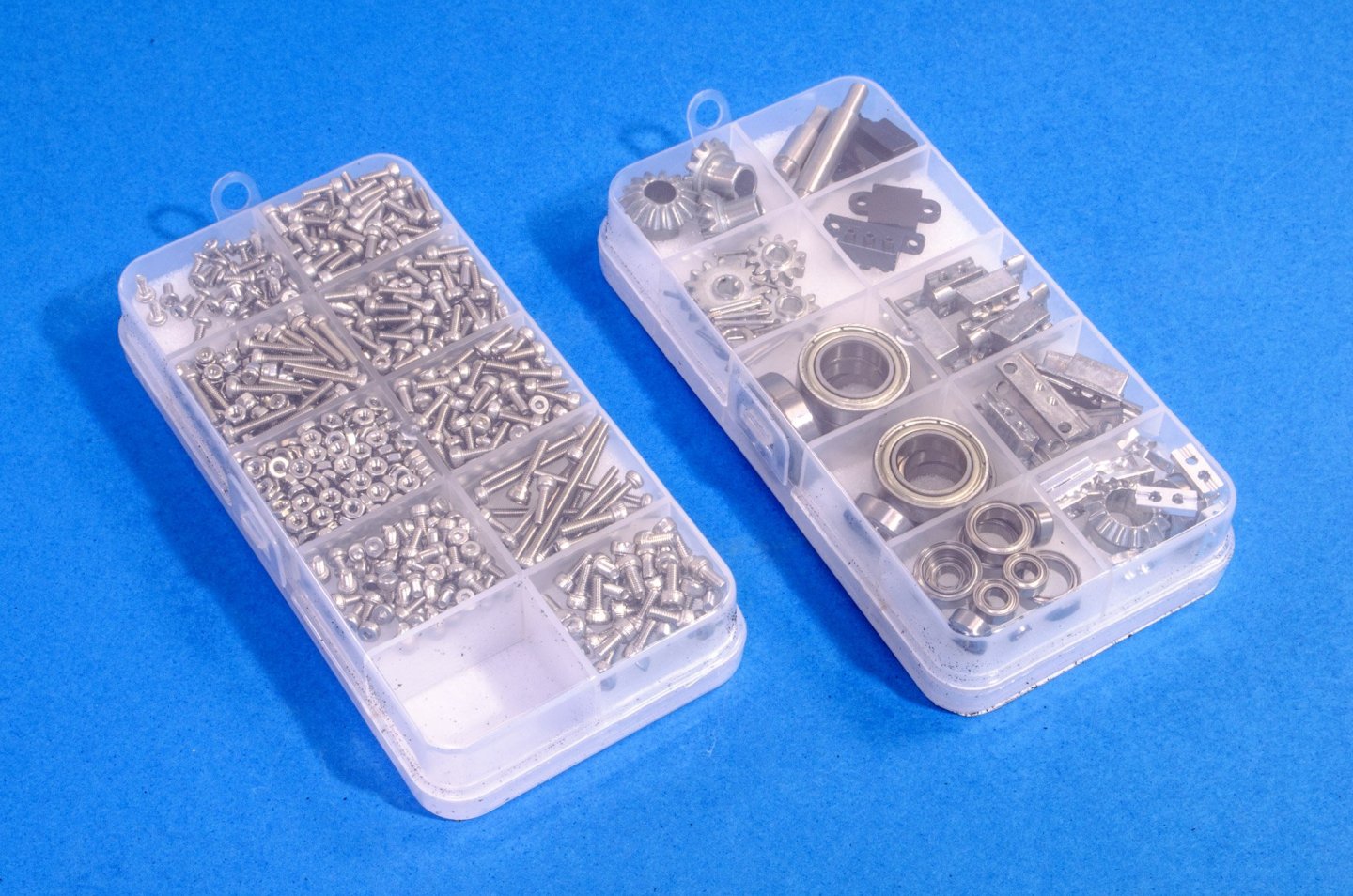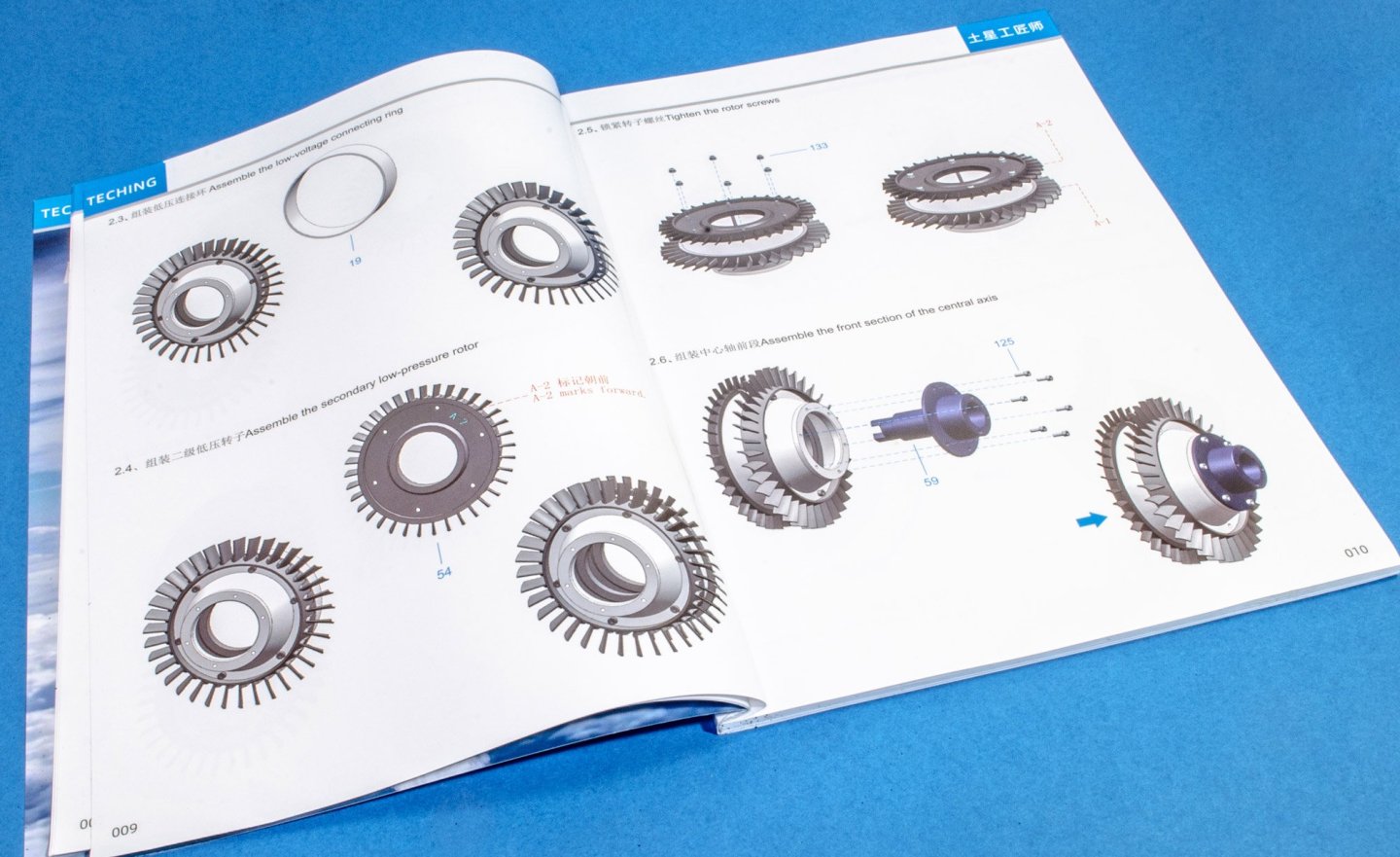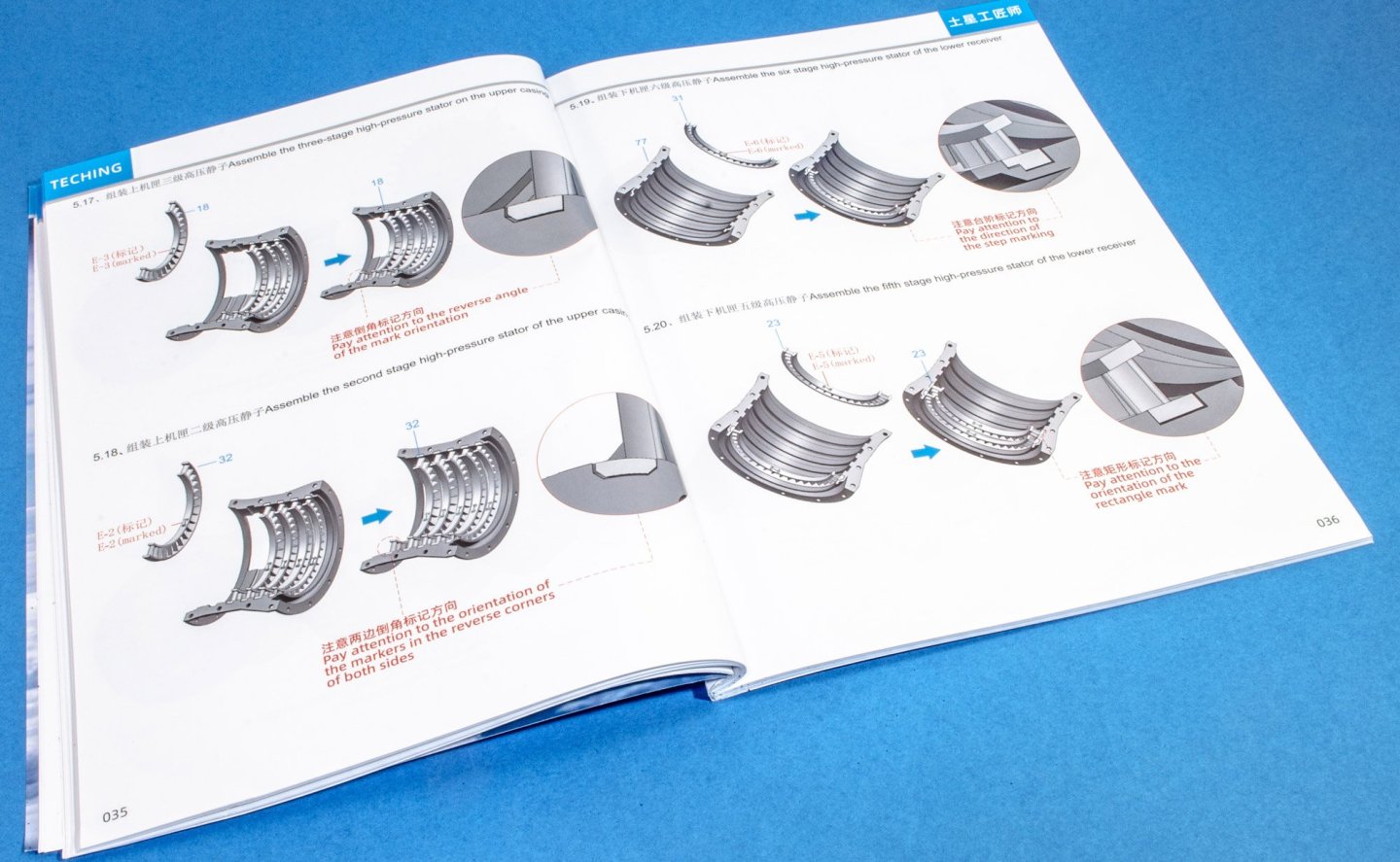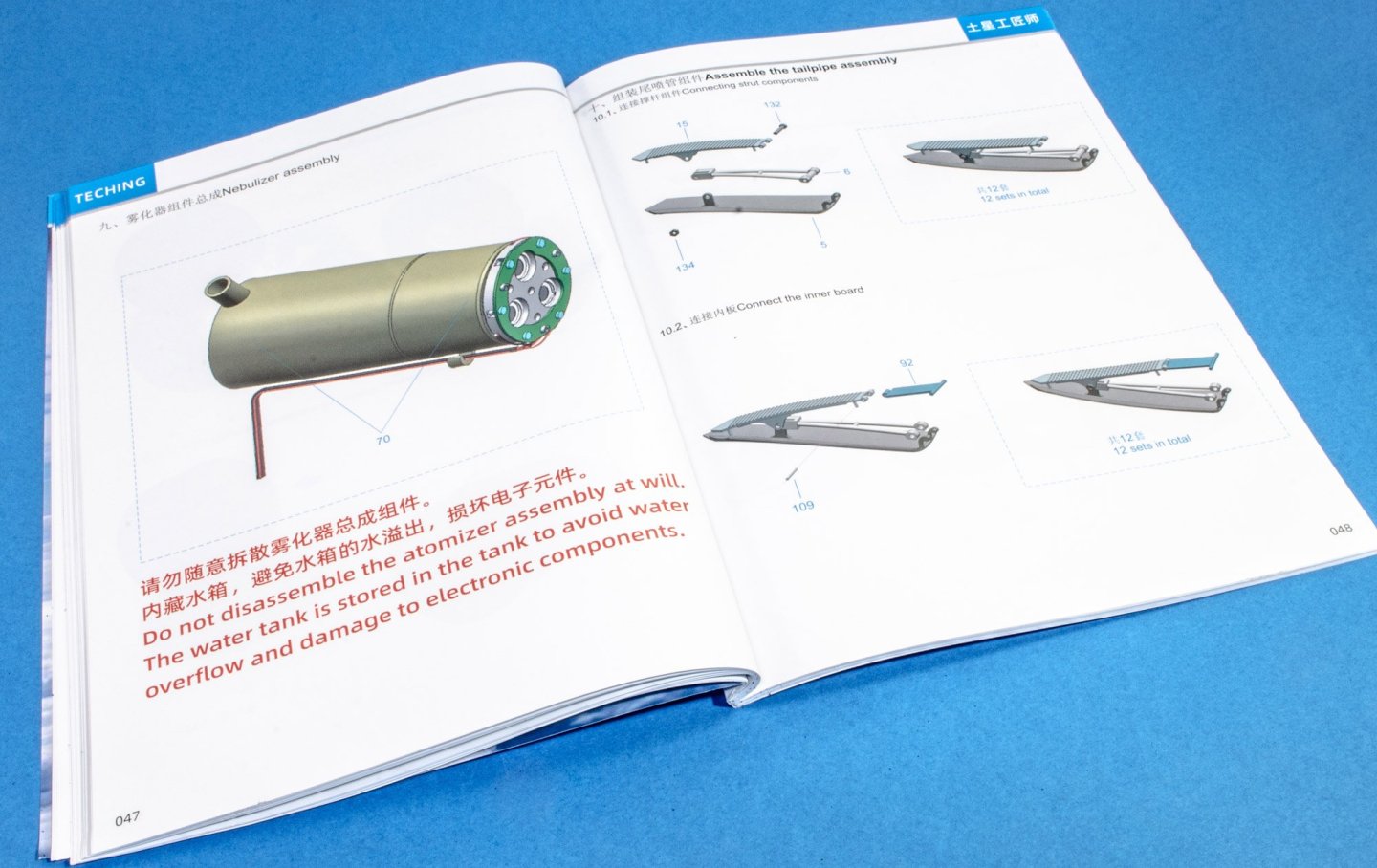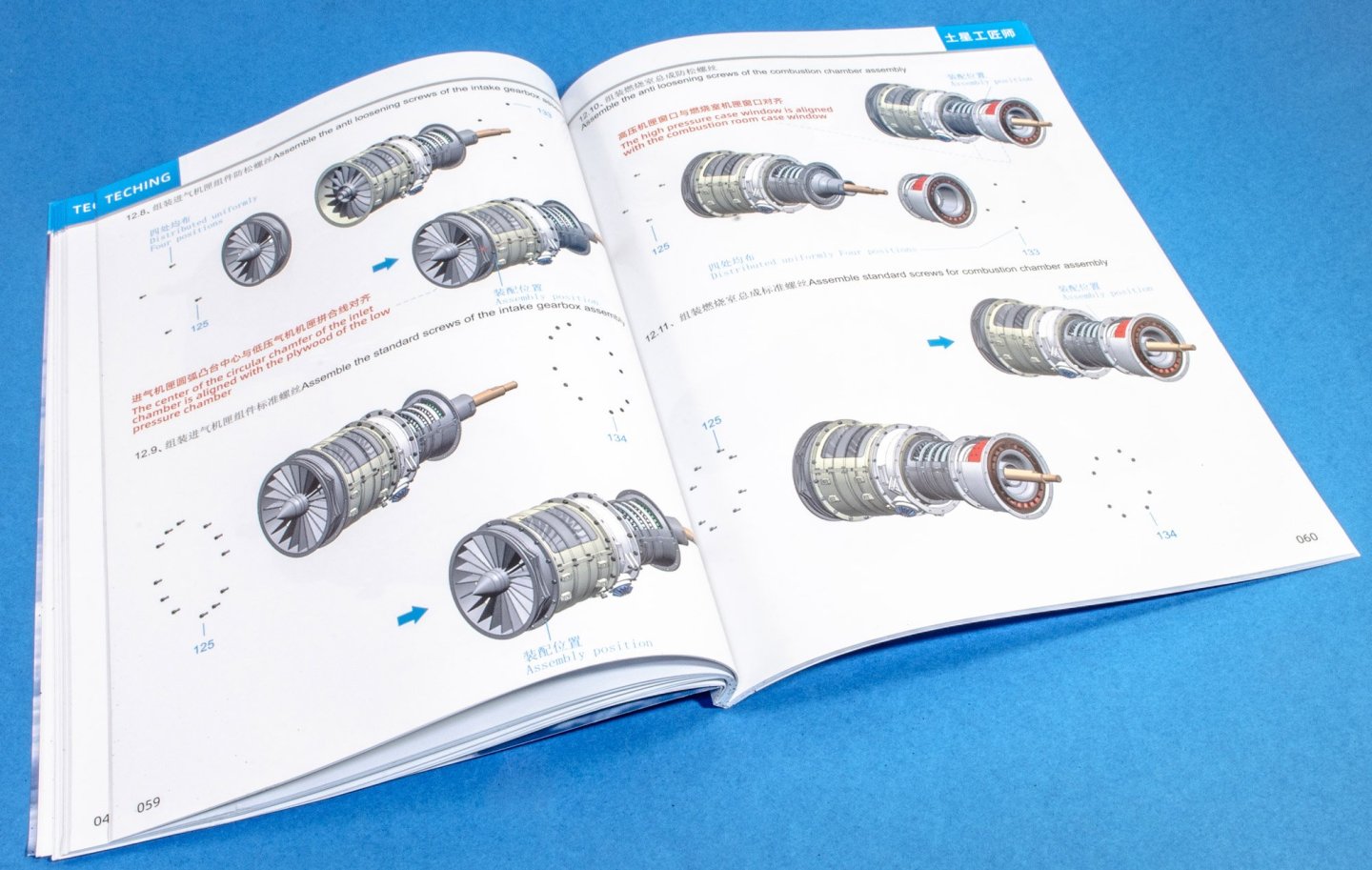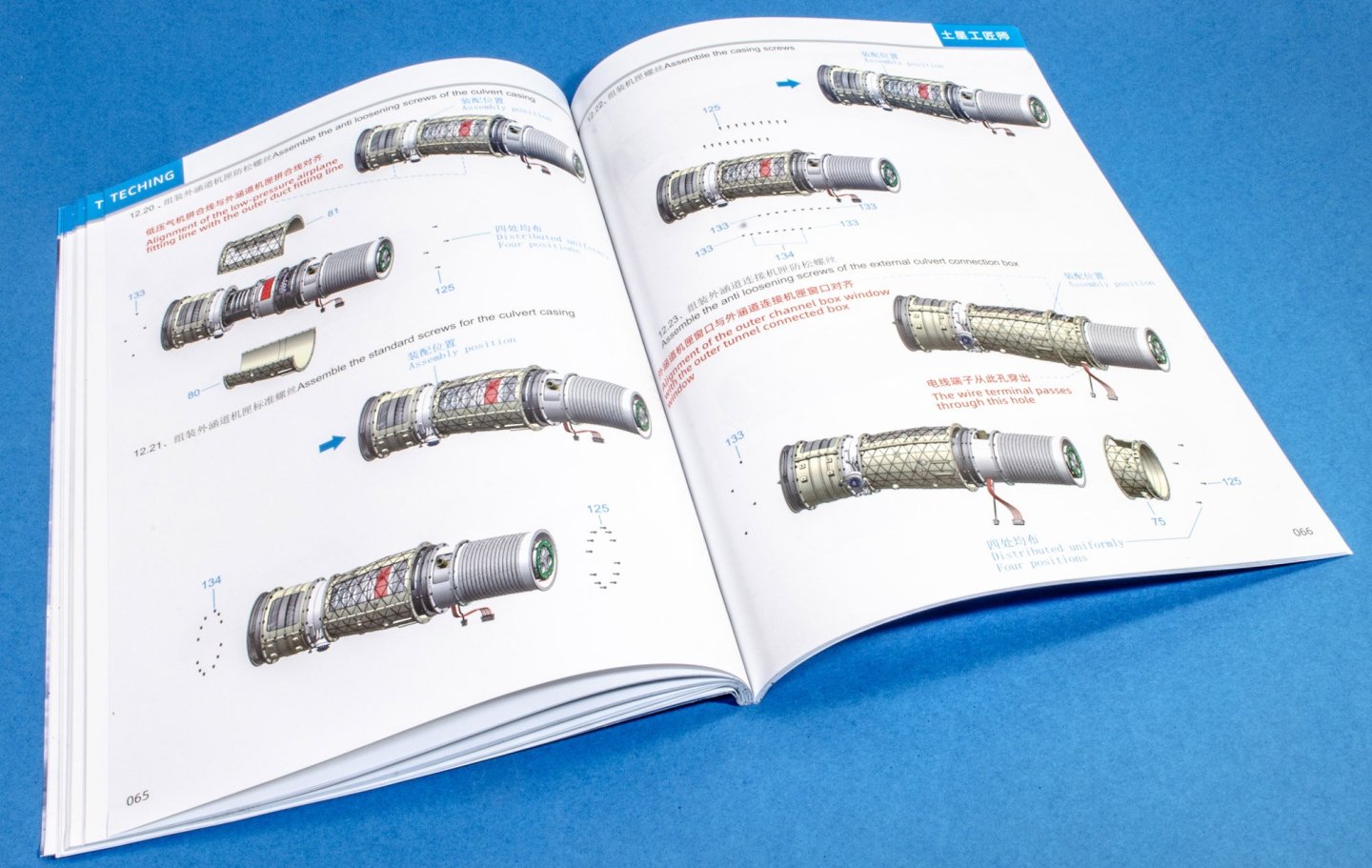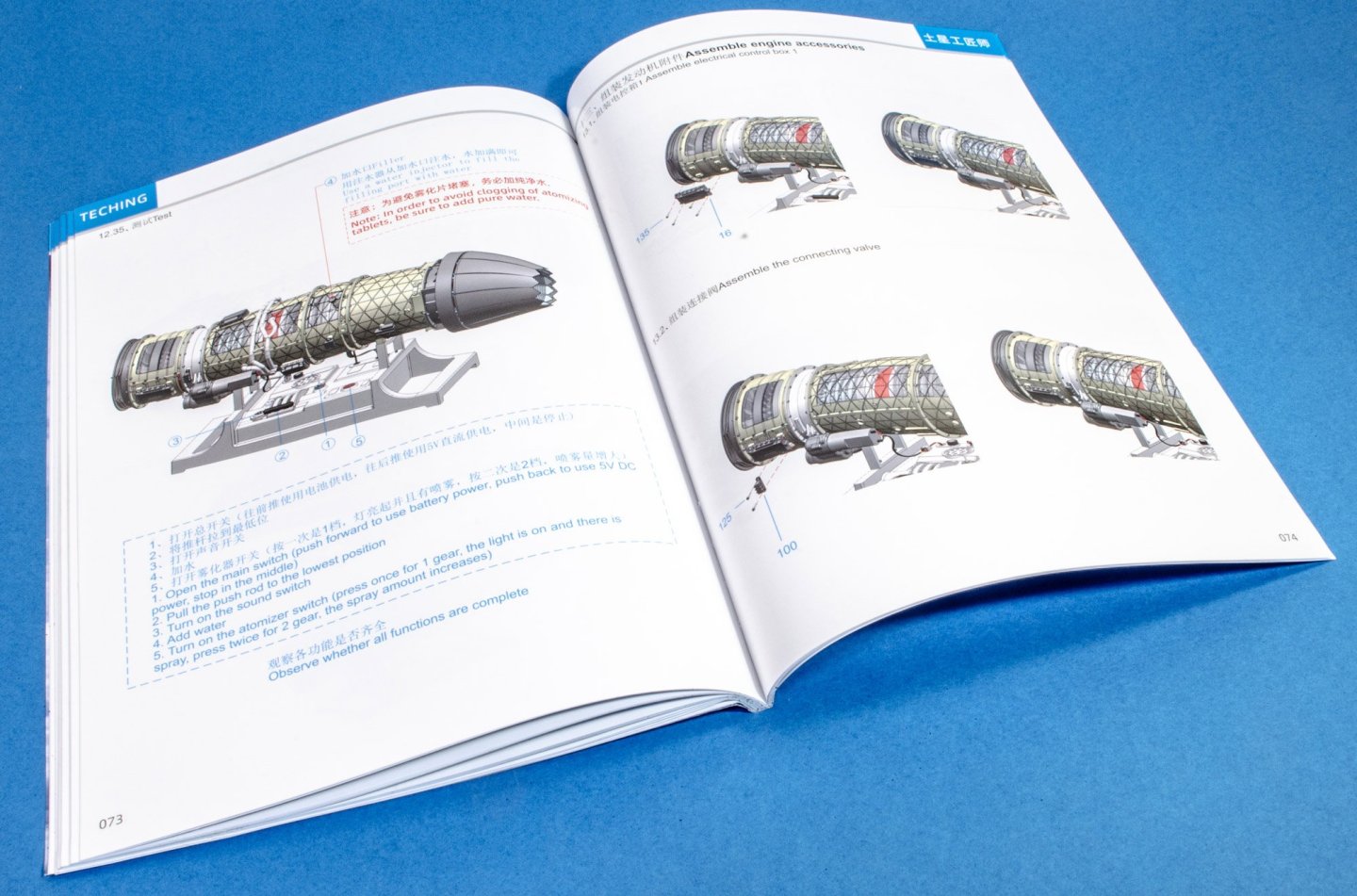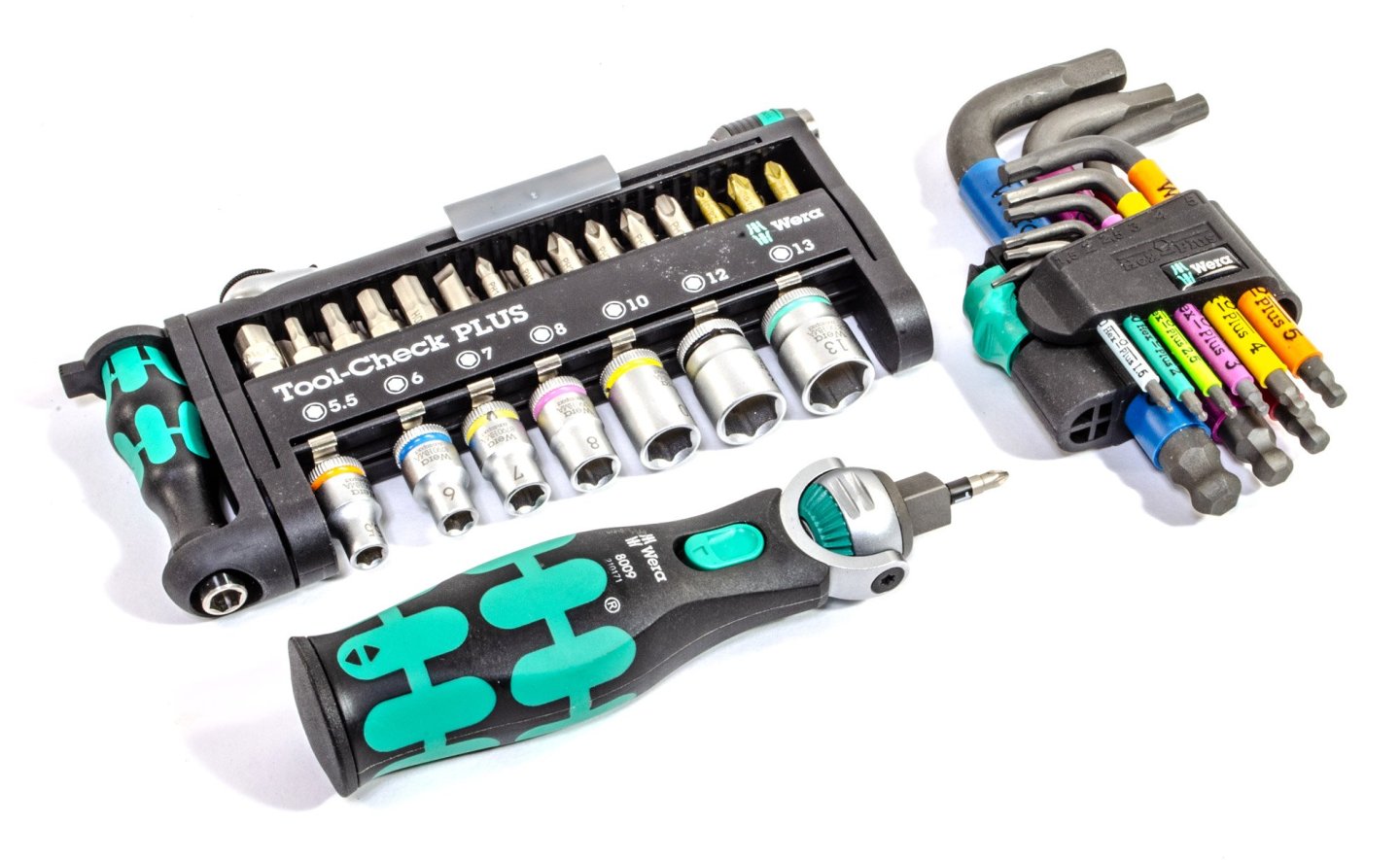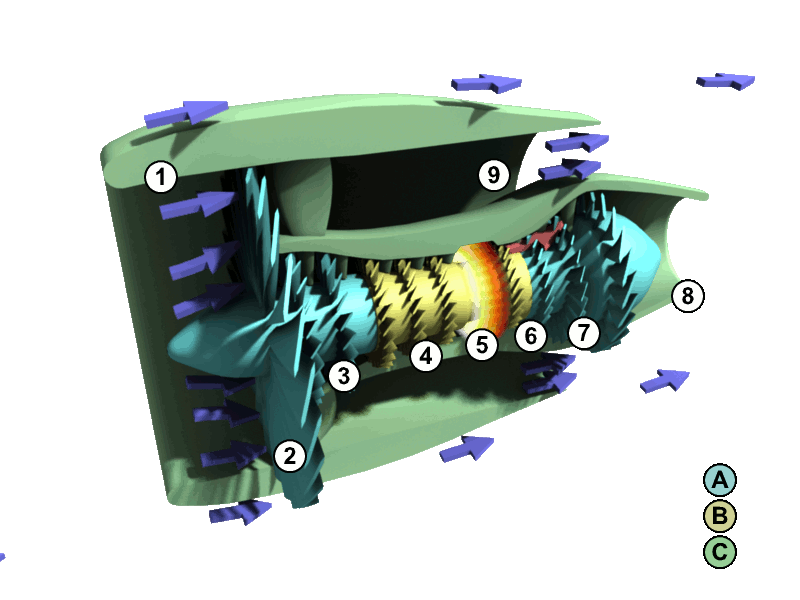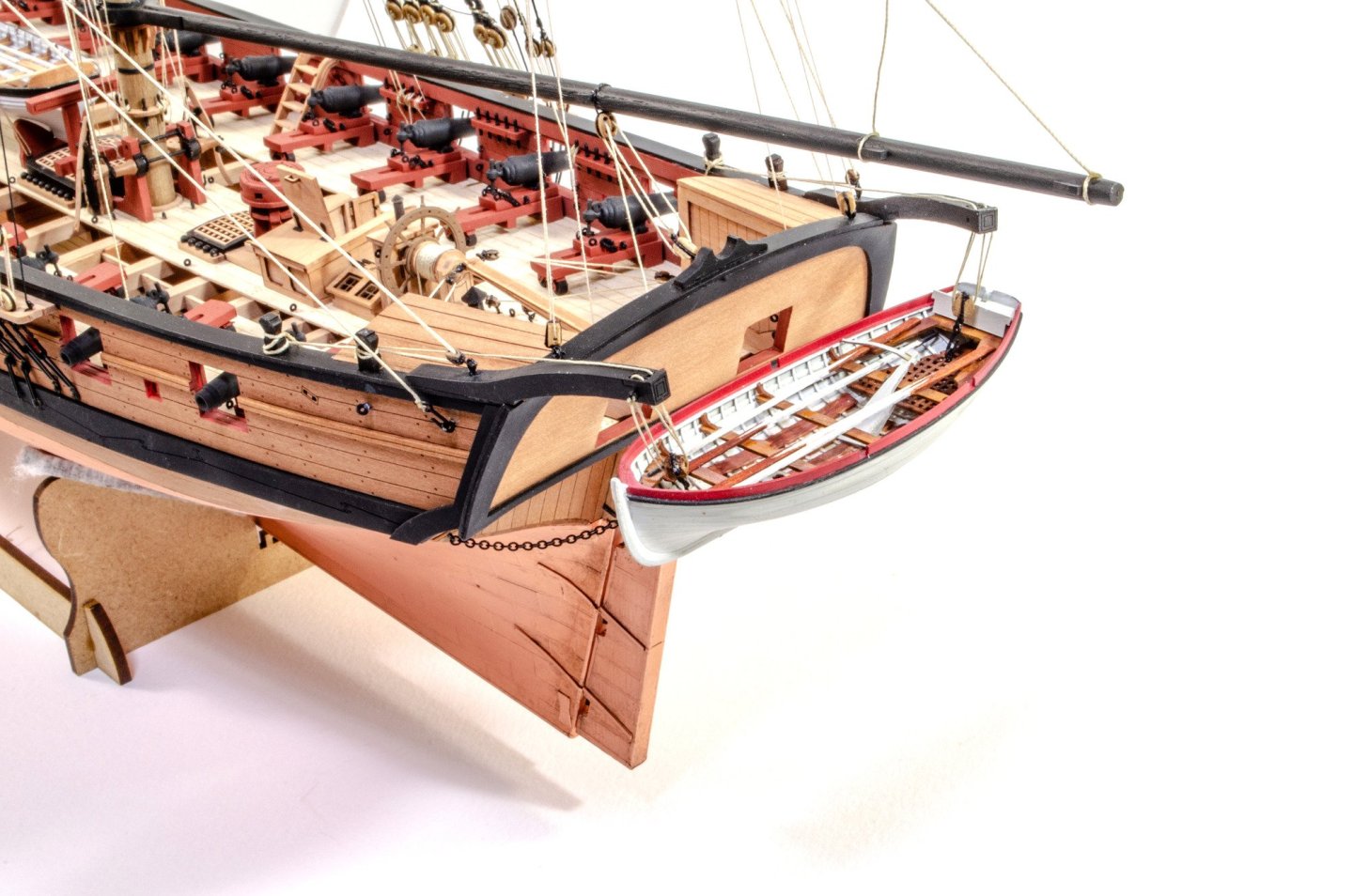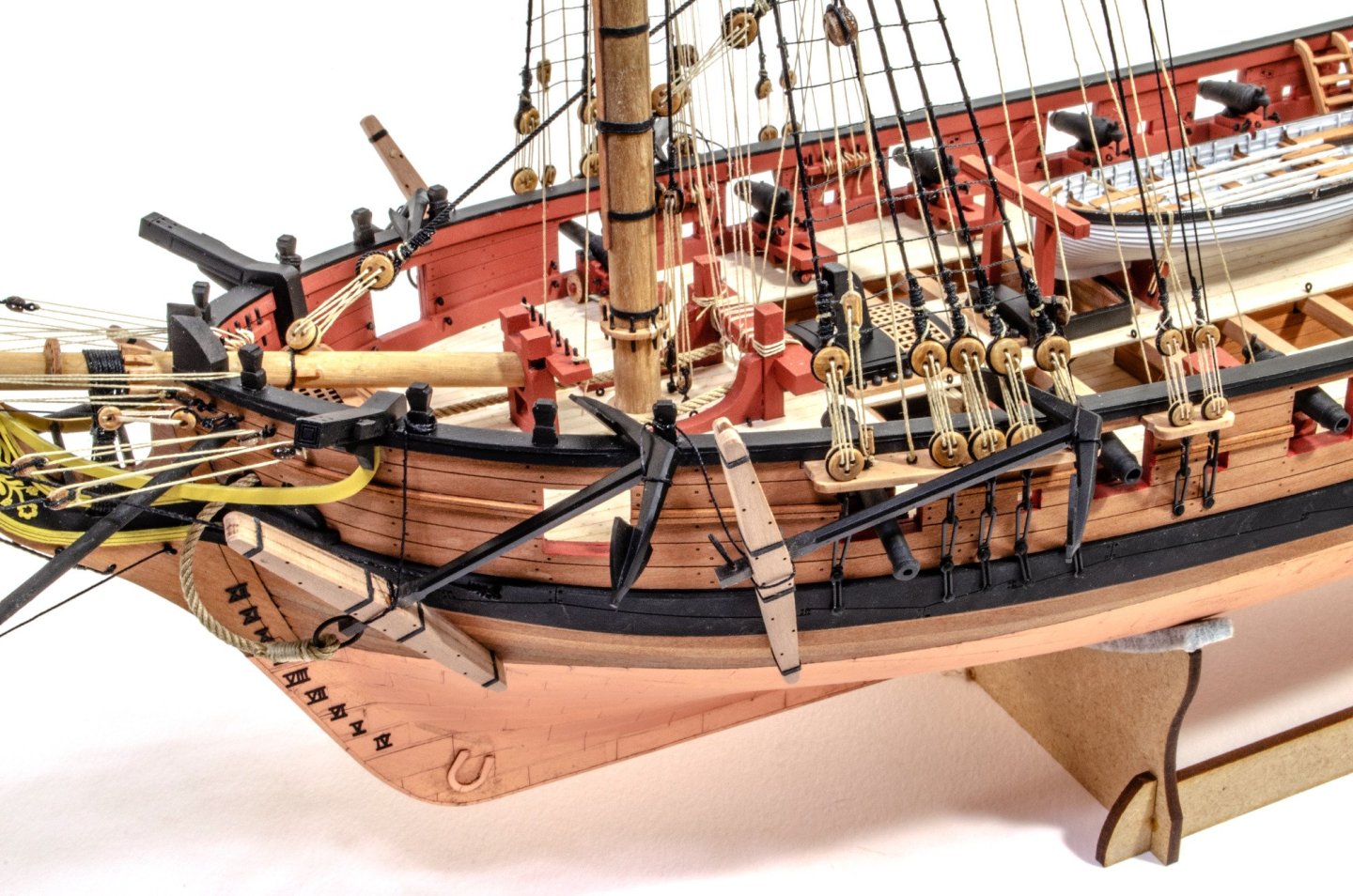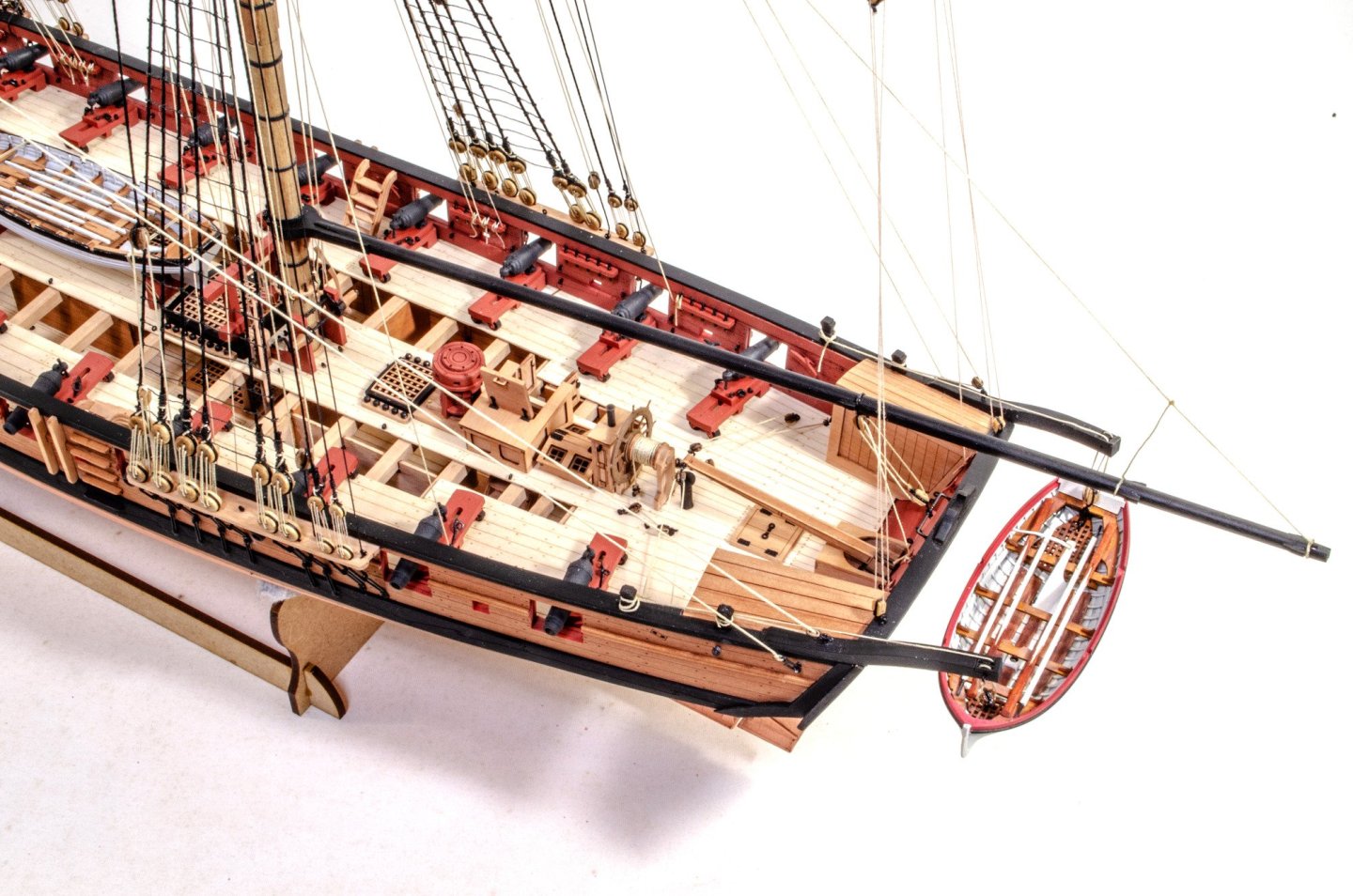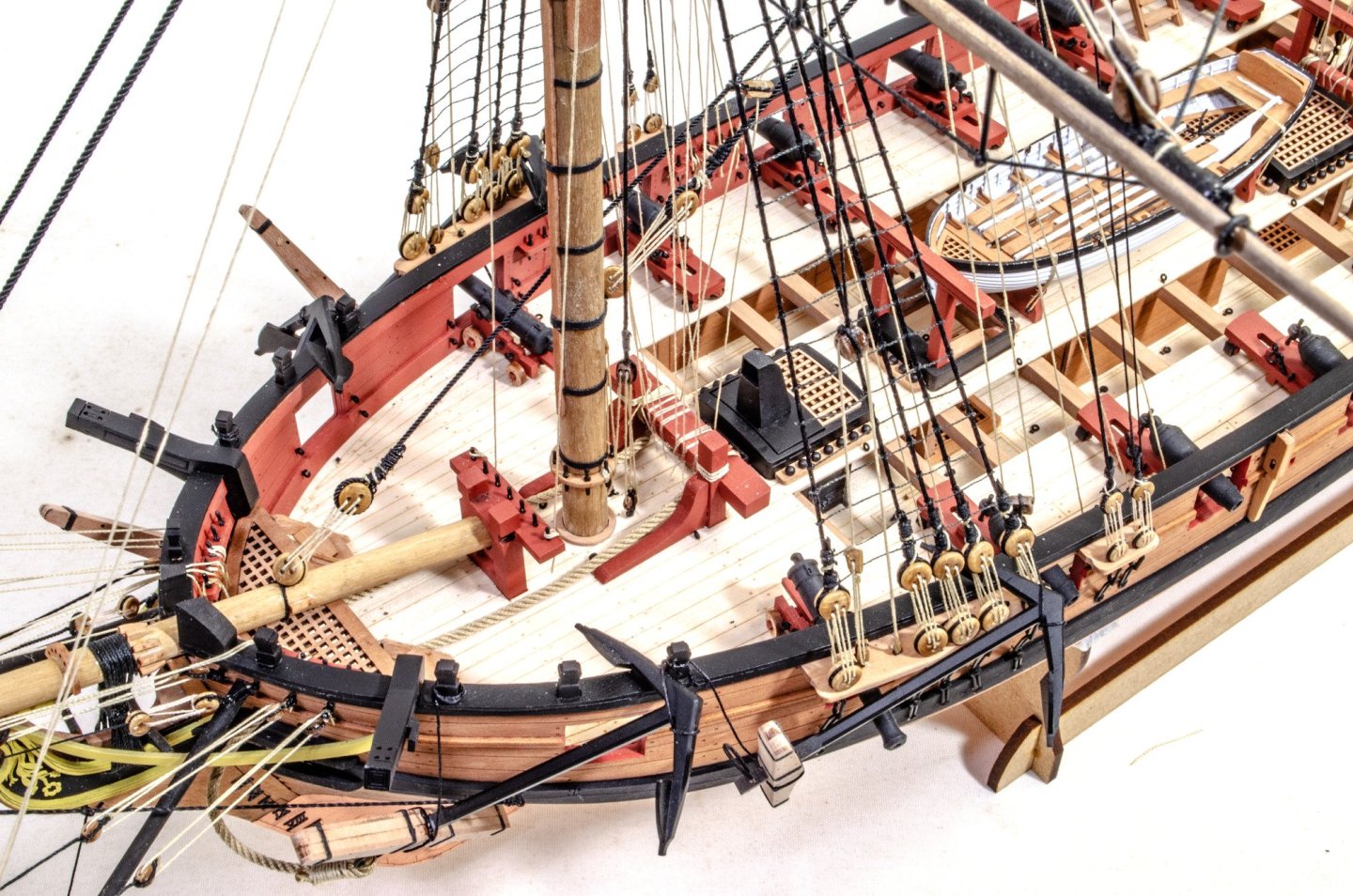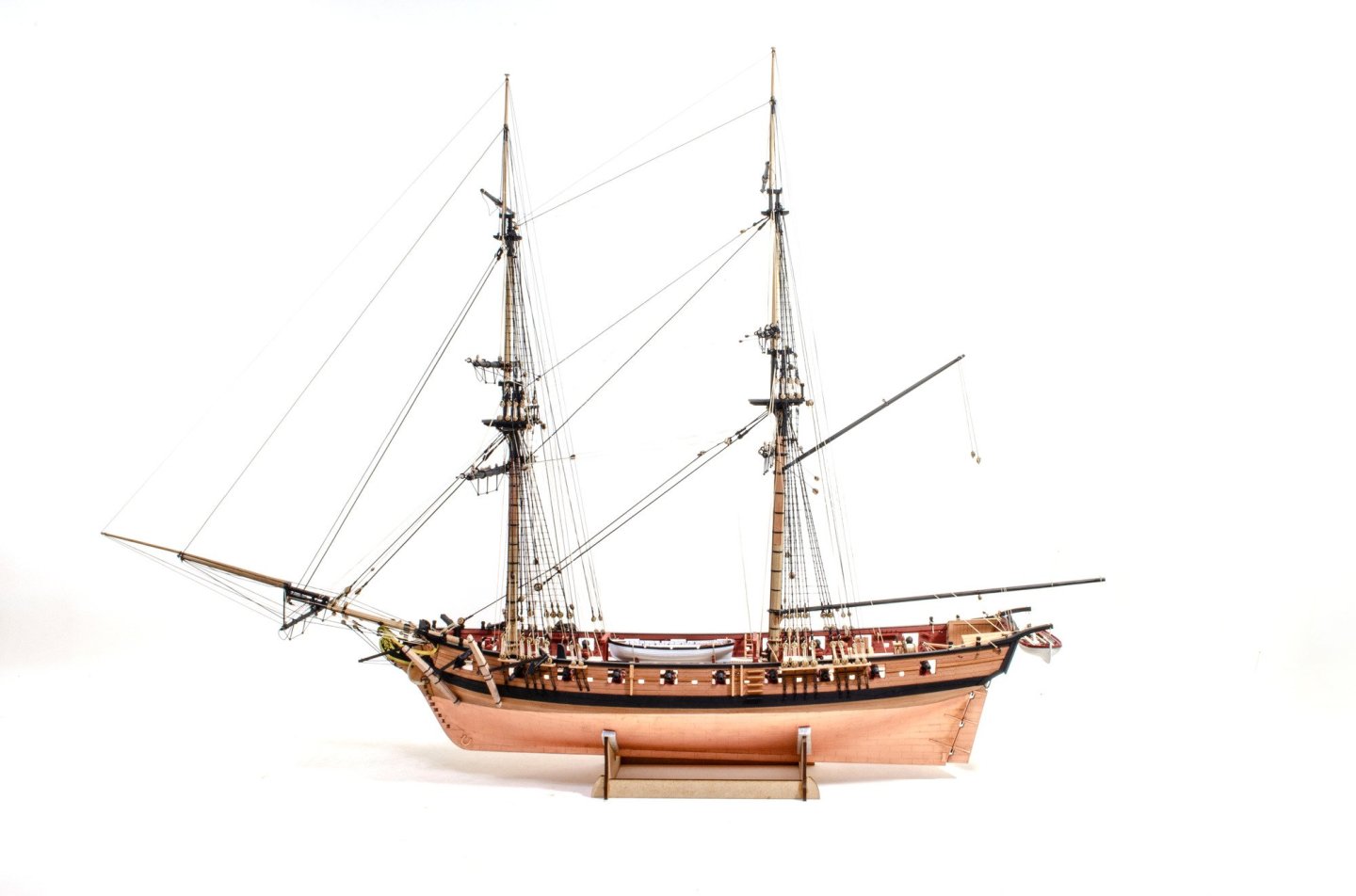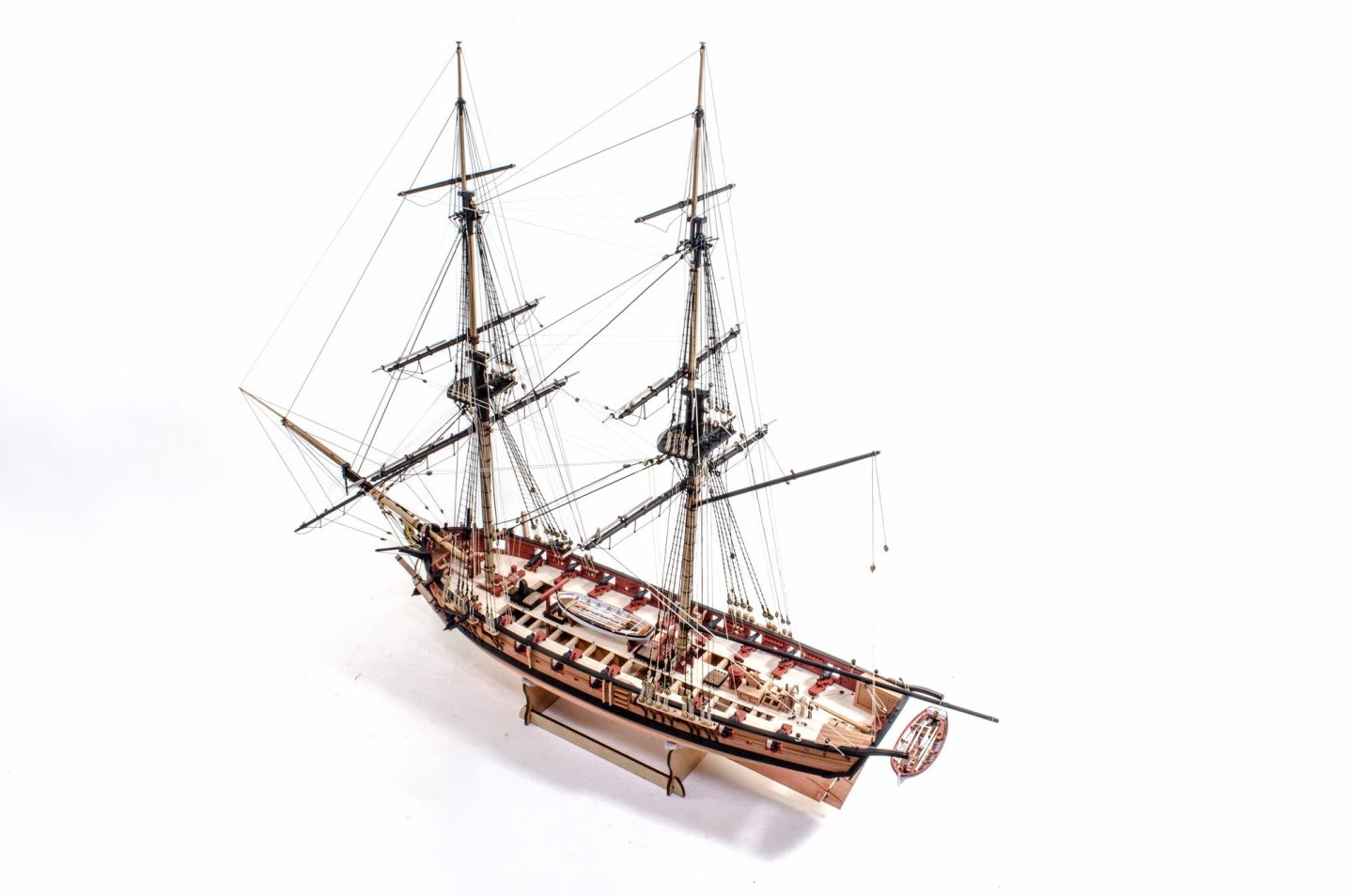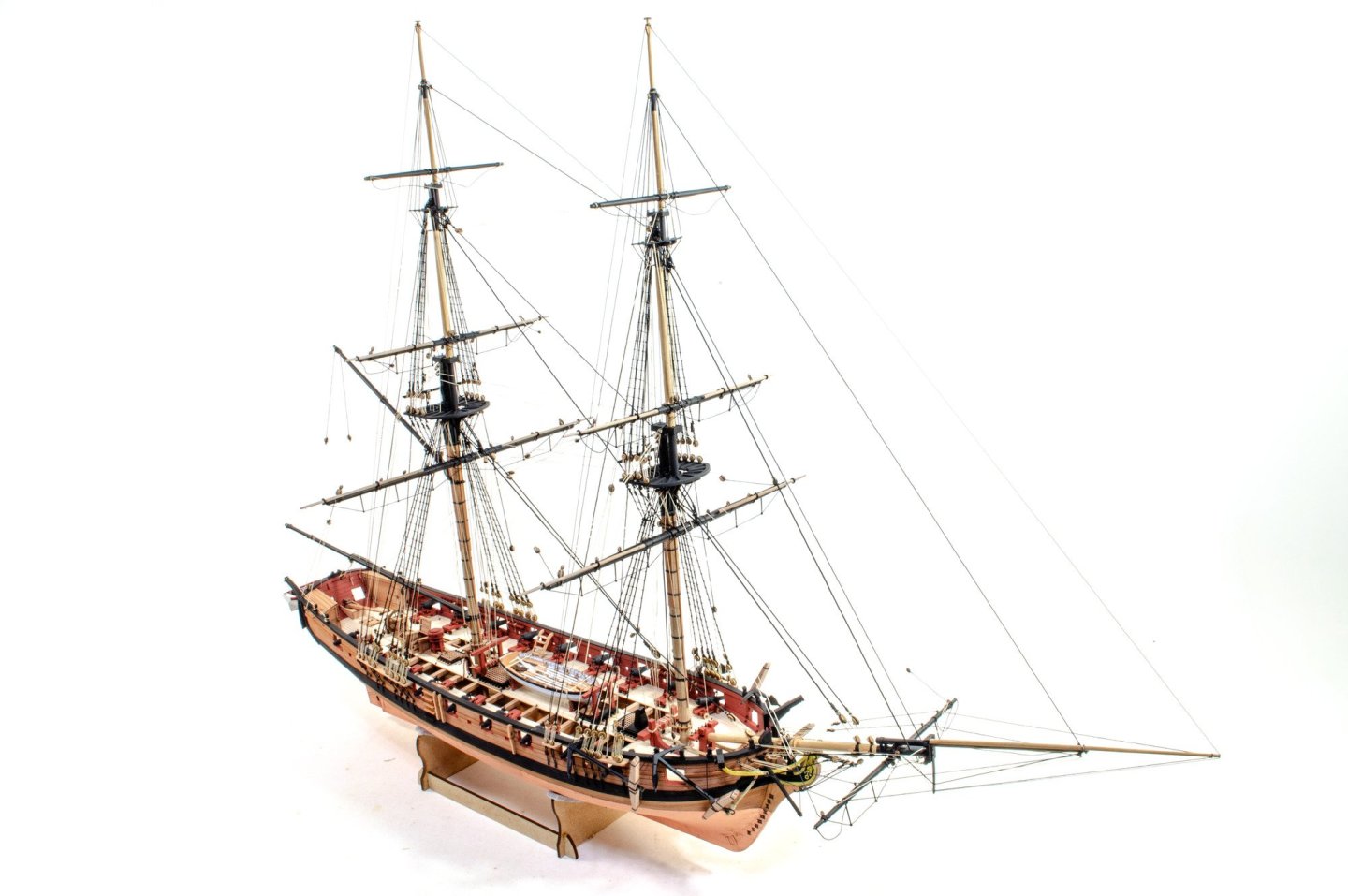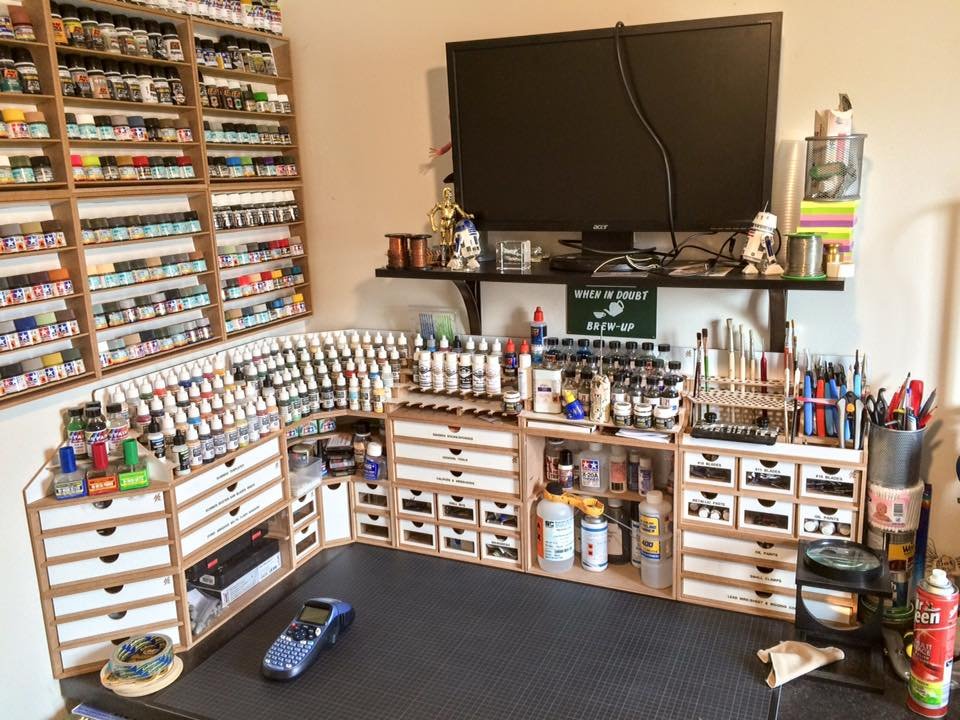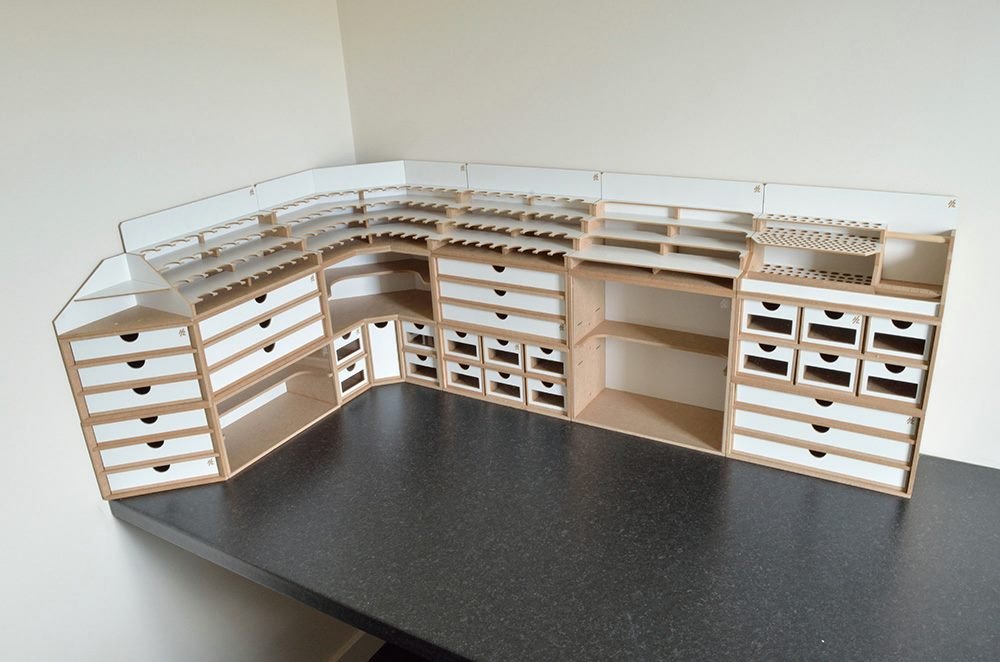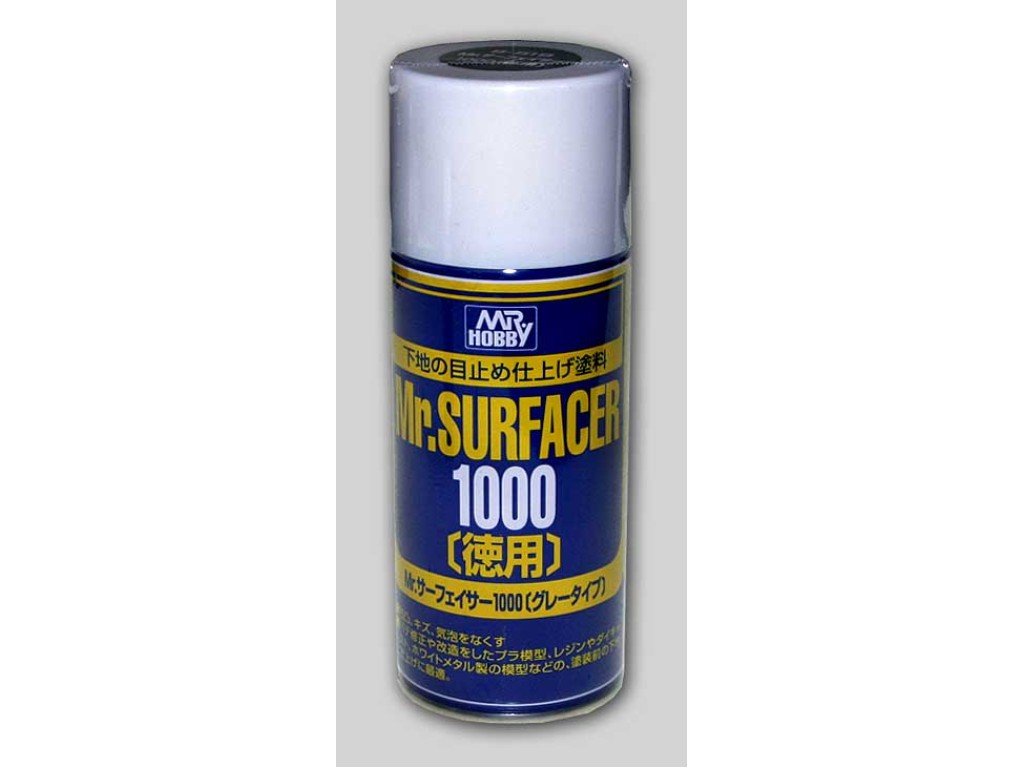-
Posts
6,063 -
Joined
-
Last visited
Content Type
Profiles
Forums
Gallery
Events
Everything posted by James H
-
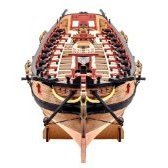
Kit review 1:10 Military Turbofan engine - TECHING (build review)
James H replied to James H's topic in Non ship-related reviews
And finally, here's the video! -

Kit review 1:10 Military Turbofan engine - TECHING (build review)
James H replied to James H's topic in Non ship-related reviews
-

Kit review 1:10 Military Turbofan engine - TECHING (build review)
James H replied to James H's topic in Non ship-related reviews
The gearbox is now bolted into position.... ....followed by the external ancillary details, such as electrical boxes and plumbing. With that done, the engine can now be mounted to the stand and be ready for running in. All I need to do now is to make a video of the engine running. I'll do that very shortly. -

Kit review 1:10 Military Turbofan engine - TECHING (build review)
James H replied to James H's topic in Non ship-related reviews
This is called the enhanced nozzle, for some reason. However, this is very simple to assemble. Just two parts. At this point, all of the assemblies you've seen being built, will now be put together. Orientation is VITAL as you progress. The drive shaft is now slotted into the engine. Note its taper. That taper will mean that any error you make will mean a full strip down due to the nature of design. Keep your eye on the ball as you progress, and you will have no problems. A 3D printed fan is now fitted into the forward engine housing, followed by the intake/spinner assembly. More of our assemblies are now slotted and bolted into place. Ok, this is one thing you've not yet seen. That drum on the right, is actually a water/atomiser tank which you will fill, and clouds of vapour will emit from it. It also has a ring of blue LEDs to simulate the heat from the engine. A lot of the work so far built will now be covered up with the exterior engine casings. These have clear panels and align with the cutouts in the interior engine. The nozzle assembly,mbly can now be fitted. Careful with this one as it's quite heavy. -

Kit review 1:10 Military Turbofan engine - TECHING (build review)
James H replied to James H's topic in Non ship-related reviews
High pressure turbine. A typically easy assembly to build. The orientation of the text 'C-1' is vital when building, as it is throughout the model, where text is present. The low pressure turbine is now built. One area of the build that took the longest was tailpipe/nozzle. The petals on this are fully articulating and you can pose them from fully closed to fully open. -

Kit review 1:10 Military Turbofan engine - TECHING (build review)
James H replied to James H's topic in Non ship-related reviews
Work continues on the previous assembly, by the addition of the first stage high pressure stator. As this model is actually electrically operated, the gearbox assembly is now to be built. Light oil is used on the various gears within this. Please ignore that I missed the main meshing gear off on these photos! I did go back and fit it later. The gearbox is then tested for mechanical integrity by plugging it into the base and running it for a few moments. Now it's the turn of the high pressure compressor to be built. This is sat within a similar housing as the one I built previously. All of the stators in this are different and have identifying text on them. Again, you can see I didn't add the front-most fan. This was done at a later stage, when it occurred to me! One thing I will say is that the design of this model is so that if you do forget to add something, then you will likely need to backtrack through construction and deconstruct large parts in order to fit that part. It's always best to thoroughly read the instructions. In fairness to me, I was coming down with flu and my concentration levels were low! Combustion chamber. Adding a nice splash of oxide red into the model, there was nothing at all complicated here. More soon! -

Kit review 1:10 Military Turbofan engine - TECHING (build review)
James H replied to James H's topic in Non ship-related reviews
The first things that are built up are the intake gearbox and the first stage low pressure compressor. There are bearings and gearings on these which enable them to lock into place as you progress. I also use a very small spot of thread-lock too; the sort that can easily be cracked if necessary. The low pressure stator housing is now assembled. No fixings here. All of these parts sit neatly in their respective slots, and care is needed to make sure they remain in situ during final assembly. The intermediate receiver assembly is the next section to be built up. All of these parts are built 'dry' at this stage, but will later be packed out with grease for lubrication. More soon! -
1:10 Military Turbofan engine - TECHING Available from EngineDIY for $799.99 This new kit from Teching, is based on the Pratt & Whitney F135 turbofan engine, that powers the Lockheed Martin F-135 Lightning II. A turbofan or fanjet is a type of air-breathing jet engine that is widely used in aircraft propulsion. The word "turbofan" is a combination of the preceding generation engine technology of the turbojet, and a reference to the additional fan stage added. It consists of a gas turbine engine which achieves mechanical energy from combustion, and a ducted fan that uses the mechanical energy from the gas turbine to force air rearwards. Thus, whereas all the air taken in by a turbojet passes through the combustion chamber and turbines, in a turbofan some of that air bypasses these components. A turbofan thus can be thought of as a turbojet being used to drive a ducted fan, with both of these contributing to the thrust. Animation of a 2-spool, high-bypass turbofan A. Low-pressure spool B. High-pressure spool C. Stationary components 1. Nacelle 2. Fan 3. Low-pressure compressor 4. High-pressure compressor 5. Combustion chamber 6. High-pressure turbine 7. Low-pressure turbine 8. Core nozzle 9. Fan nozzle The turbofan was invented to improve the fuel consumption of the turbojet. It achieves this by pushing more air, thus increasing the mass and lowering the speed of the propelling jet compared to that of the turbojet. This is done mechanically by adding a ducted fan rather than using forces by adding an ejector, as first envisaged by Whittle. (Information abridged from Wikipedia) The kit As with the previous turbofan engine I reviewed here, this comes in a very sturdy box that contains FOUR trays of precision machined parts, including two trays of bolts, bearings, nuts, washers, and a small number or specific parts that are machined for this release. The instruction manual is superb, being printed in a glossy 90-page format. As well as the step by step instructions of the assembly of each engine stage, you are also presented with an illustrated parts list, operating instructions, and a list of safety precautions. This kit does come with a small selection of tools, such as wrenches and hex drivers. However, I opted to use my Wera tools for the main part. I'll start to post my assembly of this engine tomorrow.
-
What a beautiful job you've made of this. Makes me feel nostalgic for the one I built.
- 158 replies
-
- San Felipe
- Panart
-
(and 1 more)
Tagged with:
-
I reckon a few barrels and some sacks and it'd really bring it to life.
- 76 replies
-
- Harpy
- Vanguard Models
-
(and 1 more)
Tagged with:
-
As there's nothing really interesting in showing shroud lines etc. added, I'll now wrap up this log by showing you some photos of the completed model. Watch out for this on pre-order very soon. In all, this is a highly detailed and very friendly model to build. Definitely in terms of hull shape and rig accessibility whilst on the bench. We're absolutely confident that you'll enjoy building this gorgeous ship and you putting your own stamp on her.
- 76 replies
-
- Harpy
- Vanguard Models
-
(and 1 more)
Tagged with:
-

Unknown Royal Yacht kit.
James H replied to Lucius Molchany's topic in - Kit build logs for subjects built from 1751 - 1800
No. Only if they are rip off copies of legitimate designs. Please don't spread that misinformation here. There are legitimate Chinese kits, and as you have that wrong belief, I assume you have gained that information on different shores to MSW. -
That was a hell of a save! Congrats on the sale too. Well deserved.
- 587 replies
-
- Indefatigable
- Vanguard Models
-
(and 1 more)
Tagged with:
-
That is stunning, beyond words. If I'd built that, I'd retire my tools. Simply gorgeous.
- 840 replies
-
- winchelsea
- Syren Ship Model Company
-
(and 1 more)
Tagged with:
-
-
That's exactly what it is.
-
Remember that this kit will have been developed at the same time as another Vic kit from this year. That isn't the fault of any company. AL seem to be offering something akin to the original cutaway Bounty kit they once did, but on steroids. Fair play. If it appeals, then give it a try. Choice is good.
About us
Modelshipworld - Advancing Ship Modeling through Research
SSL Secured
Your security is important for us so this Website is SSL-Secured
NRG Mailing Address
Nautical Research Guild
237 South Lincoln Street
Westmont IL, 60559-1917
Model Ship World ® and the MSW logo are Registered Trademarks, and belong to the Nautical Research Guild (United States Patent and Trademark Office: No. 6,929,264 & No. 6,929,274, registered Dec. 20, 2022)
Helpful Links
About the NRG
If you enjoy building ship models that are historically accurate as well as beautiful, then The Nautical Research Guild (NRG) is just right for you.
The Guild is a non-profit educational organization whose mission is to “Advance Ship Modeling Through Research”. We provide support to our members in their efforts to raise the quality of their model ships.
The Nautical Research Guild has published our world-renowned quarterly magazine, The Nautical Research Journal, since 1955. The pages of the Journal are full of articles by accomplished ship modelers who show you how they create those exquisite details on their models, and by maritime historians who show you the correct details to build. The Journal is available in both print and digital editions. Go to the NRG web site (www.thenrg.org) to download a complimentary digital copy of the Journal. The NRG also publishes plan sets, books and compilations of back issues of the Journal and the former Ships in Scale and Model Ship Builder magazines.

